Are you interested in the history and impact of religion? These are the top religion museums in Spain:
- Online discount!
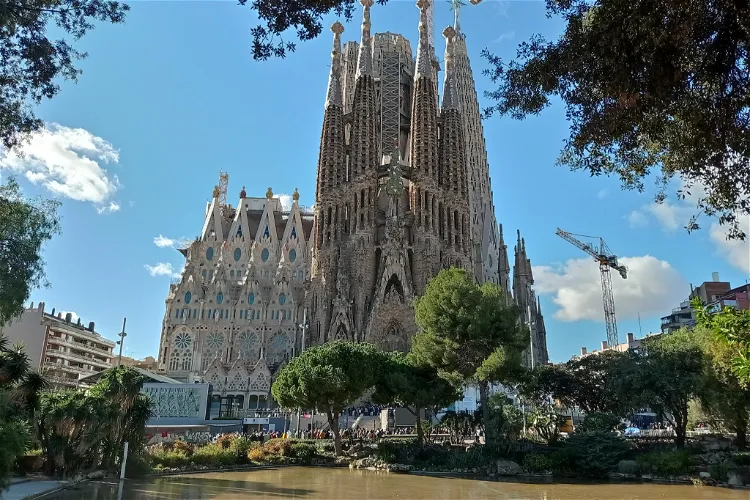
Sagrada Família
BarcelonaThe Sagrada Família, also known as the Temple Expiatori de la Sagrada Família, is an unfinished church located in Barcelona, Catalonia, Spain. This architectural marvel is widely recognized as the masterpiece of the renowned architect Antoni Gaudí. 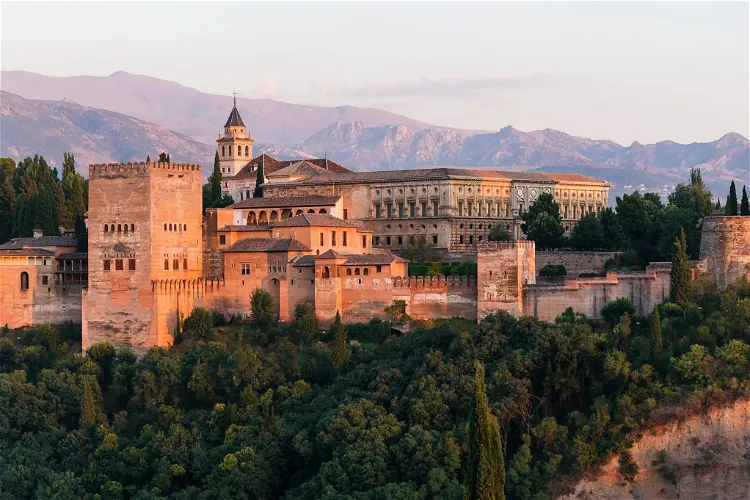
Alhambra
GranadaThe Alhambra, located in the city of Granada in the Andalusian region of Spain, is a historical building that was originally used as a palace and fortress. It was constructed with the architectural style of Islamic Arab, specifically the Kalʿatü'l-Hamrâ. Today, the Alhambra serves as a museum, offering visitors a glimpse into its rich history and architectural beauty.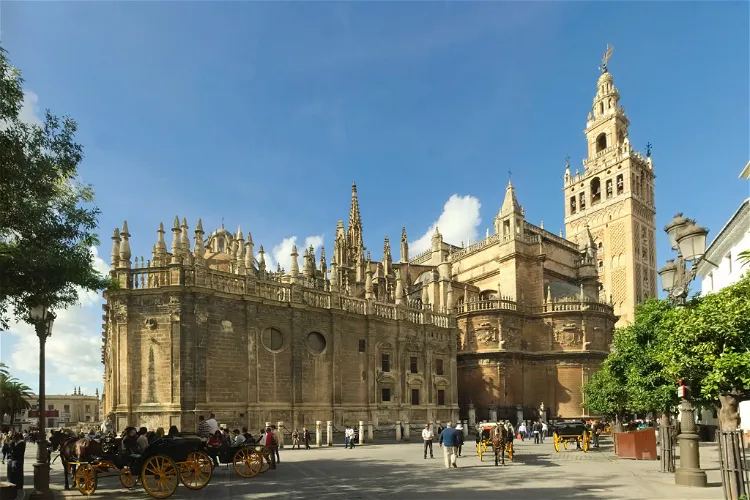
Seville Cathedral
SevilleSeville Cathedral, also known as the Cathedral of Saint Mary of the See, is a significant landmark in Seville, Spain. It holds the distinction of being the world's largest Gothic church and the third largest church overall. This Roman Catholic cathedral is a testament to the architectural prowess of the Gothic era and offers a unique insight into the religious history of Spain.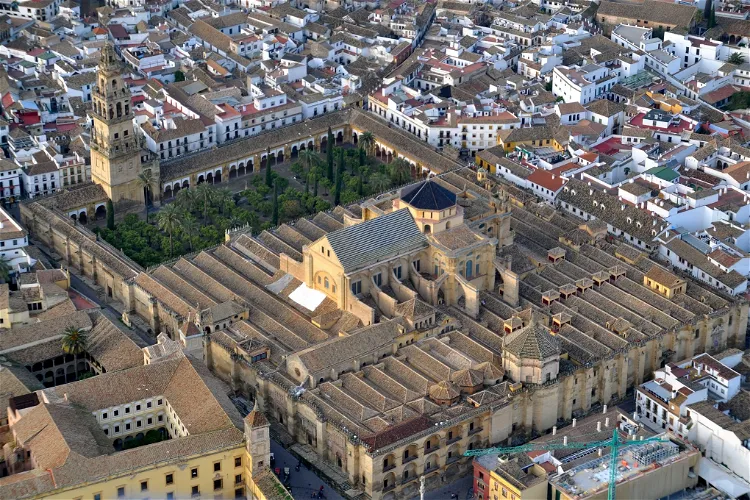
Mosque Cathedral of Córdoba
CórdobaThe Mosque-Cathedral of Córdoba, also known as the Cathedral of Our Lady of the Assumption, is a significant historical and architectural site located in the city of Córdoba, Spain. This structure has served as both a mosque and a cathedral over the centuries, reflecting the city's rich cultural and religious history.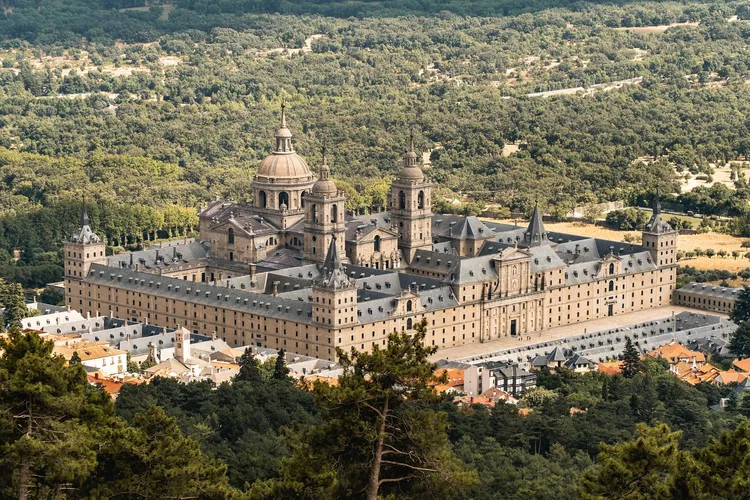
Royal Site of San Lorenzo de El Escorial
MadridEl Escorial, located in the Madrid Autonomous Region at the foot of the Sierra de Guadarrama mountain, is a significant religious and cultural structure. It comprises a monastery, palace, library, and other sections. This complex was used as a residence by King Philip II of Spain, adding to its historical significance.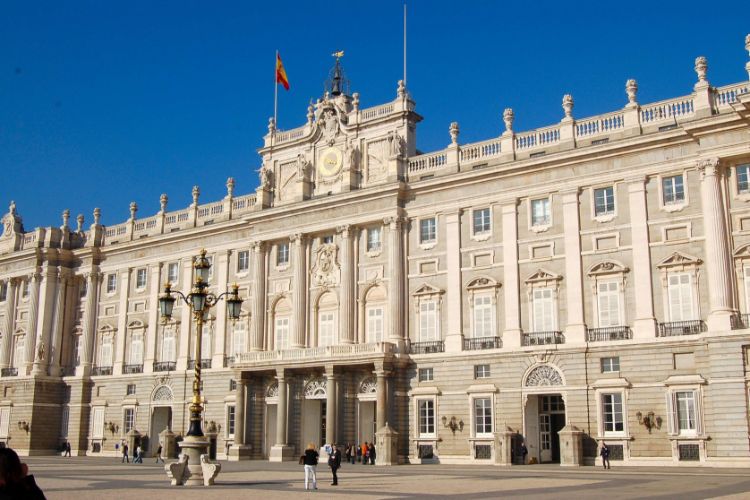
Royal Palace of Madrid
MadridThe Royal Palace of Madrid is the official residence of the Spanish royalty but is used only for state ceremonies. Visitors can see the marvelous interior decorations, made using various materials, from marble to mahogany. The palace is also home to Royal Armoury of Madrid. Surrounded by large and p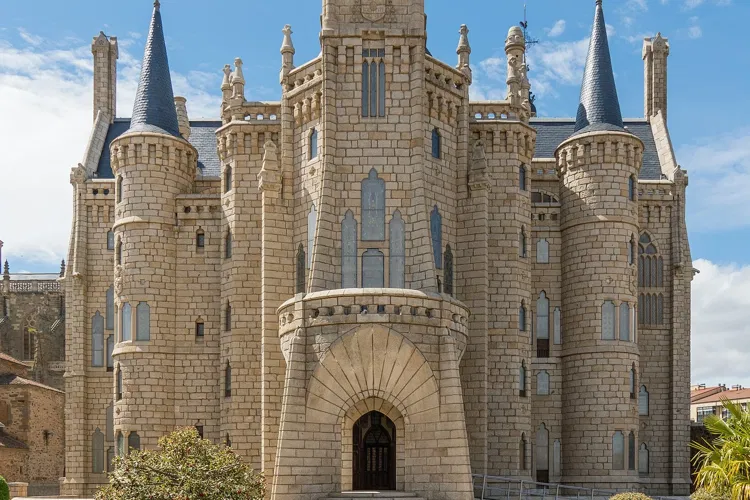
Palace of Gaudí
AstorgaThe Episcopal Palace of Astorga, a masterpiece by the renowned Catalan architect Antoni Gaudí, stands as a testament to the Catalan Modernisme style. Constructed between 1889 and 1913, this architectural marvel is one of only three buildings by Gaudí outside Catalonia. Its unique design and historical significance make it a fascinating destination for those interested in architecture and history.
Granada Cathedral
GranadaThe Granada Cathedral, also known as Santa María de la Encarnación de Granada, is a significant religious site located in Granada, southern Spain. It serves as the seat of the Archbishop of Granada. The cathedral's rich history and architectural grandeur make it a notable point of interest for visitors.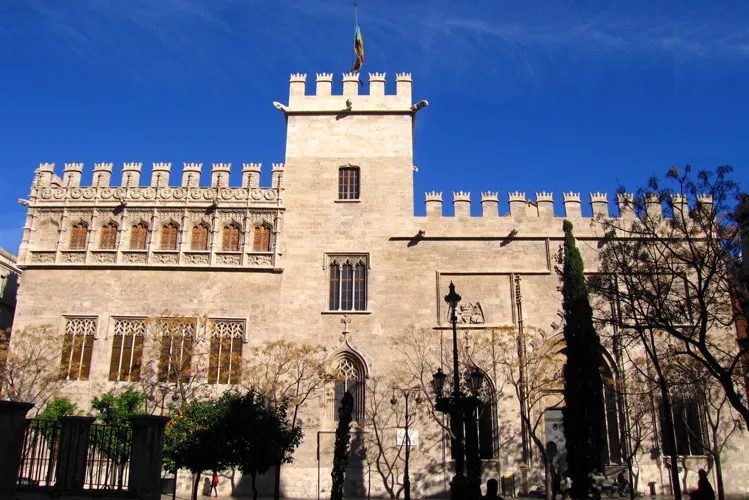
The Silk Exchange
ValenciaThe Silk Exchange, also known as Lonja de la Seda or Llotja de la Seda, is a significant historical building in Valencia, Spain. It showcases the late Valencian Gothic architectural style, making it a unique attraction for those interested in history and architecture.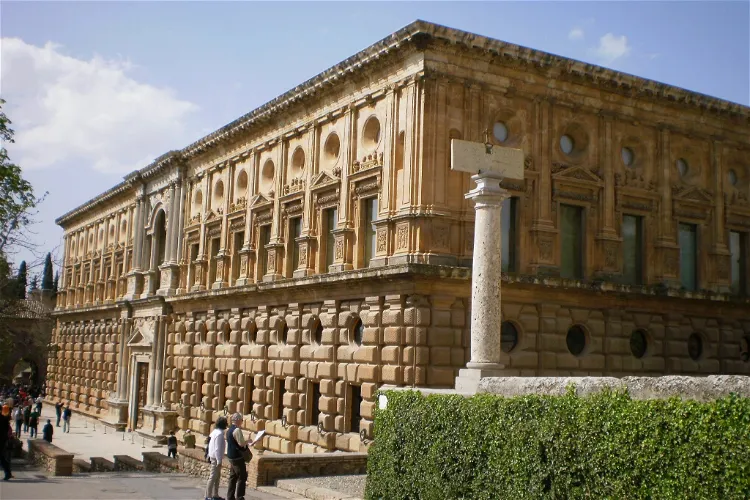
Museum of the Alhambra
GranadaThe Alhambra Museum, previously known as the National Museum of Hispano-Muslim Art, is located in the city of Granada. It is situated in the southern wing of the ground floor of the Palace of Charles V in the Alhambra. This location provides a unique setting for the museum, enhancing the historical and cultural experience for visitors.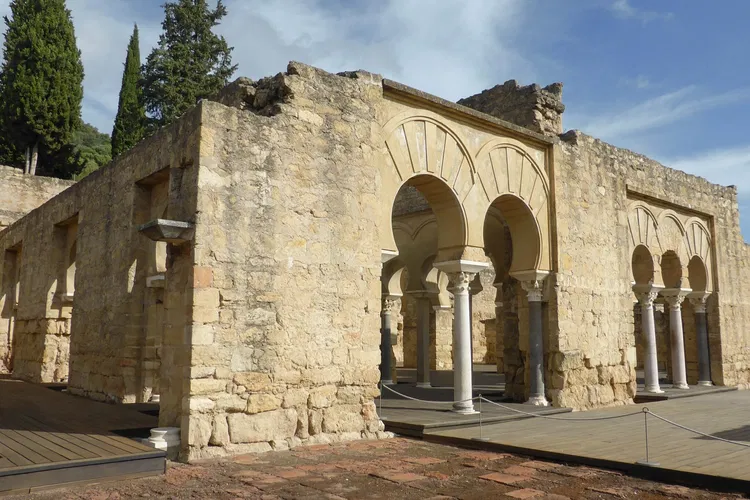
Madinat al-Zahra
CórdobaMadīnat az-zahrāʾ, also known as Medina Azahara, is a historical site located in southern Spain. It is situated approximately eight kilometers west of Córdoba and offers a panoramic view of the valley and the city of Córdoba. This former palace city is a significant part of Spain's rich history and is a fascinating destination for tourists interested in historical and architectural exploration.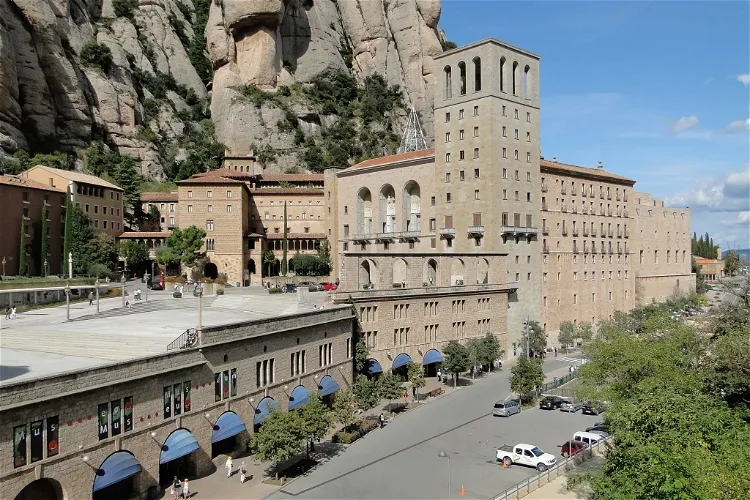
Montserrat Monastery
Monistrol de MontserratThe Montserrat Monastery, a Benedictine abbey, is situated in Catalonia. It is perched at an altitude of 720 meters on the eastern side of the Montserrat mountain, within the municipality of Monistrol de Montserrat. This location offers visitors a unique opportunity to experience the tranquility and beauty of the mountainous landscape while exploring the historical and religious significance of the monastery.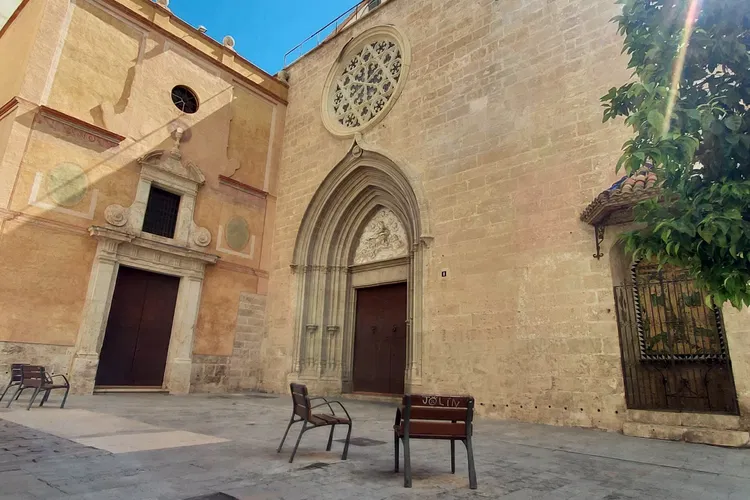
Church of San Nicolás
ValenciaThe Church of St. Nicholas and Peter, also known as the 'Sistine Chapel of Valencia', is one of the city's main attractions. Located in the El Carmen district in the historical center of Valencia, the church is renowned for its ceiling paintings. However, due to its location, it can be somewhat difficult for visitors to find as it is largely surrounded by other buildings.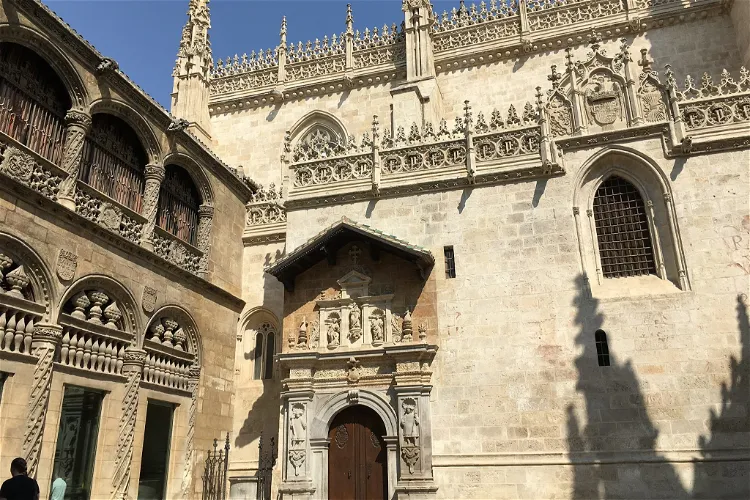
Royal Chapel of Granada
GranadaThe Cathedral of Granada, also known as Santa María de la Encarnación de Granada, is a significant religious site in southern Spain. It serves as the seat of the Archbishop of Granada. This historical monument is located in the heart of Granada, making it easily accessible for tourists.
Church of Colònia Güell
Santa Coloma de CervellóThe church was commissioned by Gaudí's patron Eusebi Güell, but unfortunately, there was not enough money to finish it in the end. Gaudí managed to build only the crypt, but it is still worth visiting mainly for its exquisite interior and stained glass windows. It was declared a World Heritage Site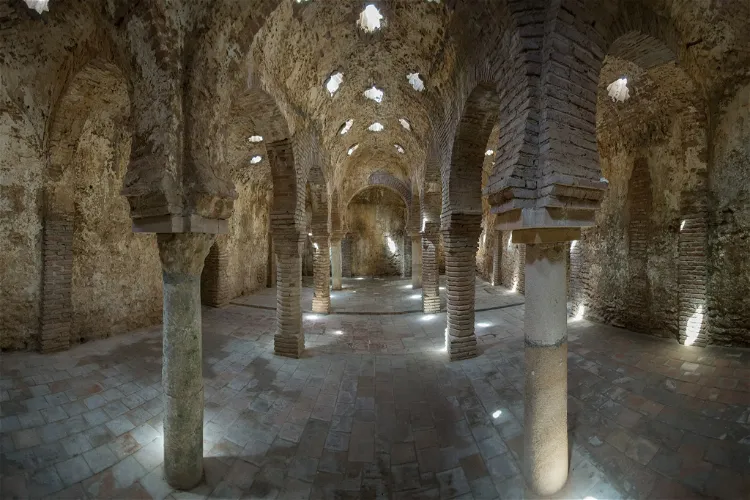
Arab Baths
RondaVisit the richly ornate spa complex that is really extraordinarily well preserved. Situated in a charming old quarter, too.
Museo do Pobo Galego
Santiago de CompostelaThe Museo do Pobo Galego, or Museum of the Galician People, is a private institution located in Santiago de Compostela. It was established in 1976 and opened to the public in 1977. The museum is housed in the former Dominican convent San Domingos de Bonaval, adding a layer of historical significance to the site.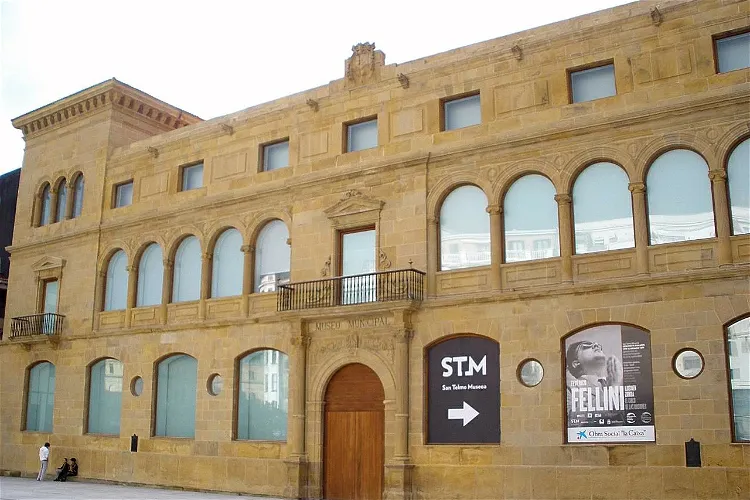
San Telmo Museum
San SebastiánThe San Telmo Museum is situated in a prime location in San Sebastián, Spain. It is nestled on the plaza de Zuloaga, adjacent to the scenic Mount Urgull. This location not only offers easy access to the museum but also provides visitors with stunning views of the surrounding landscape.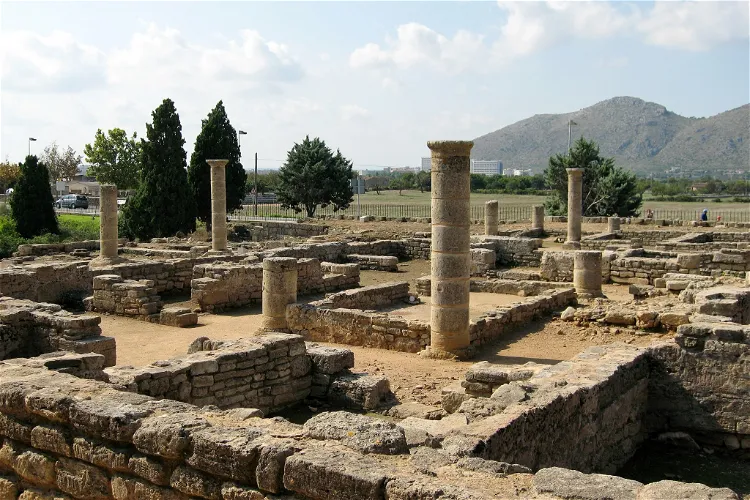
Roman City of Pollentia
AlcudiaPollentia, located in the municipality of Alcudia, is the most significant Roman archaeological site in Mallorca, Spain. This ancient city offers a unique glimpse into the Roman era, providing a rich historical context for visitors.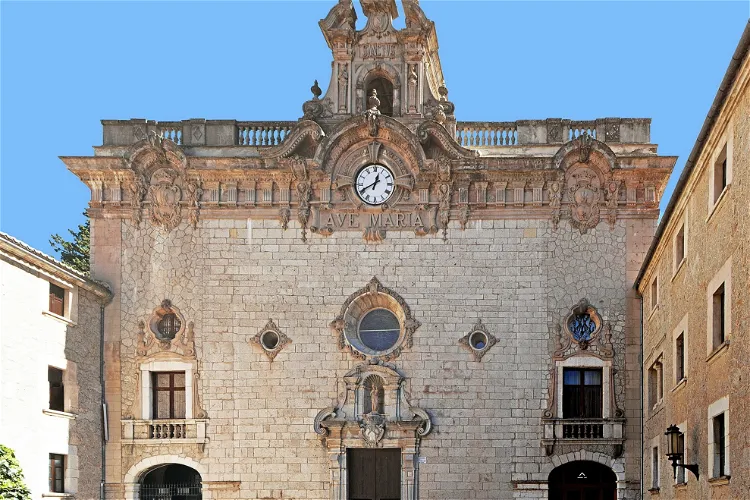
Lluc Sanctuary
EscorcaThe Lluc Sanctuary, also known as Santuari de Santa Maria de Lluc, is a significant religious site located in the Spanish municipality of Escorca. It is situated about 400 meters above sea level, nestled in the Tramontana mountain range on the island of Mallorca. This location offers visitors a unique blend of spiritual significance and natural beauty.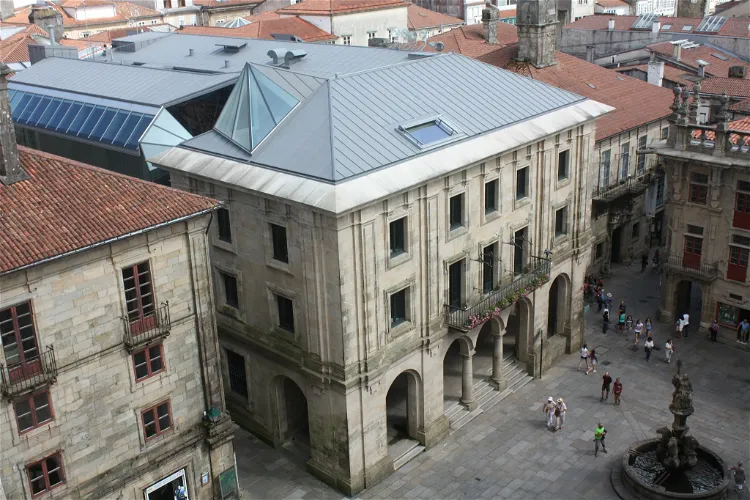
Museum of Pilgrimages and Santiago
SantiagoThe Museum of Pilgrimages and Santiago, established in 1951, is a cultural institution dedicated to the phenomenon of pilgrimage. It is situated in Santiago de Compostela, a city known for the Camino de Santiago, the cathedral, and the Jacobean phenomenon of the tomb of the apostle Santiago the Greater. The museum provides a deep insight into the cultural and historical aspects of these significant religious events and places.
Castillo de Santa Bárbara - Museo de la Ciudad de Alicante
AlicanteCastillo de Santa Bárbara (The castle of Santa Bárbara) is a castle in Alicante, on Mount Benacantil, a rocky mass with a height of 167 meters that borders the sea and from which you can see the entire bay of Alicante and its terrestrial surroundings, giving it a big strategic advantage. The Museo d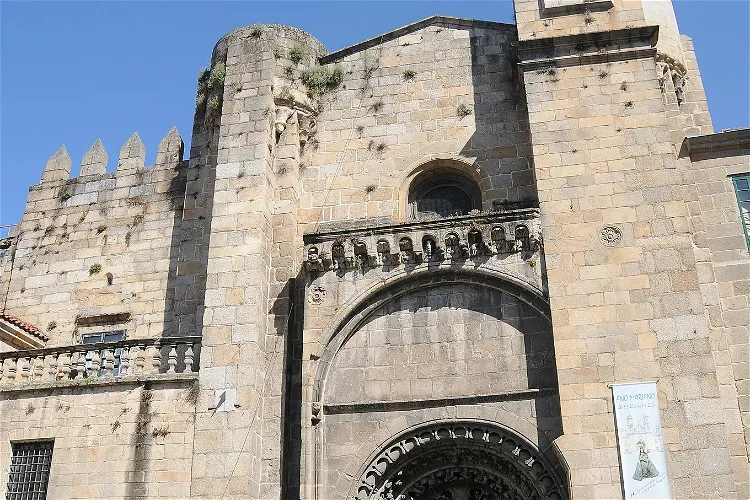
Ourense Cathedral
OurenseThe Ourense Cathedral has a history marked by destruction and rebirth. It was destroyed during Muslim incursions and later rebuilt during the 12th and 13th centuries, a period known for Romanesque architecture. The construction of the cathedral in its current form began in 1160 and was completed in the mid-13th century. This history of resilience and transformation is reflected in the cathedral's architecture, making it a fascinating site for those interested in historical architecture.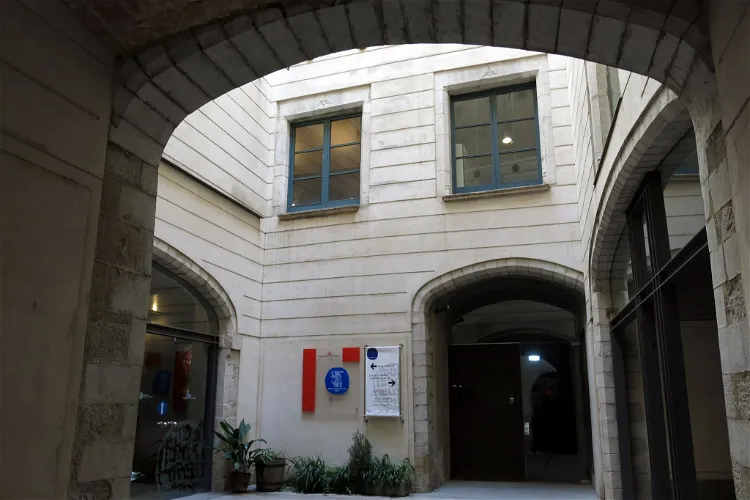
Museum of Jewish History
GeronaThe Museum of Jewish History in Gerona is situated in the Bonastruc ça Porta center, right in the heart of the Jewish quarter of Gerona. This location is steeped in history, providing an authentic backdrop to the museum's exhibits and collections.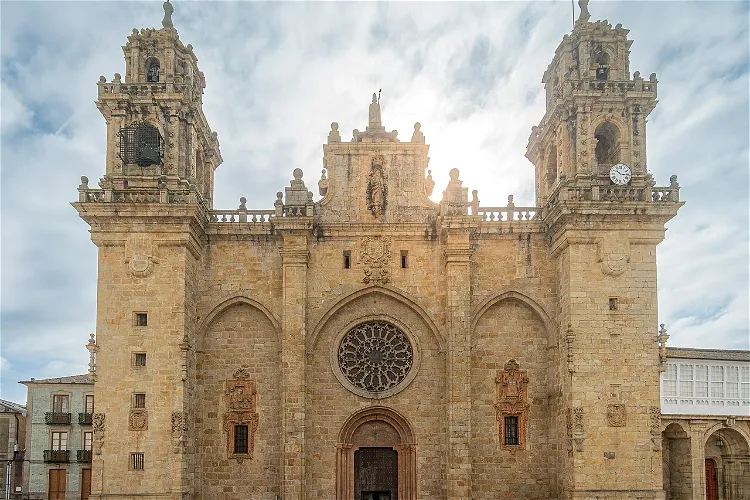
Mondoñedo Cathedral
MondoñedoMondoñedo Cathedral, also known as the Basilica of the Assumption of Our Lady, is one of the episcopal seats of the Diocese of Mondoñedo-Ferrol in Galicia, Spain. It is often referred to as the 'Kneeling Cathedral' due to its perfect proportions and modest height. The cathedral was declared a National Monument on May 23, 1902, and was named a basilica by Pope John XXIII in 1959.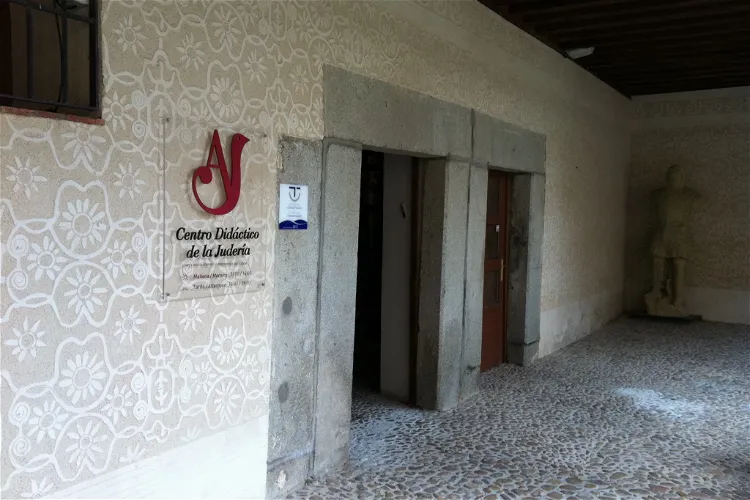
Didactic Center of the Jewish Quarter
SegoviaThe Didactic Center of the Jewish Quarter in Segovia is a Jewish educational center that was opened in 2004. It is located in the Jewish Quarter of the city of Segovia, Spain. The center is housed in the former home of Abraham Senior, a major rabbi and accountant of Castile.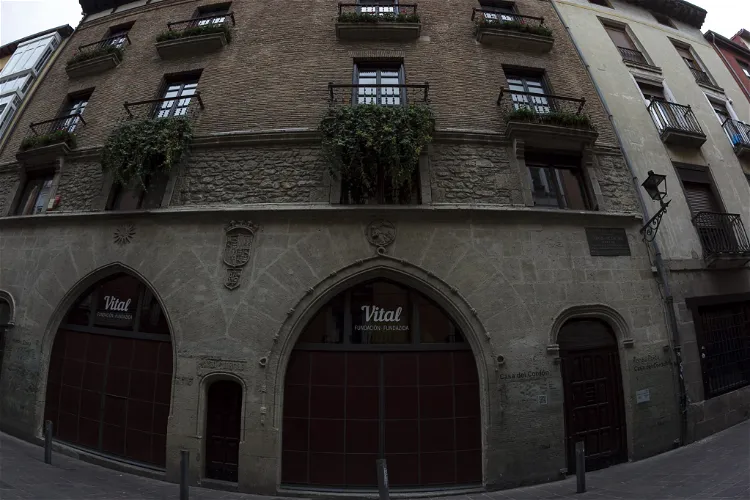
House of Cordón
Vitoria-GasteizThe Casa del Cordón is a significant historical building located in the Cuchillería street of the Old Quarter in Vitoria-Gasteiz, in the province of Alava, Basque Country, Spain. This monumental house or palace is a notable example of civil Gothic architecture and has been a residence for illustrious figures of its time.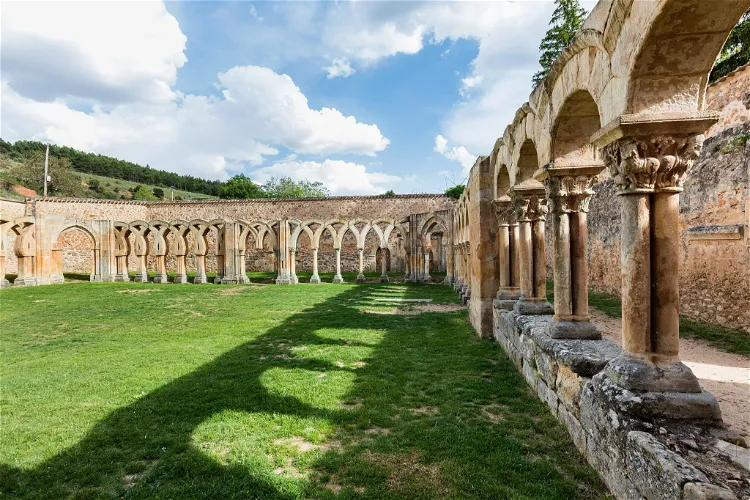
Monastery of San Juan de Duero
SoriaSan Juan de Duero, also known as Arcos de San Juan de Duero, is a significant site of Castilian Romanesque architecture. It is situated on the outskirts of the city of Soria, in the region of Castilla y León, Spain. This historical site serves as the Medieval Section of the Numantine Museum, offering visitors a glimpse into the architectural style and history of the period.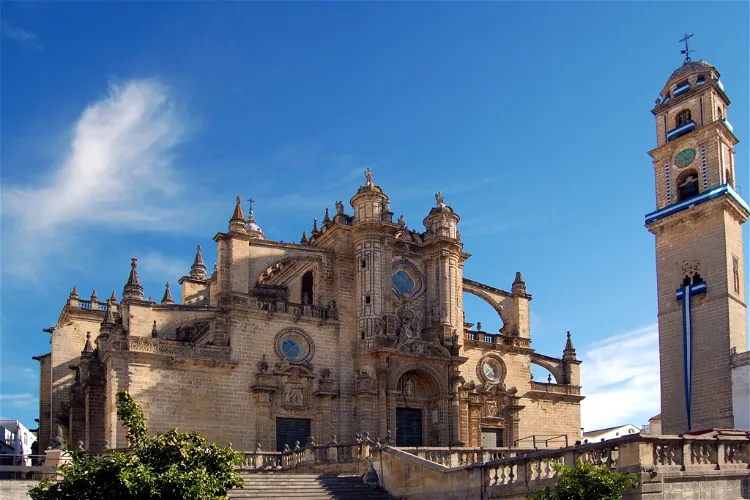
Cathedral of Jerez de la Frontera
Jerez de la FronteraThe Cathedral of the Holy Savior, a Catholic cathedral, is situated in the city of Jerez de la Frontera, within the autonomous community of Andalusia in Spain. This cathedral serves as a significant religious and cultural landmark in the region.
Tower of Infantado
PotesToday, the Tower of Infantado serves as an exhibition center, showcasing various displays that reflect its rich history. Recognized as a Site of Cultural Interest since 1985, it offers visitors a unique insight into the region's past.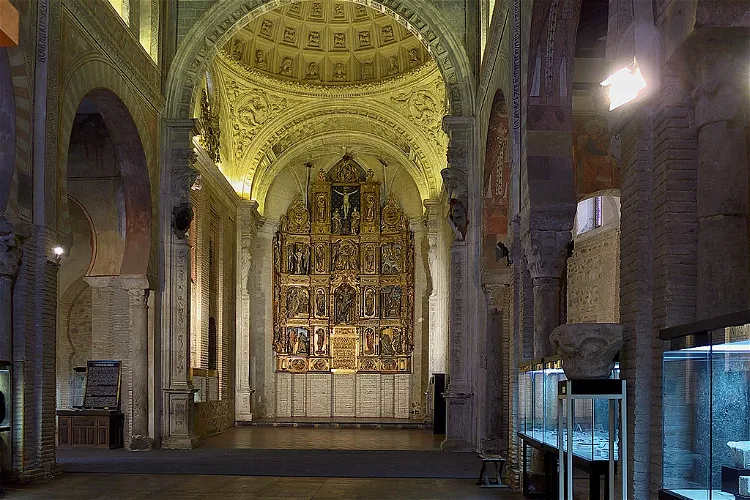
Church of San Román
ToledoThe Iglesia de San Román is a significant historical site in Toledo, Spain. Constructed in the 13th century, the church is a prime example of the Mudéjar architectural style, a unique blend of Christian and Islamic influences that is characteristic of the period. The church's design and construction reflect the cultural and religious diversity of Toledo during the Middle Ages.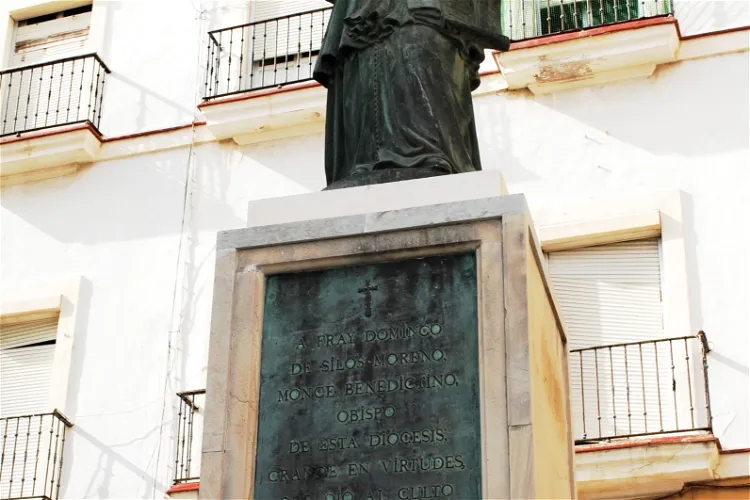
Women's Hospital
CádizThe Hospital de Nuestra Se ora del Carmen, situated in the city of Cádiz, Spain, is a noteworthy example of Baroque architecture from the mid-18th century. The building was designed by Pedro Luis Gutiérrez de San Martín, a master architect from Seville. This historical site offers a glimpse into the architectural style and cultural heritage of the period.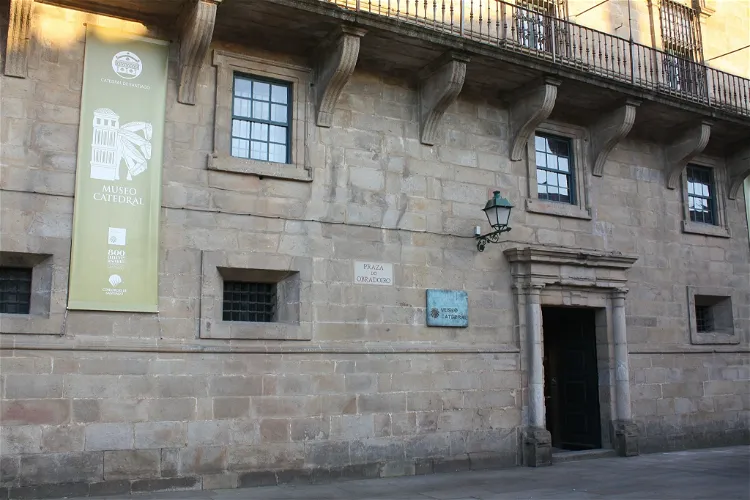
Santiago Cathedral Museum
Santiago de CompostelaThe Santiago de Compostela Cathedral Museum is a significant institution that houses a wide range of artistic and archaeological works. These works are owned by the Santiago de Compostela Cathedral and cover a broad timeline from the Roman era to the present day. This extensive collection provides a unique opportunity for visitors to explore the rich history and culture of the region through the various exhibits.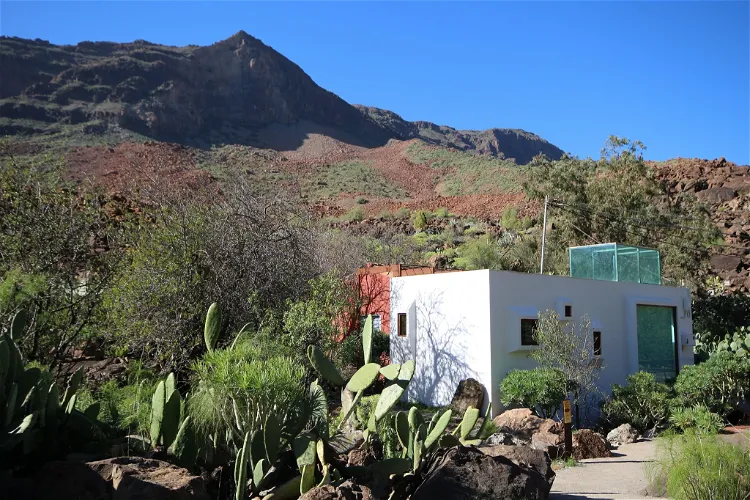
Necropolis of Arteara
San Bartolomé de TirajanaThe Necropolis of Arteara, located on the island of Gran Canaria in the Canary Islands, Spain, is an archaeological site of significant historical importance. It is the largest cemetery of the island's aborigines, providing a unique insight into the burial practices and customs of the early inhabitants of the island. The site is situated in the south of the island, on the right bank of the Fataga ravine next to the town of Arteara, in the municipality of San Bartolomé de Tirajana.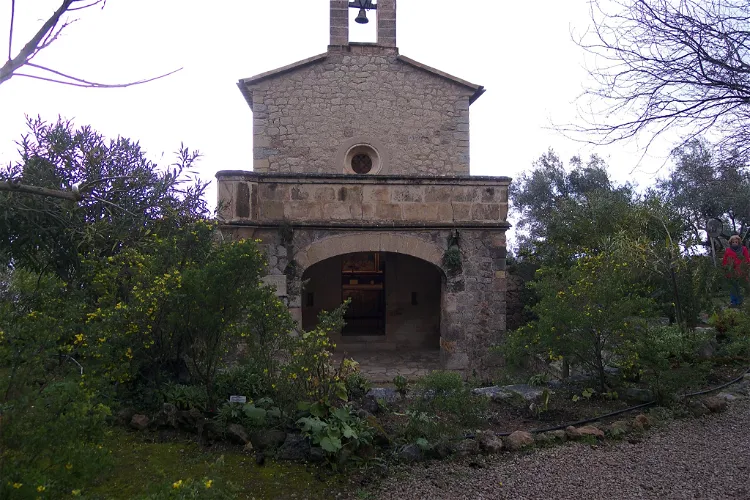
Miramar Monastery
ValldemossaFounded by King Jaume II in 1276, it originally served as a missionary school. There is a small museum now.
Royal Quarters of Santo Domingo
GranadaThe Cuarto Real de Santo Domingo, located in the Realejo quarter of Granada, Spain, is a former Nasrid palace and convent. This historical site offers visitors a glimpse into the past, showcasing the architectural and cultural heritage of the Nasrid dynasty.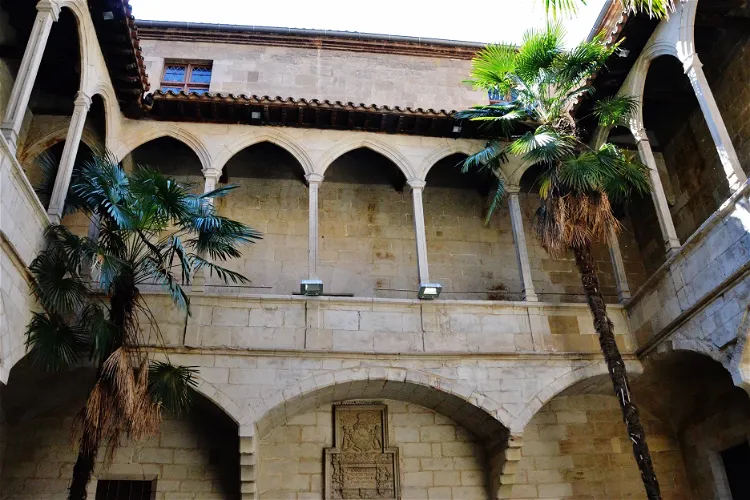
Old hospital of Santa Maria
LleidaThe Old Hospital of Santa Maria is a significant historical site in the Spanish city of Lleida. It is a prime example of Catalan Gothic civil architecture from the 15th and 16th centuries. The building's structure is simple, with a square layout and a square courtyard in the center. The ground floor has thick walls to support the weight of the roof beams and thinner walls on the upper floors. The building was declared an Architectural Artistic Monument by royal order on March 15, 1920.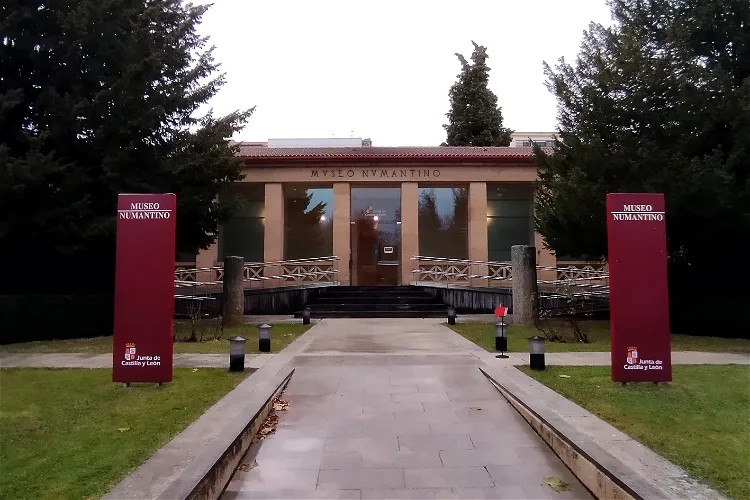
Numantine Museum of Soria
SoriaThe Numantine Museum of Soria is a significant cultural institution in Soria, Spain. It offers a comprehensive exploration of the prehistory and history of the province of Soria, presented through a rich collection of art and archaeological artifacts. The museum's focus on the region's past provides visitors with a deep understanding of the area's cultural and historical development.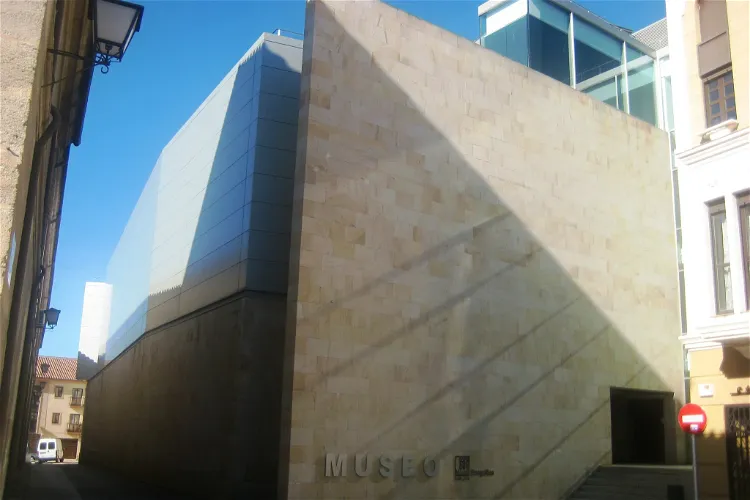
Ethnographic Museum of Castilla y León
ZamoraThe Ethnographic Museum of Castilla y León is situated in the city of Zamora. It is one of the four museums that form the Network of Regional Museums of Castilla y León. This network includes the Museum of Iron and Mining of Castilla y León, the Museum of Contemporary Art of Castilla y León, and the Museum of Human Evolution.
Diocesan Museum
PalenciaThe Diocesan Museum of Palencia, inaugurated in 1973, is a museum dedicated to the custody and study of the sacred art of the diocese. It is located in the Episcopal Palace of the capital of Palencia, a significant historical site in itself.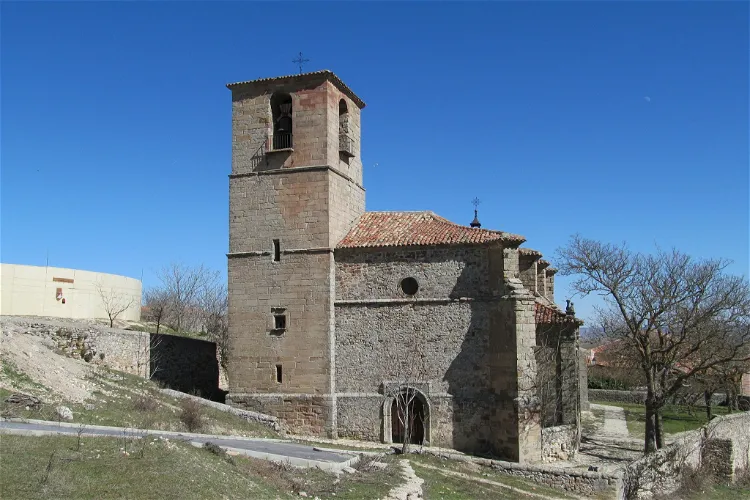
Church of the Holy Trinity
AtienzaThe Church of the Holy Trinity, located in Atienza, is a Romanesque style Catholic church that dates back to the late 12th century. This historical monument offers a glimpse into the architectural style and religious practices of the period. Its unique design and historical significance make it a point of interest for tourists visiting Atienza.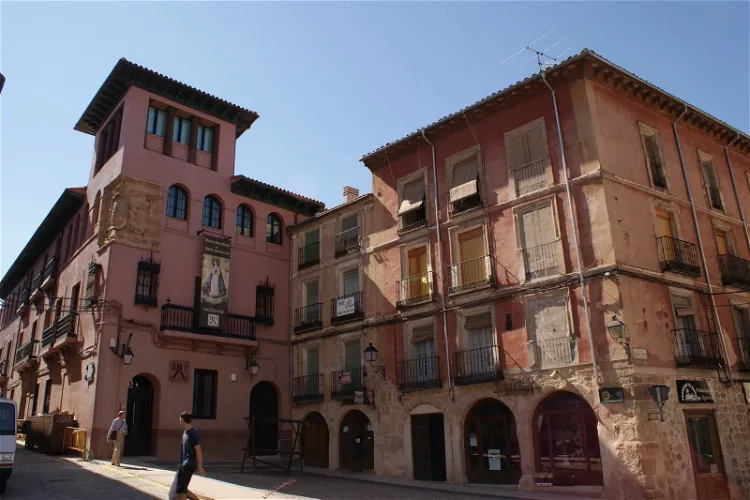
Diocesan Museum
SigüenzaThe Diocesan Museum of Ancient Art in Sigüenza is housed in a 16th-century neoclassical mansion known as the 'Antigua Casa de los Barrena'. This historic building is conveniently located in the heart of the city of Sigüenza, directly opposite the cathedral. This central location makes it easily accessible for tourists visiting the city.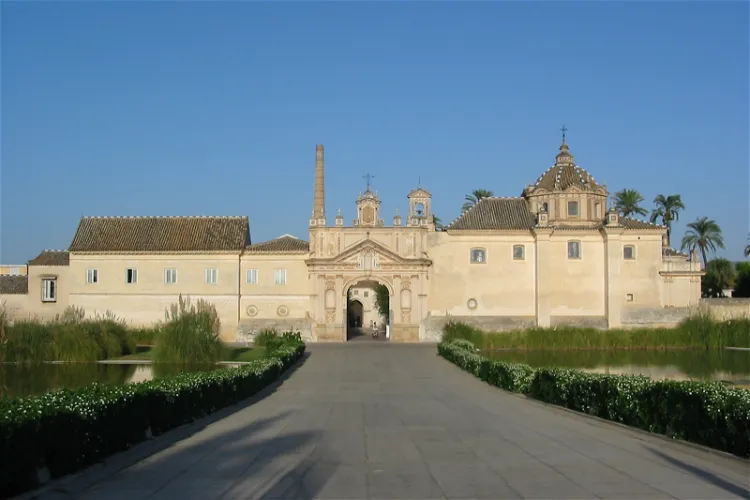
Monastery of the Cartuja
SevilleThe Monastery of Santa María de las Cuevas, also known as La Cartuja, is a former Carthusian monastery located in Seville, the capital of the Andalusia region in Spain. It is situated between the arms of the Guadalquivir on the island of La Cartuja, which got its name from the Carthusian monastery. The monastery was the symbolic center of the Expo 92, the World Exposition 1992 in Seville.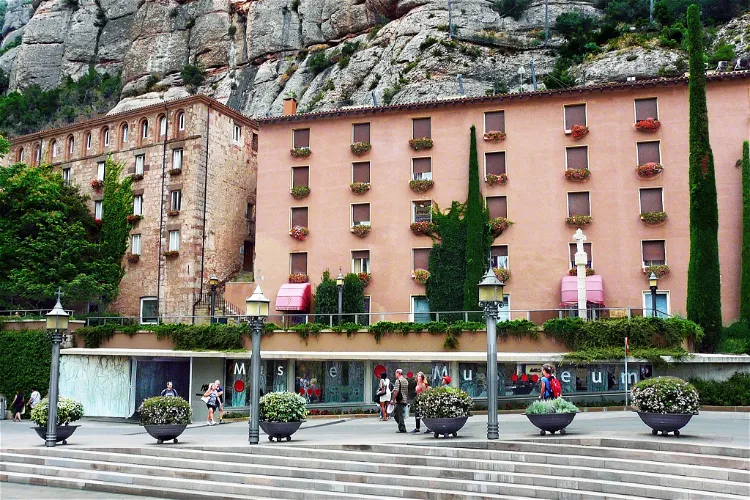
Museum of Montserrat
Monistrol de MontserratThe Museum of Montserrat is located within the Abbey of Montserrat, a thousand-year-old institution. It showcases a selection of the most outstanding artistic and archaeological heritage. This includes a wide range of collections, each unique and different, providing a comprehensive view of various historical periods and cultures.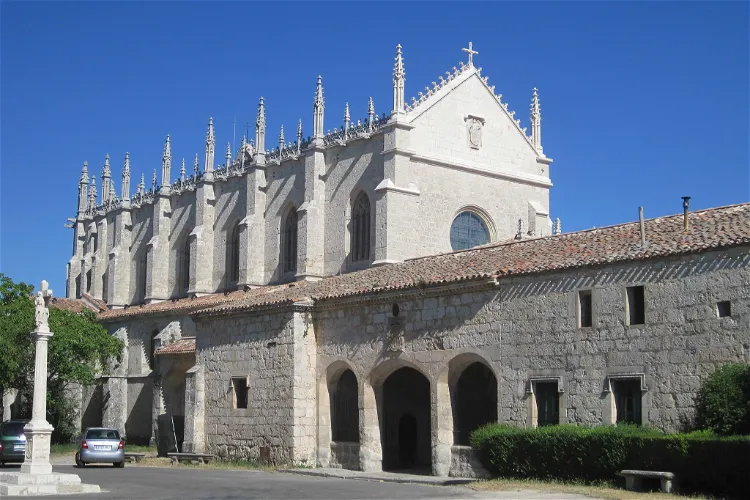
Miraflores Charterhouse
BurgosLa Chartreuse Notre-Dame de Miraflores, an ancient Carthusian monastery, is located on a hill known as Miraflores. This historical site is situated approximately three kilometers from the city center of Burgos, in the Fuentes Blancas park. The serene surroundings and the historical significance of the monastery make it an interesting site for tourists visiting Burgos.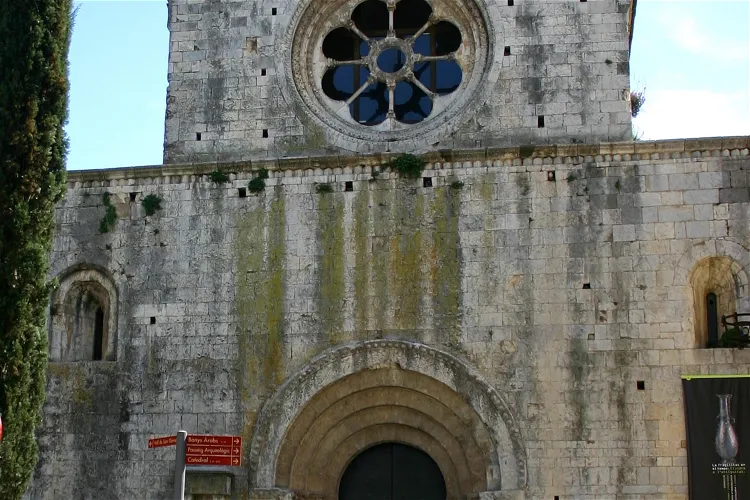
Archaeology Museum of Catalonia
GeronaThe Archaeology Museum of Catalonia in Gerona is housed in the historic monastery of San Pedro de Galligans. Established in 1857, the museum continues to operate from this location, offering visitors a unique blend of history and culture. The museum's setting in a former monastery adds a layer of historical significance to the artifacts on display.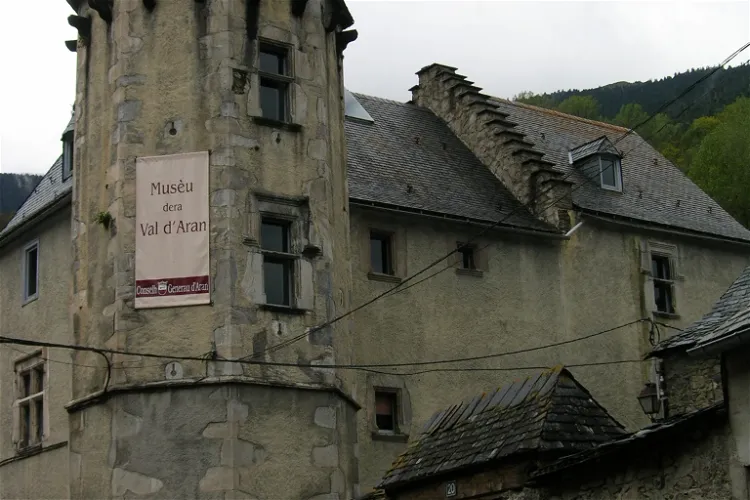
Musèu dera Val d'Aran
Viella Mitg AránThe Museo del Valle de Arán, also known as Musèu dera Val d'Aran, is a regional museum located in Viella. It is dedicated to the history, art, ethnography, and ethnology of the Aran Valley. The museum is housed in a late Gothic-style manor house known as the Torre del general Martinón. It also occupies the Casa Joanchiquet in Vilamós and the church of San Juan de Artiés. The museum's main objective is to preserve the Aranese culture in all its aspects, through the different stages and epochs of the Aran Valley.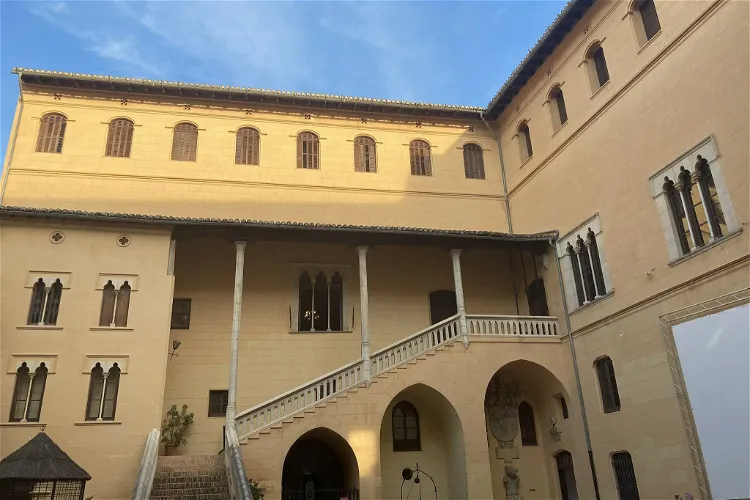
Ducal Palace of Gandia
GandíaThe Ducal Palace of Gandía, a significant monument in the city of Gandía, has seen numerous restorations over the years. This important example of Valencian civil Gothic architecture is a testament to the city's rich history and cultural heritage.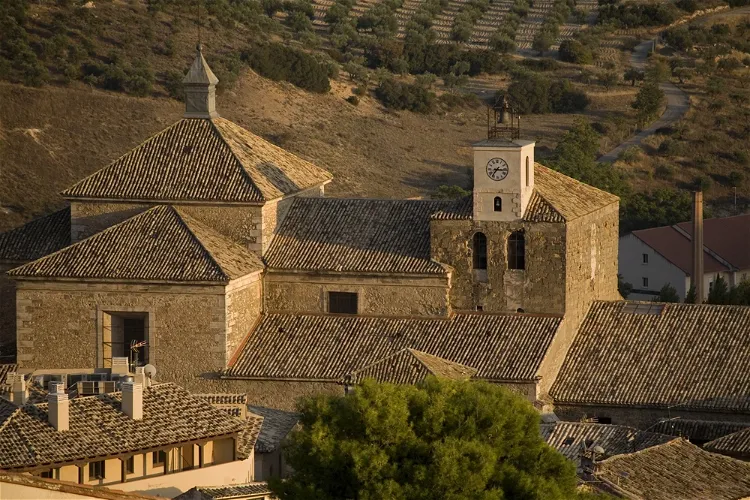
Collegiate Church
PastranaThe Collegiate Church of the Assumption is not just a place of worship, but also a museum housing a significant collection of tapestries and a wide variety of art pieces. These include paintings, altars, goldsmithing elements, and reliquaries. This diverse collection provides a comprehensive overview of the artistic and cultural richness of the region.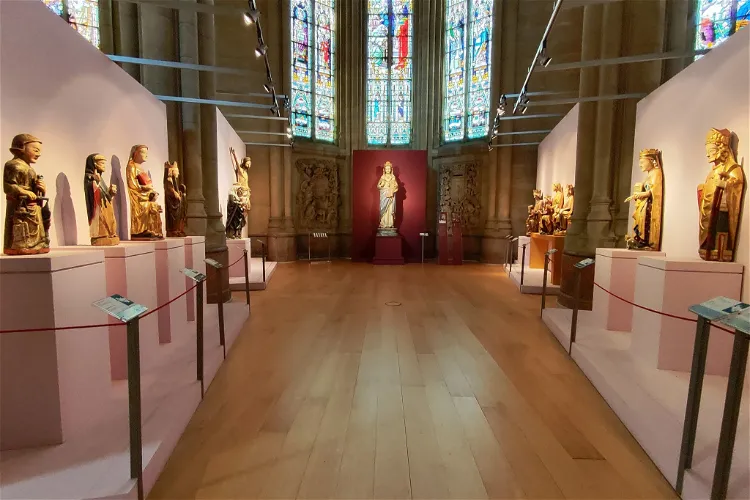
Diocesan Museum of Sacred Art
Vitoria-GasteizThe Diocesan Museum of Sacred Art, also known as Elizbarrutiko Arte Sakratuaren Museoa, is situated in the ambulatory of the Cathedral of Saint Mary Immaculate. This museum is located in the city of Vitoria-Gasteiz, Alava, in the Basque Country of Spain. It is a significant cultural and historical site that showcases a wide range of sacred art.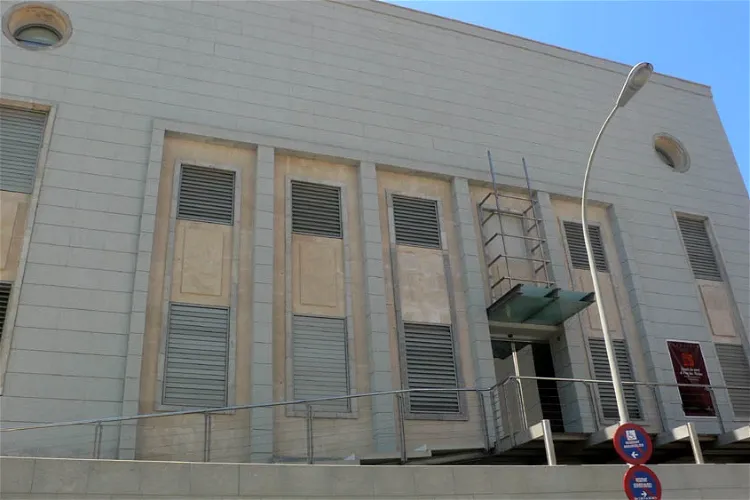
Monographic Museum and Necropolis
IbizaThe Puig des Molins is a significant historical site located in Ibiza Town, on the Island of Ibiza, in the Balearic Islands, Spain. This location is known for its rich history and cultural significance, making it an interesting destination for tourists interested in history and archaeology.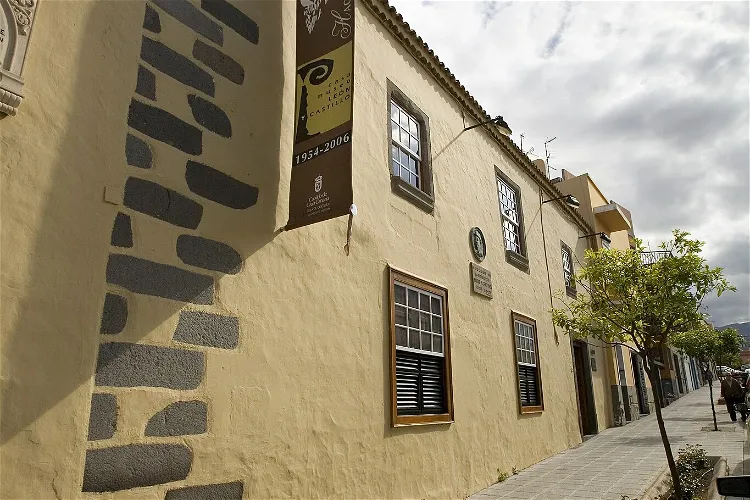
León y Castillo House Museum
TeldeThe León y Castillo House Museum is a public institution that is part of the Ministry of Culture, Historical Heritage and Museums of the Cabildo de Gran Canaria. It is situated in the city of Telde, on the island of Gran Canaria, which is part of the Canary Islands in Spain.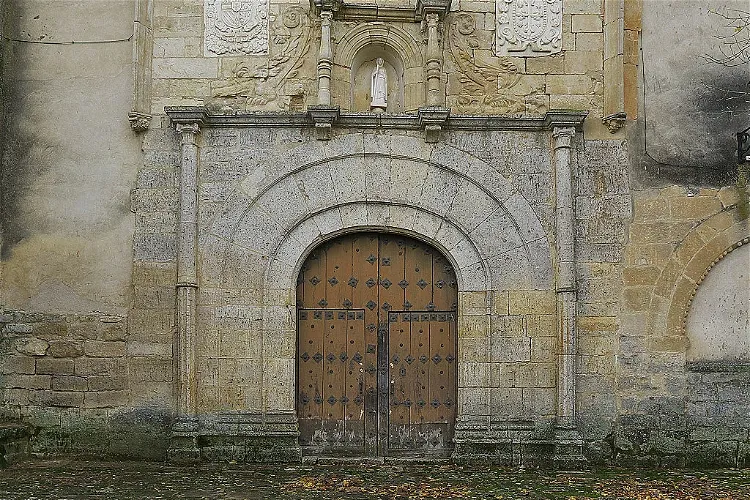
Monastery of Sancti Spiritus
ToroWithin the Monastery of Sancti Spiritus el Real, visitors can find the Museum of Sacred Art of Toro. This museum is home to a unique collection of polychrome sargas from the 16th century. These sargas depict scenes from the Passion, taken from large-scale Italo-Flemish prints. This collection provides a unique insight into the religious art of the period and is a must-see for any art enthusiasts or those interested in religious history.
National Archaeological Museum of Tarragona
TarragonaThe National Archaeological Museum of Tarragona, also known as Museu Nacional Arqueològic de Tarragona or MNAT, is a public museum situated in the city of Tarragona in Catalonia, Spain. The museum is home to a variety of elements and remains that reflect the city's rich history and heritage.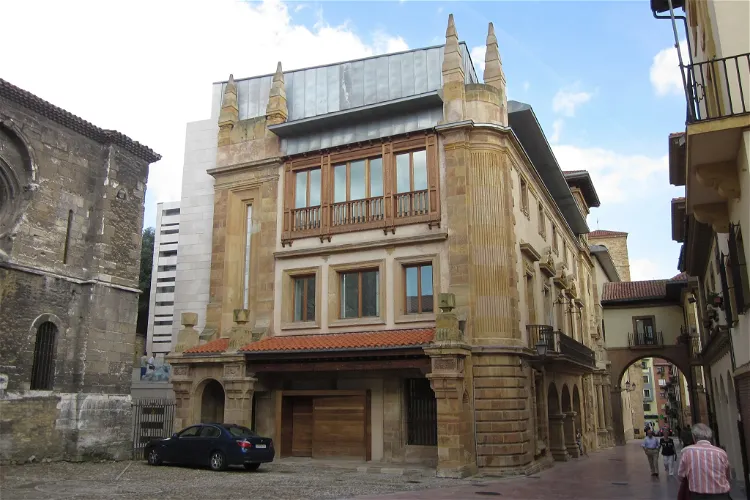
Archaeological Museum of Asturias
OviedoThe Archaeological Museum of Asturias, situated in Oviedo, is a regional institution committed to the preservation of the cultural and archaeological heritage of the Principality of Asturias. The museum's collection has been steadily growing since its establishment, primarily through discoveries, donations, and acquisitions of objects.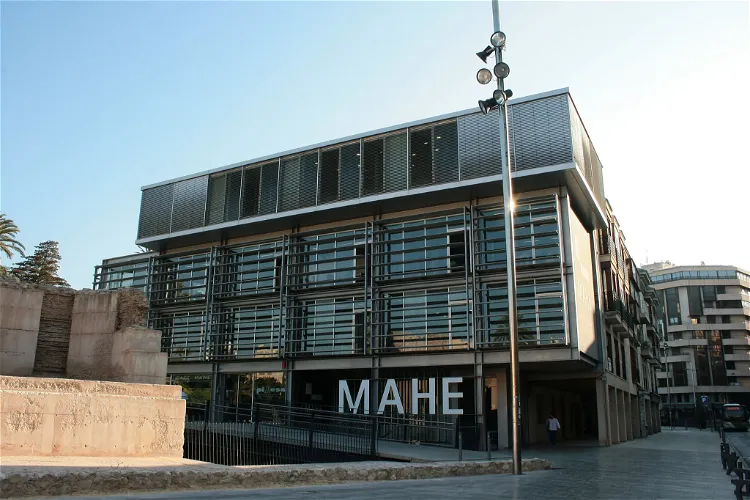
Museo Arqueológico y de Historia de Elche
ElcheThe Museo Arqueológico y de Historia de Elche (MAHE) is an archaeological museum situated in the Spanish city of Elche, within the province of Alicante. It is a significant regional archaeological reference point, offering a comprehensive overview of the city's various historical stages.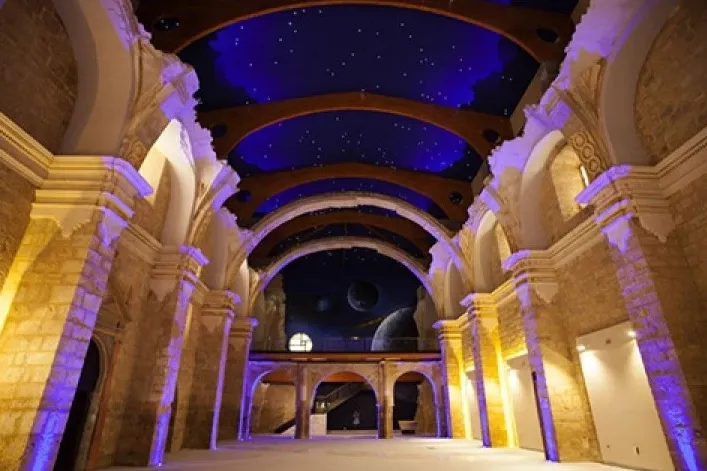
San Pedro Cultural
Becerril de CamposSan Pedro Cultural is a unique monument that was inaugurated on March 19, 2015. It was built from the ruins of the Church of San Pedro in the town of Becerril de Campos. This town was declared the most beautiful village in Spain by internet users in 2016. This makes it a significant location for tourists who are interested in history, architecture, and natural beauty.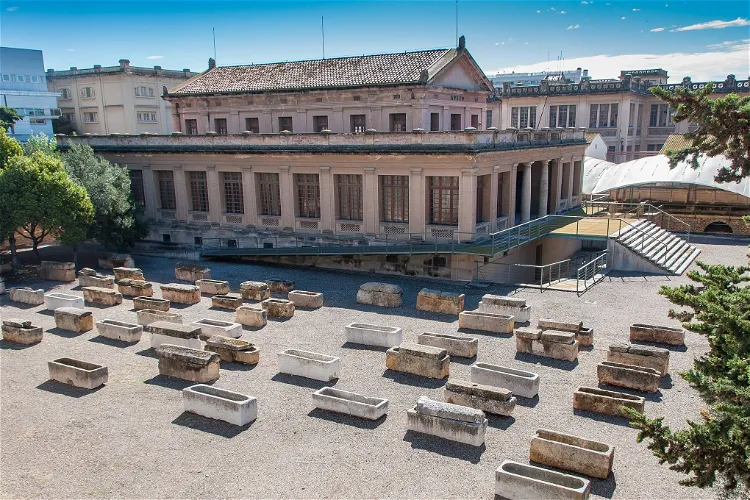
Roman Necropolis of Carmona
CarmonaThe Carmona Archaeological Ensemble, also known as CAC or CAE, is an archaeological site located in the Spanish municipality of Carmona. The site is represented by a Roman necropolis and amphitheater, which date back to the 1st and 2nd centuries AD. These historical structures provide a glimpse into the past and offer a unique opportunity to explore the rich history of the region.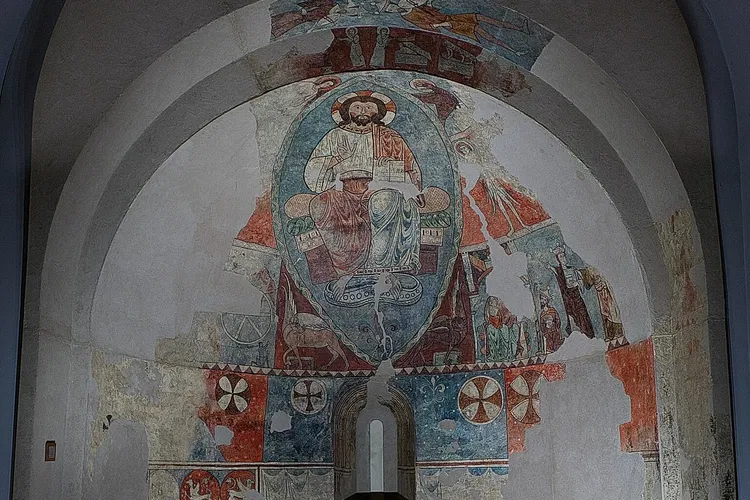
Barbastro Cathedral
BarbastroThe Cathedral of the Assumption of the Virgin Mary, also known as Catedral de Santa María de la Asunción, is a significant landmark in Barbastro, Spain. It serves as the cathedral of the Diocese of Barbastro-Monzón. This cathedral is not only a place of worship but also a historical monument that reflects the rich history and architectural prowess of the region.
Museum of the Mediterranean
Torroella de MontgríThe Museum of the Mediterranean, established in 2003, is situated in the town of Torroella de Montgrí. It is housed in Can Quintana, a historical building dating back to the 16th century. This location adds a touch of historical charm to the museum, making it an interesting destination for tourists who appreciate both history and culture.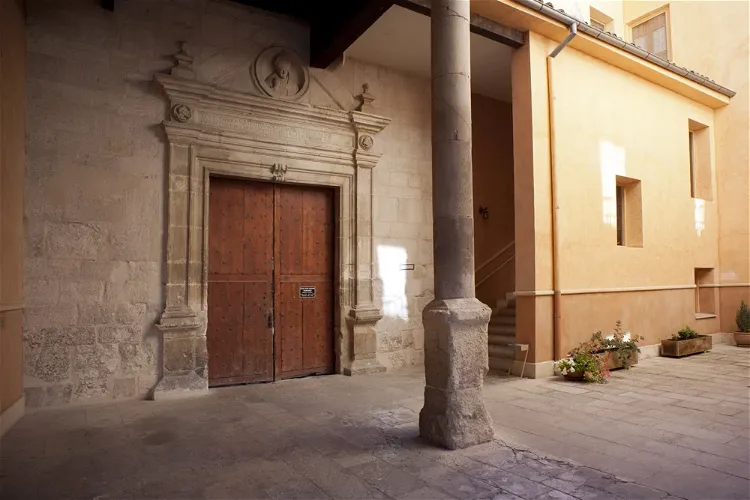
Episcopal Palace of Cuenca
CuencaThe Episcopal Palace is a significant historical building located in the Spanish city of Cuenca. It is home to the Diocesan Museum, which showcases a variety of religious artifacts and artworks. The palace itself is a testament to the city's rich history and architectural prowess, making it a worthwhile visit for those interested in history, architecture, and art.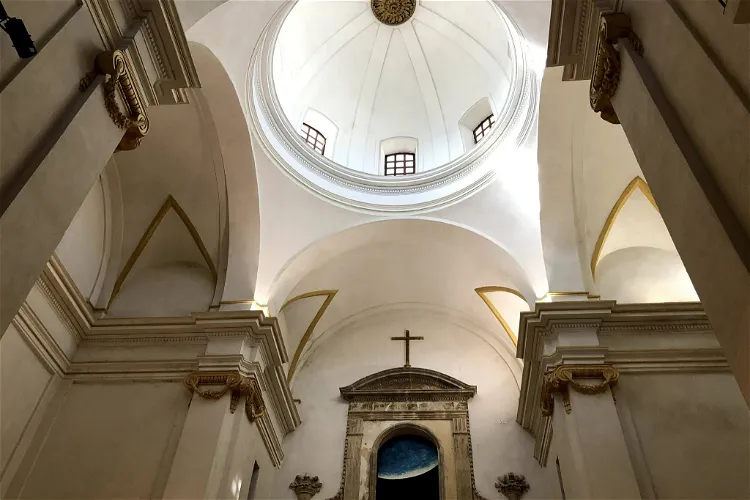
San Jose Church Cultural Center
Puerto RealThe San Jose Church, a declared Cultural Interest Site in the category of Monument, is a significant historical site located in the municipality of Puerto Real, Cadiz, in Andalusia. Its full name is Antigua Iglesia de Jesus, Maria y Jose, and it was constructed in the last third of the 18th century. The church is situated in the heart of the historic center of the town, making it a central point of interest for visitors.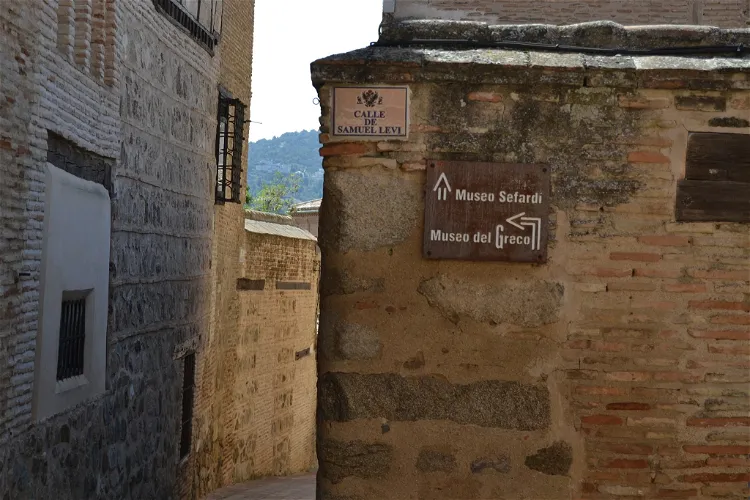
Sephardic Museum
ToledoThe Sephardic Museum, located in Toledo, Spain, is a national institution that showcases the rich Jewish cultural heritage of Spain. It also provides insights into the history and culture of the Sephardim, who are the descendants of the Jews who resided on the Iberian Peninsula until 1492. The museum is a testament to the enduring legacy of Jewish culture in Spain and offers a unique opportunity to explore this fascinating aspect of Spanish history.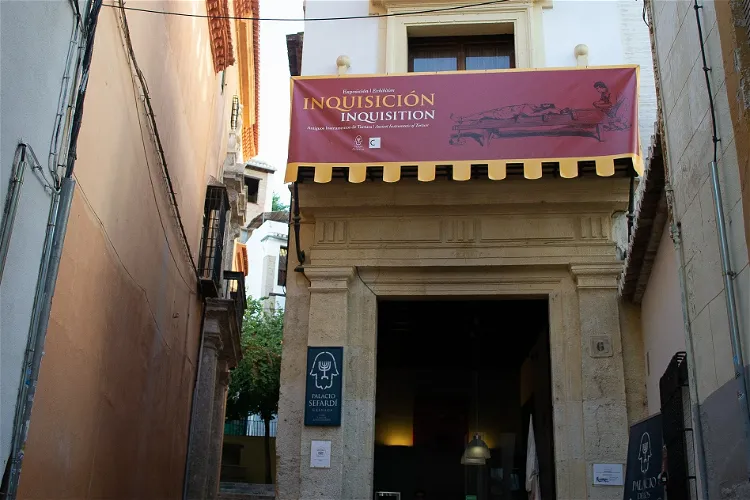
Palace of the Forgotten
GranadaThe Palace of the Forgotten, located in Granada, Spain, is a museum that focuses on the Spanish Inquisition, Jewish history, and the heritage of Granada and Andalusia. This museum provides a unique opportunity to delve into the rich and complex history of these subjects, offering a comprehensive understanding of the region's past.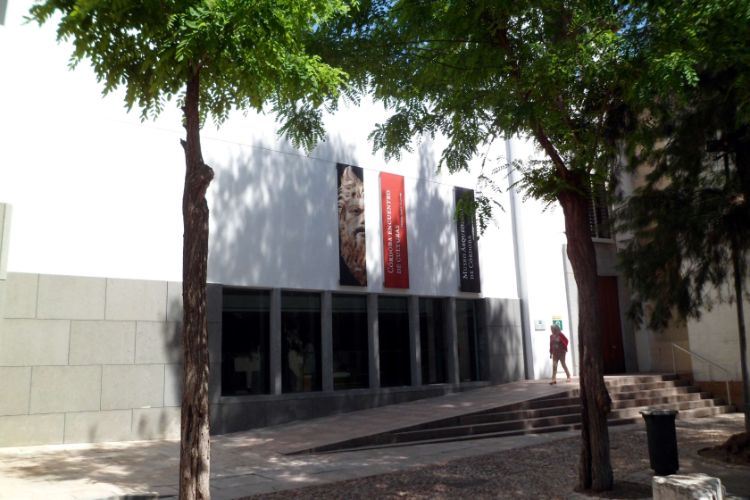
Archaeological Museum of Córdoba
CórdobaThe Archaeological Museum of Córdoba is housed in the former palace of the Páez de Castillejo and a contemporary building built next to it. Its collections consists of a wide variety of pieces that range from Prehistory to the Late Middle Ages. Underground, the museum displays the archaeological rem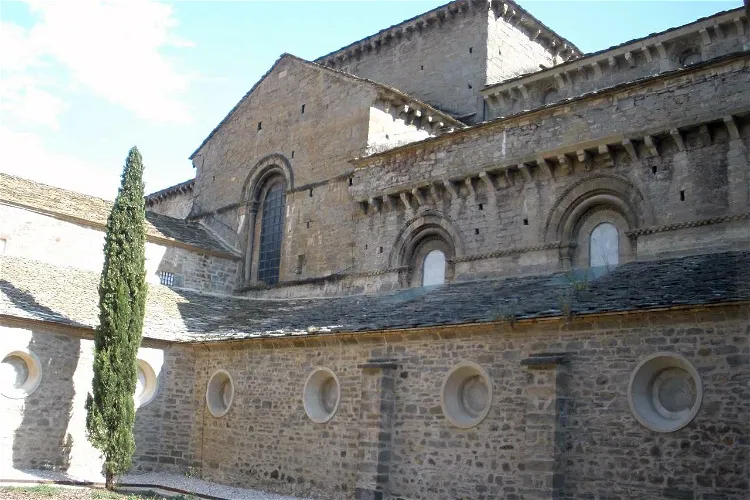
Diocesan Museum of Jaca
JacaThe Diocesan Museum of Jaca, which was inaugurated on August 22, 1970, is situated in the rooms that surround the cloister of the Cathedral of Jaca. This location in Aragon, Spain, provides a unique setting for the museum and its collections.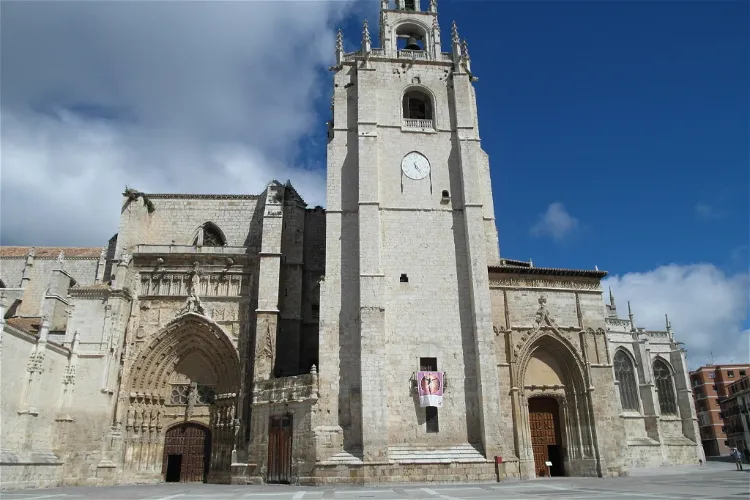
Palencia Cathedral
PalenciaThe Cathedral Basilica of Saint Antoninus, located in Palencia, Spain, is a Roman Catholic church dedicated to Saint Antoninus of Pamiers. This cathedral is a significant religious site and a remarkable example of Roman Catholic architecture.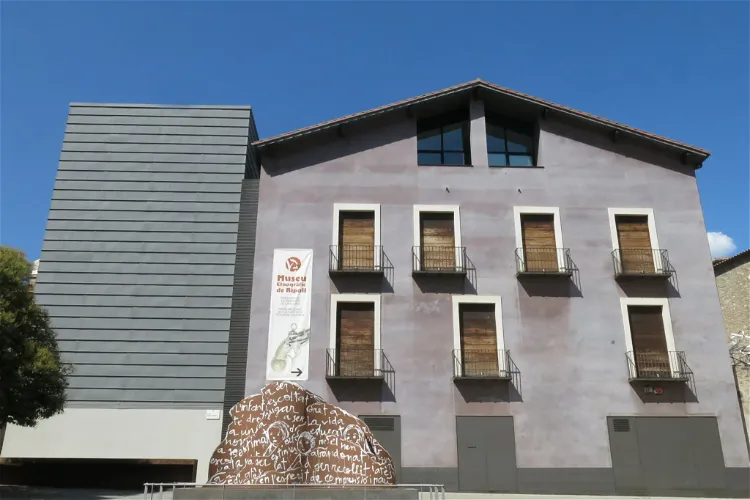
Ethnographic Museum of Ripoll
RipollThe Ethnographic Museum of Ripoll is situated in the city of Ripoll, within the province of Girona in Catalonia. This location is easily accessible and offers a rich cultural experience for tourists interested in ethnography and local heritage.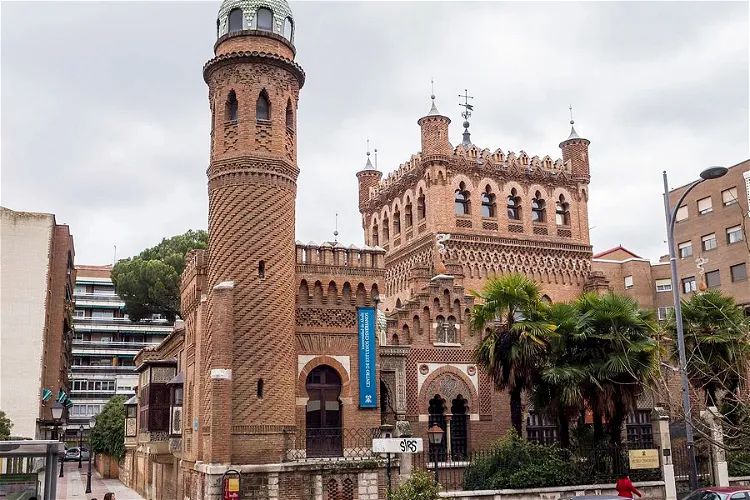
Laredo Palace
Alcalá de HenaresThe Laredo Palace, also known as Palacete Laredo or Palacio Laredo, is a significant cultural site located in Alcalá de Henares, Spain. This palace is a notable landmark in the region and offers a unique glimpse into the country's rich history and architectural heritage.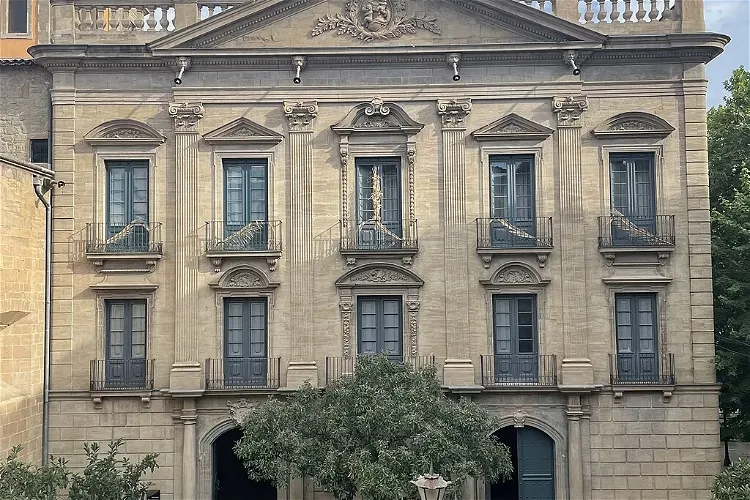
Museo Diocesano y Comarcal de Solsona
SolsonaThe Museo Diocesano i Comarcal de Solsona is an art and archaeology museum situated in Solsona, Catalonia, Spain. It is officially registered in the Registry of Museums of Catalonia, bearing the number 20. This museum is a significant destination for those interested in medieval art and archaeology.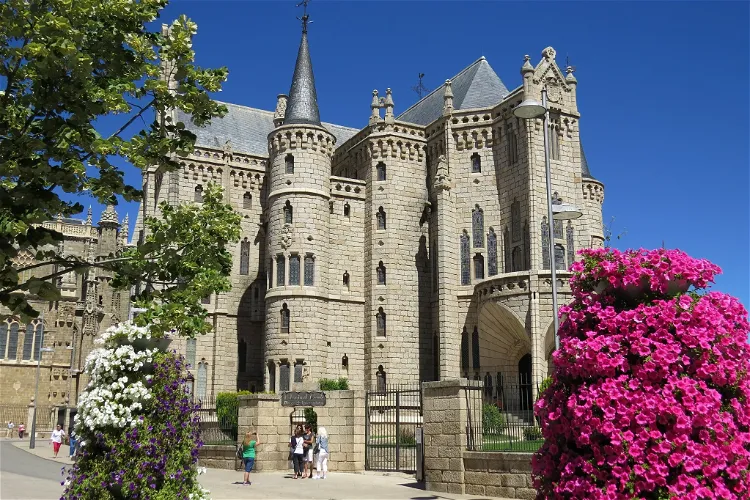
Museo de los Caminos
AstorgaThe Museo de los Caminos, located in the Episcopal Palace of Astorga in the province of León, Spain, is dedicated to the Camino de Santiago. This museum offers a deep dive into the history and significance of this famous pilgrimage route.
Museo Arqueolóxico de Cambre
CambreThe remains of the villa were moved from the original site, in front of the Romanesque church of Santa Maria, to the interpretation center, which is now part of the Archaeological Museum of Cambre. The museum is divided into two spaces, providing a comprehensive view of the villa's history and its significance in the Roman era.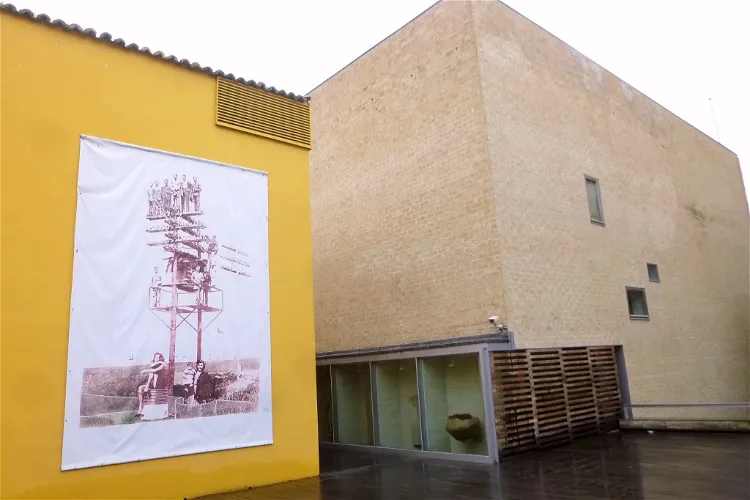
Zamora Museum
ZamoraThe Zamora Museum, a provincial museum, is situated in the Santa Lucía square in Zamora, Spain. This location is in a neighborhood known as Puebla del Valle during medieval times. The museum is a significant cultural institution in the region, offering a glimpse into the area's rich history and heritage.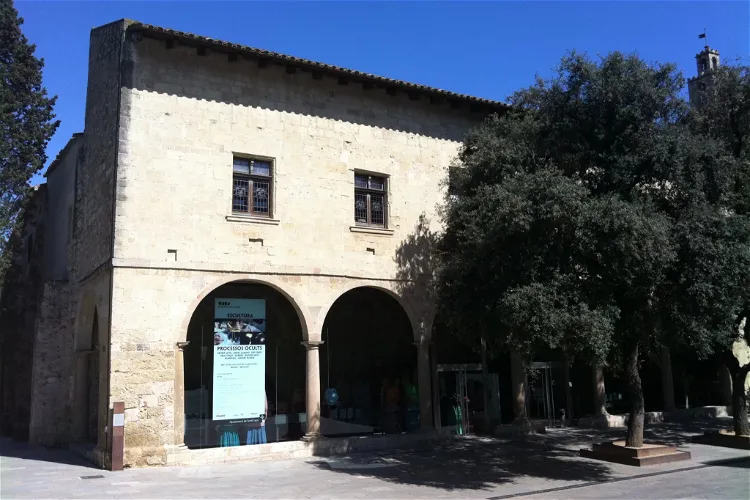
Sant Cugat Museum
Sant Cugat del VallèsThe Sant Cugat Museum, which opened its doors on 23 April 2003, is dedicated to the preservation and promotion of the historical, artistic, and cultural heritage of Sant Cugat del Vallès in Catalonia. As a visitor, you can explore the rich history and culture of the region through the museum's extensive collections and exhibitions.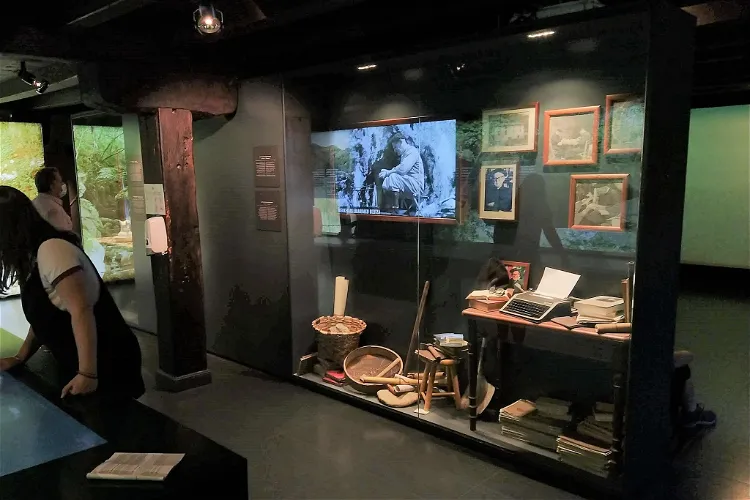
Museum of Witches
ZugarramurdiThe Museum of Witches in Zugarramurdi is situated in the Spanish town of Zugarramurdi, which is part of the Autonomous Community of Navarre. This location is significant as it is the setting for the museum's historical context and exhibits.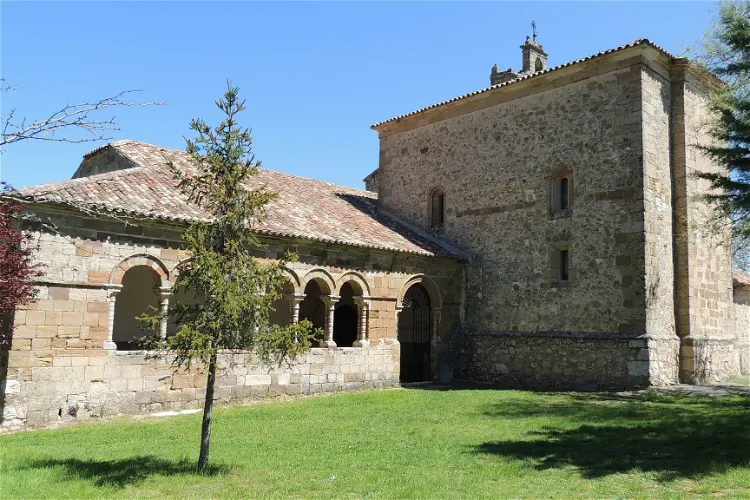
San Bartolomé Museum
AtienzaSan Bartolomé Church, a Romanesque style Catholic temple, is situated in the Spanish town of Atienza. This architectural gem is a testament to the rich history and cultural heritage of the region. Its unique design and historical significance make it a point of interest for tourists visiting Atienza.
Semana Santa Museum
ZamoraThe Semana Santa Museum in Zamora was founded in 1957 by the city's Junta Pro Semana Santa. The museum was established with the aim of preserving and showcasing the processional steps of the brotherhoods. These were previously stored in various locations, colloquially referred to as 'paneras' in Zamora.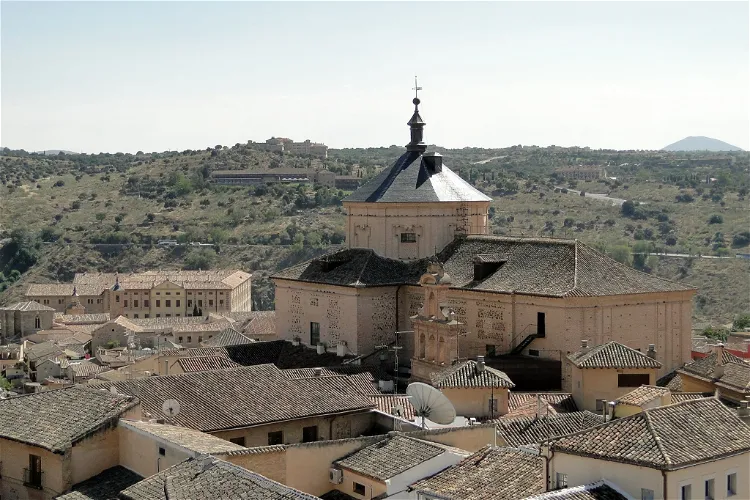
San Marcos Arts Centre
ToledoThe Church of San Marcos in Toledo, Spain, has a rich history dating back to the 17th century. It was originally part of the Convent of the Holy Trinity and was built from scratch during this period. This historical context adds a layer of depth to the visitor's experience, providing a glimpse into the religious and architectural practices of the time.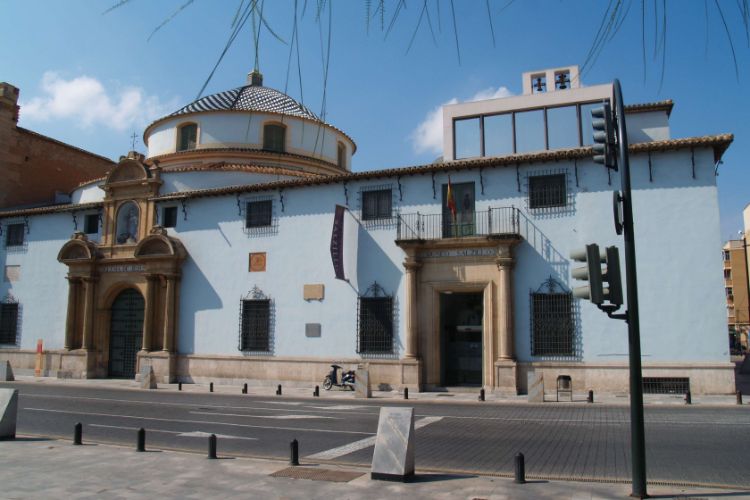
Salzillo Museum
MurciaThe Salzillo museum is a museum in Murcia that is dedicated to the works by the Murcian baroque sculptor Francisco Salzillo. The museum is located next to the Church of Jesus, which is part of it. It illustrates the Brotherhood of Our Father Jesus, who go out in procession on the morning of Good Fri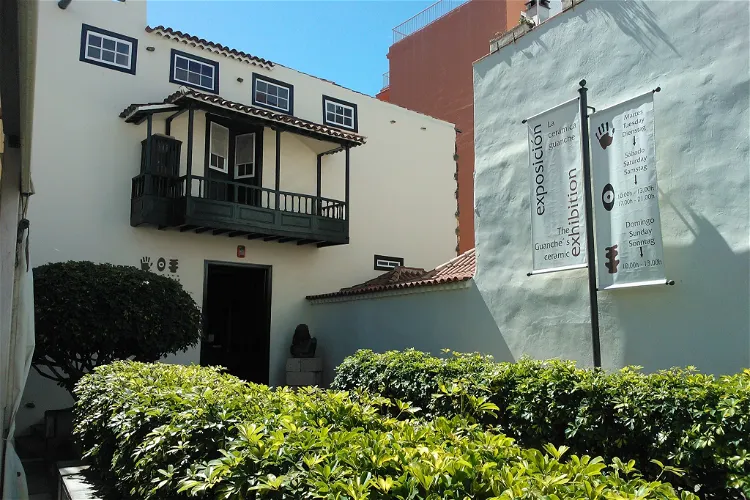
Archaeological Museum of Puerto de la Cruz
Puerto de la CruzThe museum is home to one of the most significant collections of Guanche aboriginal ceramics in the Canary Islands, featuring unique pieces that can only be found in Tenerife. This collection provides a unique insight into the artistic and cultural practices of the Guanche people.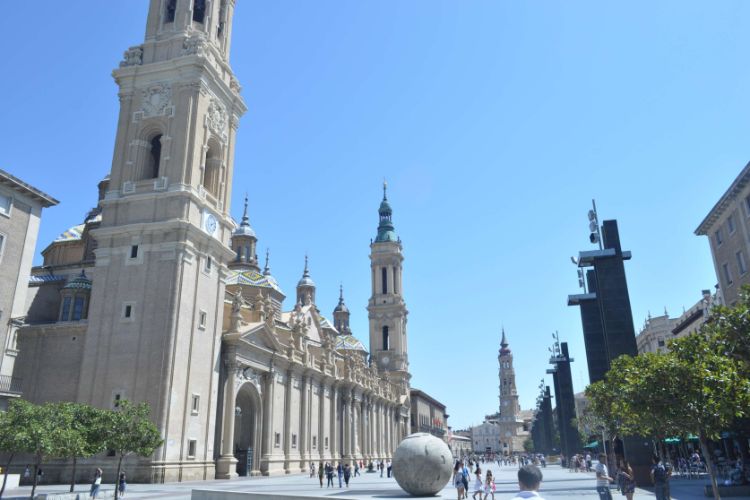
Museo de Tapices y Capitular de la Seo
ZaragozaMuseo de Tapices y Capitular de la Seo (La Seo Chapterhouse Tapestry Museum) is housed in the La Seo Cathedral. The museum holds a large collection of tapestries that belong to the Cathedral Chapter. The collection of the museum comprises 63 Flemish tapestries and 6 pieces of heraldic embroidery, ma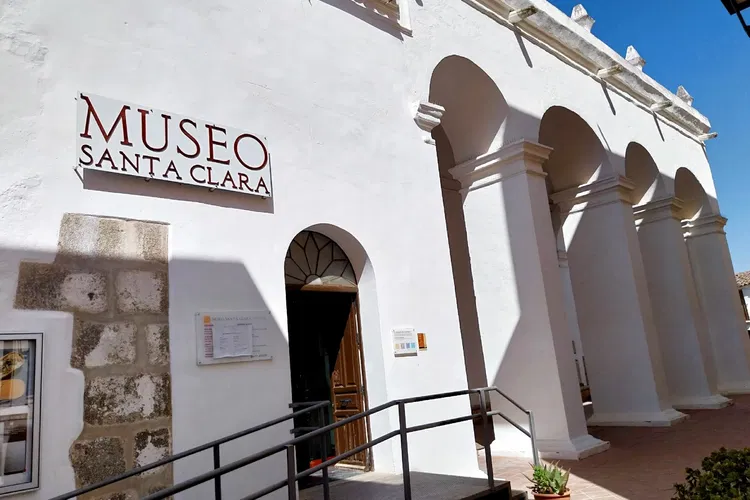
Santa Clara Museum
ZafraThe Santa Clara Museum aims to showcase the spirituality and simplicity of the cloistered life of the Clarissa sisters. It also highlights the patronage of the House of Feria and how the monastery has integrated into the city of Zafra and related to its people to the present day. These three thematic lines (convent, noble patronage, and city) are integrated into a monumental and historical exhibition space.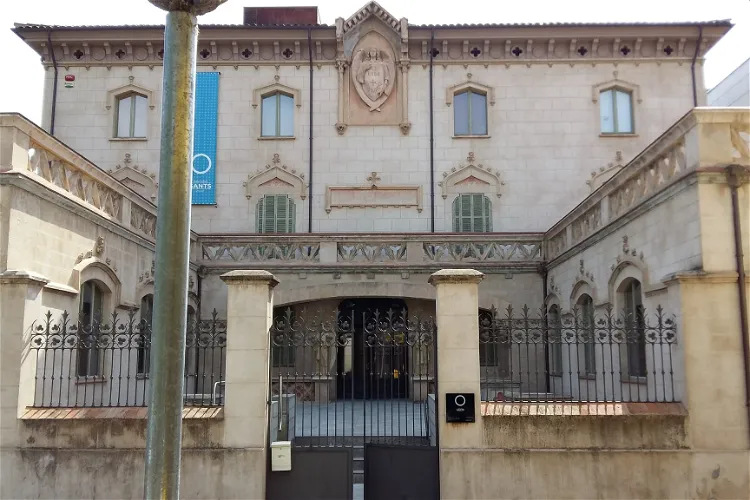
Olot Saints Museum
OlotThe Olot Saints Museum, which opened its doors in 2007, is a unique institution dedicated to the craft of creating religious imagery. Located in Olot, Girona, the museum houses a variety of items that provide insight into this specialized craft. Visitors can explore the intricate process of creating religious figurines and learn about the history and significance of this art form.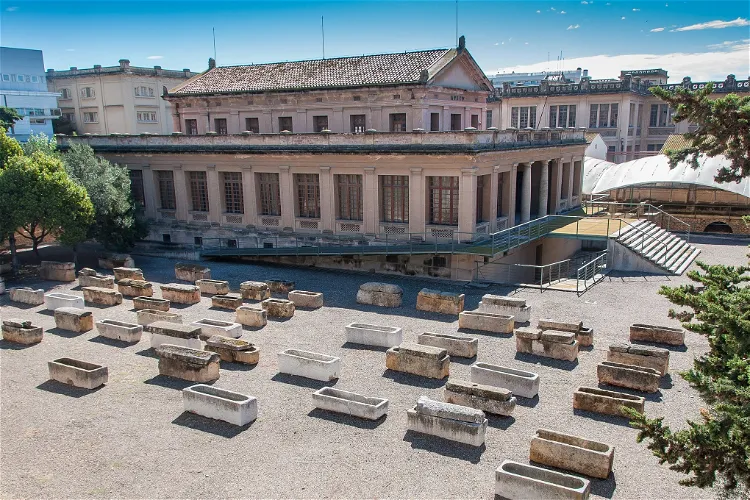
Paleo-Christian Necropolis and Museum
TarragonaVisit the archaeological museum and see an astonishing number of well-preserved Paleo-Christian tombs whose origin dates to the 3rd century.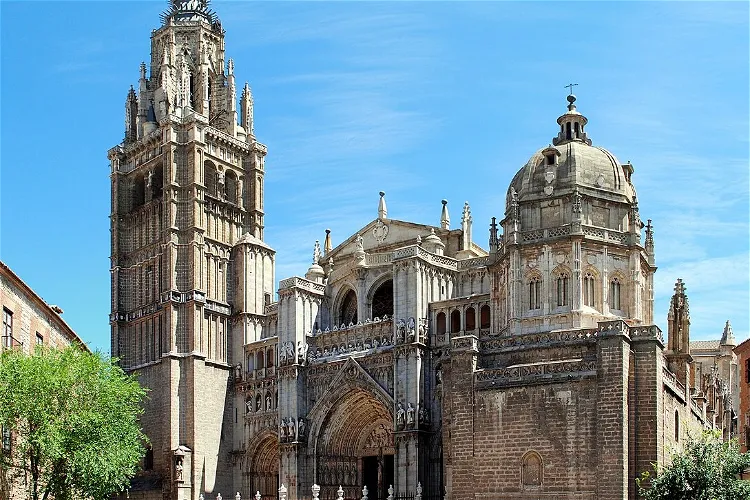
Toledo Cathedral
ToledoThe Toledo Cathedral is a significant historical and architectural landmark in Toledo, Spain. It is one of the three 13th-century Spanish Gothic cathedrals and serves as the seat of the Archdiocese of Toledo. This cathedral is a prime example of the Gothic style in Spain and offers a unique insight into the country's architectural history.- 86
Diocesan Museum of Tarragona
TarragonaThe Diocesan Museum of Tarragona is a significant part of the Archbishopric of Tarragona. It is conveniently located within the cathedral complex of the Tarragona Cathedral, making it easily accessible for visitors who are exploring the cathedral and its surroundings. 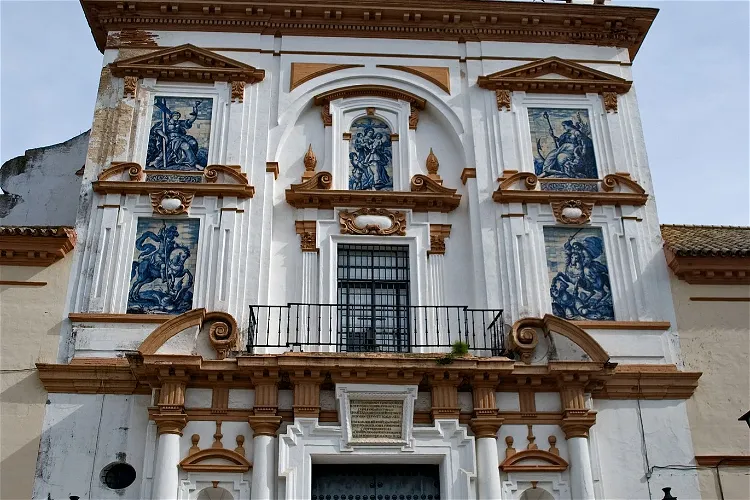
Hospital de la Caridad (Seville)
SevilleThe Hospital de la Caridad, located near the Plaza de toros de la Real Maestranza de Caballería de Sevilla, is a Roman Catholic baroque charity hospital. This historic building is a significant part of Seville's architectural heritage and offers a glimpse into the city's past.
Manresa Regional Museum
ManresaThe Manresa Regional Museum, officially known as Museu Comarcal de Manresa, is a multidisciplinary museum that was established on September 2, 1896. It was initially named the Archaeological Museum, Public Library and Permanent Artistic Industrial Exhibition. The museum is located in one of the rooms of the city's town hall building.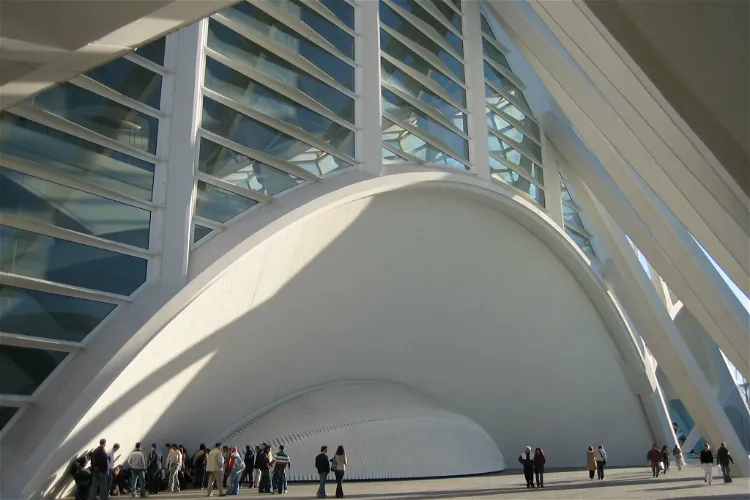
Museum of Spanish Magic
ToledoYou can see many interesting artifacts connected to Spanish legends and myths in this unique museum. Discover the folk beliefs!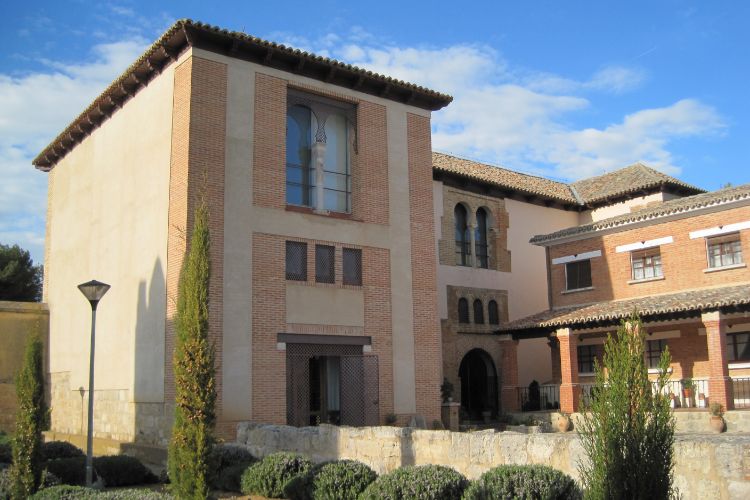
Santa Clara Monastery & Museum
MurciaThe Monastery of Santa Clara la Real dates back to the 14th century, occupying what used to be the old Alcázar Seguir of the 13th century. It is one of the most important historical buildings in Murcia, since it has remains of the Arab palace (the most important of the Islamic art from Murcia). The
Zamora Cathedral Museum
ZamoraThe Zamora Cathedral Museum, the main museum of the Zamora diocese, was inaugurated in 1926. Its primary purpose is to house and display works from the Cathedral and other parishes of the diocese to the public. This museum is a significant part of the cultural and historical heritage of the region, offering visitors a chance to explore and appreciate the rich artistic legacy of the diocese.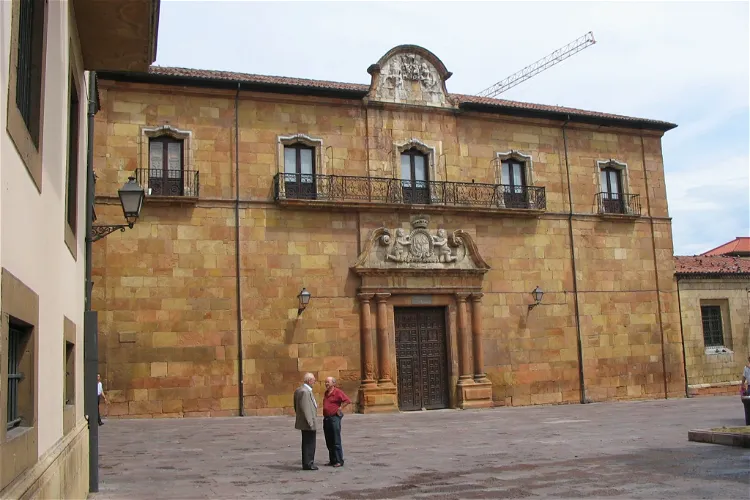
Church Museum
OviedoThe Church Museum of Oviedo is a significant cultural site located in the city of Oviedo, in the Principality of Asturias, Spain. It is situated in the upper cloister of the city's cathedral, offering visitors a unique opportunity to explore the rich history and architectural beauty of the cathedral.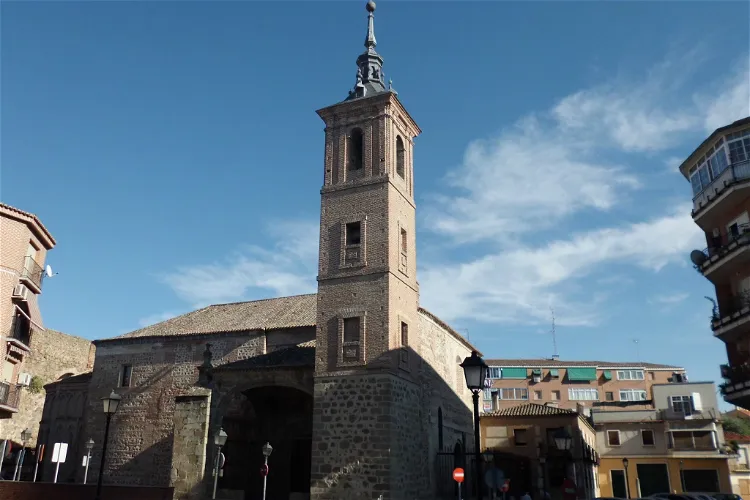
Centro Cultural El Salvador
Talavera de la ReinaThe Church of El Salvador de los Caballeros, also known as El Salvador, is a significant historical site located in the old Corredera del Cristo, on the outskirts of the city of Talavera de la Reina in Toledo, Castilla-La Mancha, Spain. This location offers visitors a glimpse into the rich history and architectural beauty of the region.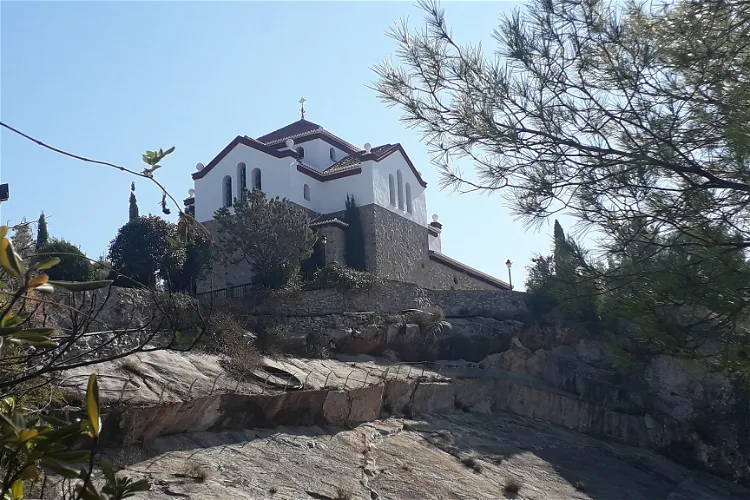
Hermitage of the Three Juanes
AtarfeThe Hermitage of the Three Juanes is situated in the Spanish town of Atarfe, in the province of Granada. This location offers visitors a chance to experience the rich cultural heritage of Spain, while also enjoying the natural beauty of the surrounding area.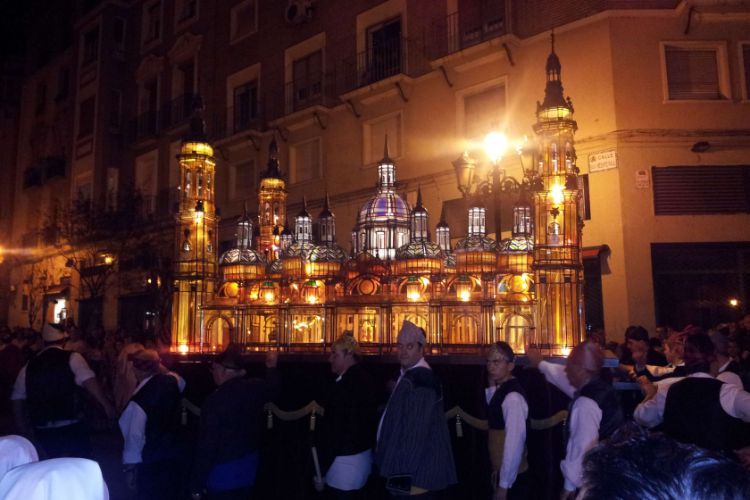
Museo de los Faroles y Rosario de Cristal
ZaragozaMuseo de los Faroles y Rosario de Cristal (The Museum of Lanterns and Rosario de Cristal) is housed in the church of the Sacred Heart of Jesus. In the museum, the pieces of crafts that make up the Crystal Rosary are exhibited. The Crystal Rosary is celebrated every October 13 in Zaragoza and consist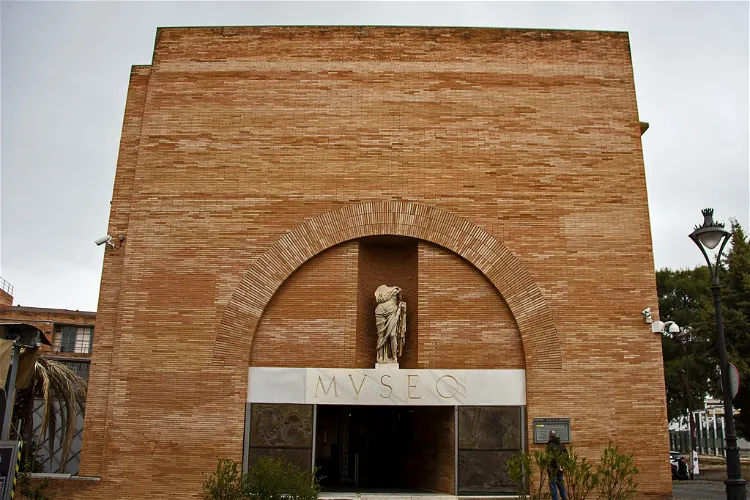
National Museum of Roman Art
MeridaThe National Museum of Roman Art, located in Merida, Spain, is a significant cultural institution that was inaugurated on September 19, 1986. The museum's building, a work of renowned architect Rafael Moneo, is a testament to the rich history and architectural prowess of the Roman era. Visitors to the museum can appreciate the architectural design of the building, which is a modern interpretation of Roman architecture.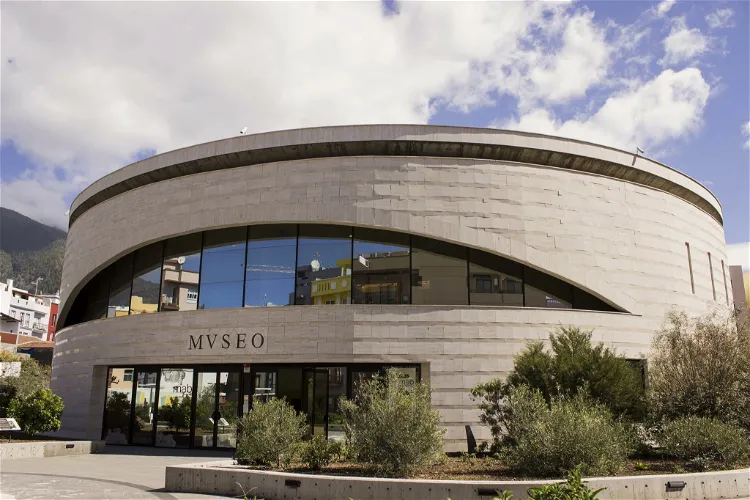
Benahoarita Archaeological Museum
Los Llanos de AridaneThe Benahoarita Archaeological Museum (MAB) holds a significant position as the most important archaeological institution on the island of La Palma, located in the Canary Islands, Spain. This museum is dedicated to showcasing the rich archaeological heritage of the island, making it a key destination for those interested in history and archaeology.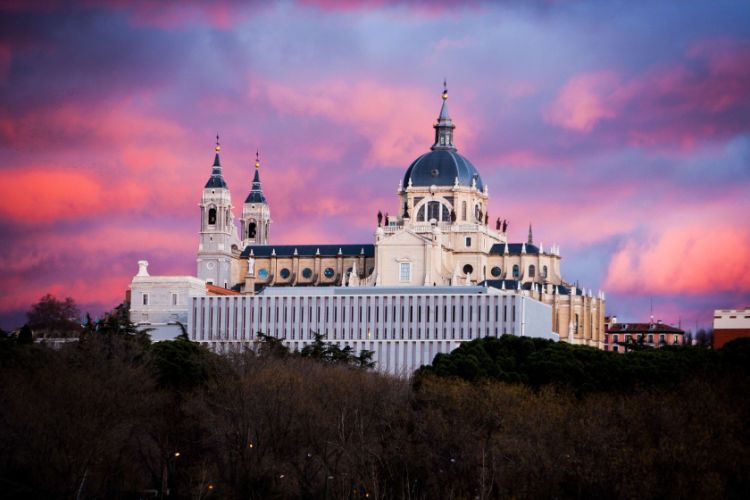
Museo de la Catedral de la Almudena
MadridThe Almudena Cathedral is a Catholic church in Madrid that seems to have been built on the site of a medieval mosque that was destroyed in 1083 when Alfonso VI reconquered Madrid. Museo de la Catedral de la Almudena is the museum of the cathedral. A visit starts with two chambers of the Cathedral: t- 99
Museo de Arte Sacra da Colexiata
Ciudad ViejaLocated in a San Pelayo de Antealtares monastery in Santiago, this museum displays vast collection of devotional art. Note the ancient altar. 
Archive of the Kingdom of Galicia
A CoruñaThe Archive of the Kingdom of Galicia, located in La Coruña, is a significant cultural institution owned by the Ministry of Culture and managed by the Junta de Galicia since 1989. It serves as a repository of historical documents pertaining to the region of Galicia and the province of La Coruña, making it a valuable resource for those interested in the history and culture of the area.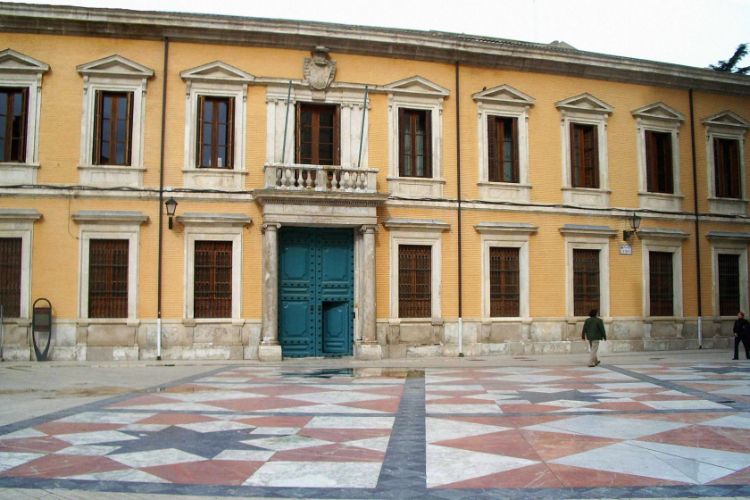
Alma Mater Museum
ZaragozaThe Alma Mater Museum is a museum in Zaragoza that is housed in the Palacio arzobispal de Zaragoza (the archiepiscopal palace of Zaragoza). The museum exhibits objects related to the Diocese of Zaragoza. Throughout spaces formerly known as Las Casas del Obispo, the residence of the bishops and archb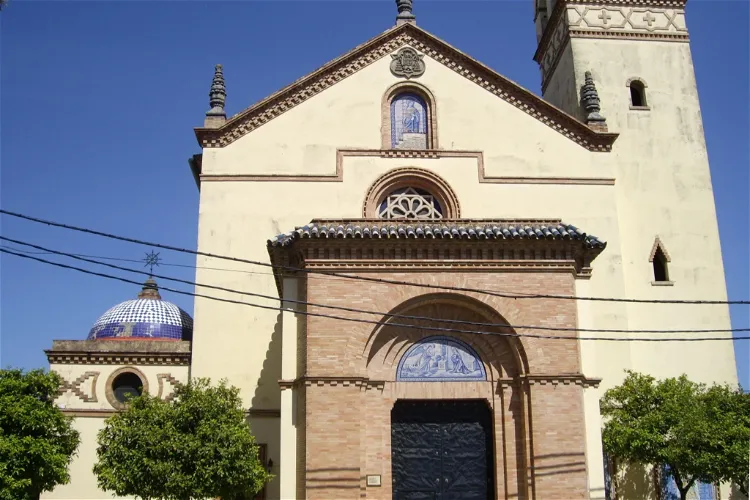
Parroquia de San Juan Bautista
San Juan de AznalfaracheThe structure of the San Juan Bautista church is unique, with a nave divided into five sections, a semicircular head, and two chapels serving as a transept. A notable feature is the bell tower to the right of the church body, decorated with exposed brick and neo-Mudejar elements, adding to the historical and architectural interest of the site.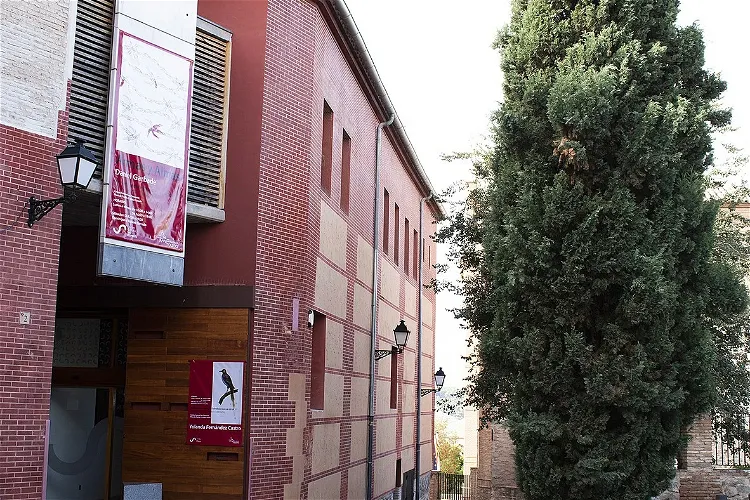
San Clemente Cultural Centre
ToledoThe San Clemente Cultural Centre is part of the historic Imperial Monastery of San Clemente, which dates back to the 12th century. The architecture of the centre is a sight to behold, with two courtyards and two superimposed floors featuring semicircular arches and lintels. The supports are beautifully carved stone columns, adding to the aesthetic appeal of the place.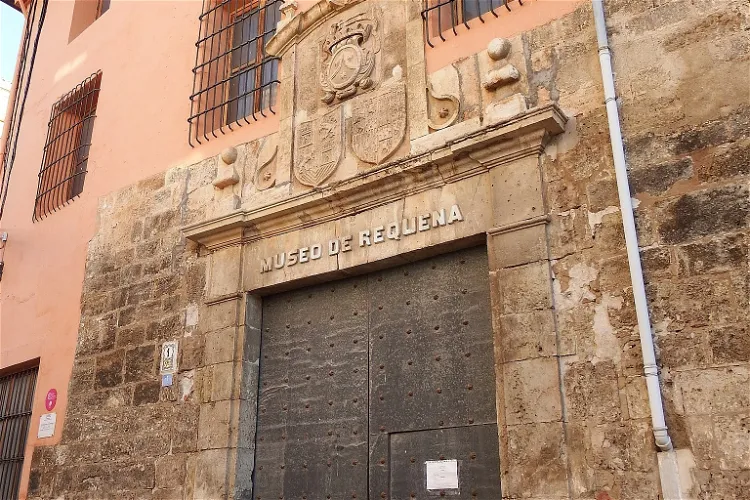
Municipal Museum of Requena
RequenaThe Municipal Museum of Requena, established in 1968, is housed in the historic convent of El Carmen. This location adds a layer of historical significance to the museum, making it a fascinating destination for those interested in the rich past of the region.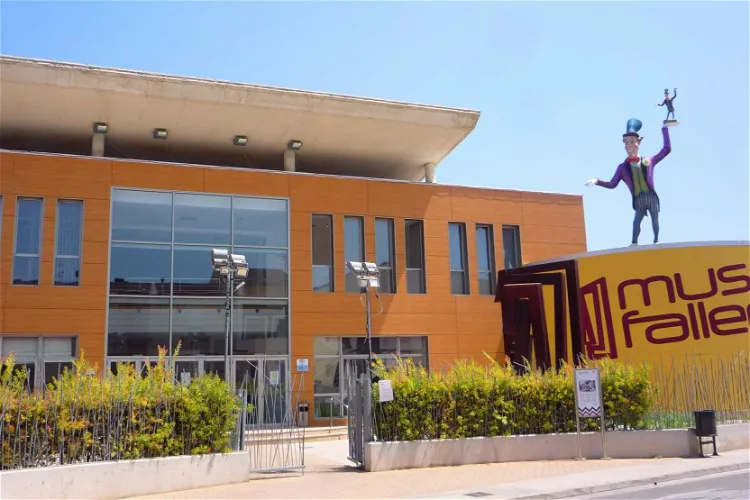
Faller Museum of Gandia
GandíaThe Faller Museum of Gandia, located in Valencia, is a unique institution dedicated to the interpretation of the Fallas festival. This museum provides an in-depth understanding of this traditional celebration, emphasizing the city of Gandia but not limited to it. It offers a general historical overview of the festival's origin and covers all aspects surrounding the Fallas activity, such as traditional clothing, pyrotechnics, Fallas literature, traditional music, and the monuments associated with the festival.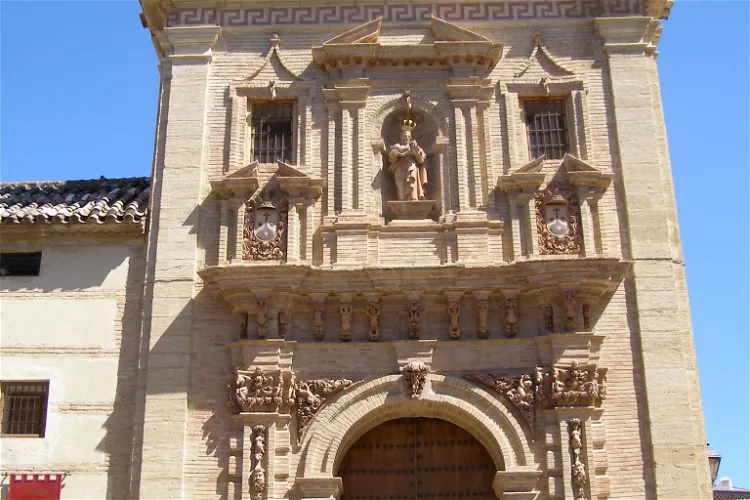
Conventual Museum of the Descalzas
AntequeraThe Conventual Museum of the Descalzas is a religious art museum situated in the town of Antequera, in the province of Málaga, Spain. This museum is an integral part of the San José Convent and is managed by the cloistered nuns of the Order of the Discalced Carmelites.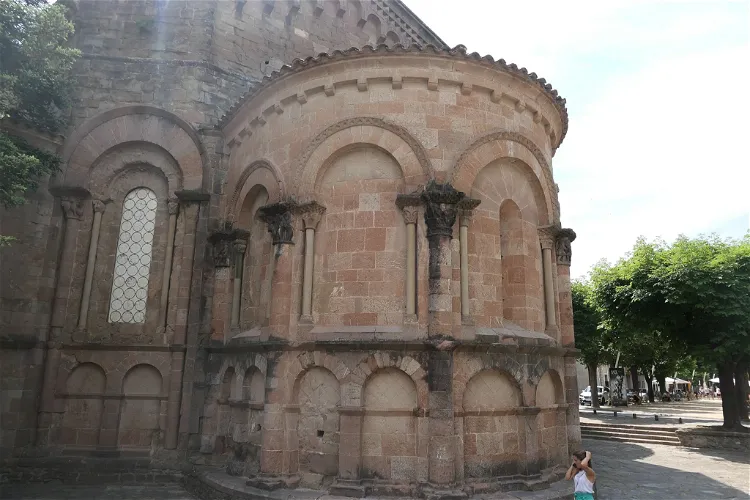
Monastery of Sant Joan de les Abadesses
Sant Joan de les AbadessesThe Monastery of Sant Joan de les Abadesses is a significant historical site located in the region of Ripollès, Catalonia, in northern Spain. It was established in the year 885 by a notable figure, count Wilfred the Hairy. This monastery holds a rich history and is a testament to the region's past.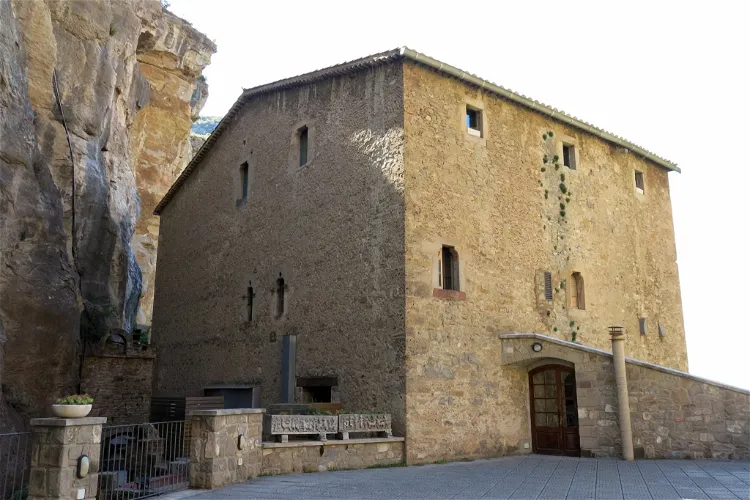
Sant Miquel del Fai Monastery
Sant Quirze SafajaThe Sant Miquel de Fai Monastery is a historical Benedictine monastery located in the Catalan region of Vallés Oriental, Spain. It is situated 7 km away from the municipality of San Felíu de Codinas and is part of the province of Barcelona. The monastery offers a glimpse into the rich history and religious traditions of the region.
Monastery of Santa Maria de l'Estany
l'EstanyThe Monastery of Santa Maria, situated in the quaint Catalan town of Estany within the region of Moyanés in Spain, is a site of significant historical and artistic value. In 1931, it was officially declared a Historic Artistic Monument. This recognition underscores the monastery's importance in the cultural and historical landscape of Spain, making it a noteworthy site for tourists interested in history, art, and architecture.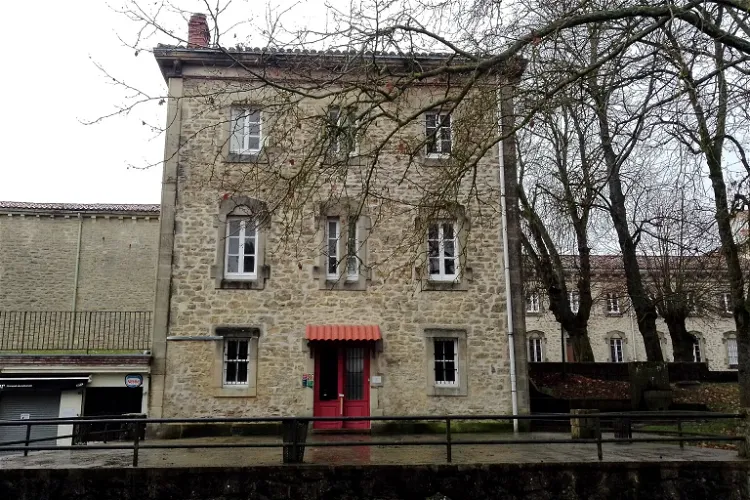
Sanctuary of Nuestra Señora de Estíbaliz
Vitoria-GasteizThe Sanctuary of Nuestra Señora de Estíbaliz is situated in the scenic locale of Argandoña, within the municipality of Vitoria-Gasteiz, Álava, Spain. The sanctuary is nestled amidst lush green forests and is perched on a small hill, providing a panoramic view of the entire province. This serene location makes it an ideal spot for tourists seeking tranquility and natural beauty.
Poble Espanyol
PalmaPoble Espanyol in Palma is a homage to Spain's cultural and historical past built by architect Fernando Goitia. Built between 1965 and 1967, it is a recreation of some of Spain's finest cultural and historical buildings. They were modeled almost identically on the original buildings, however they ar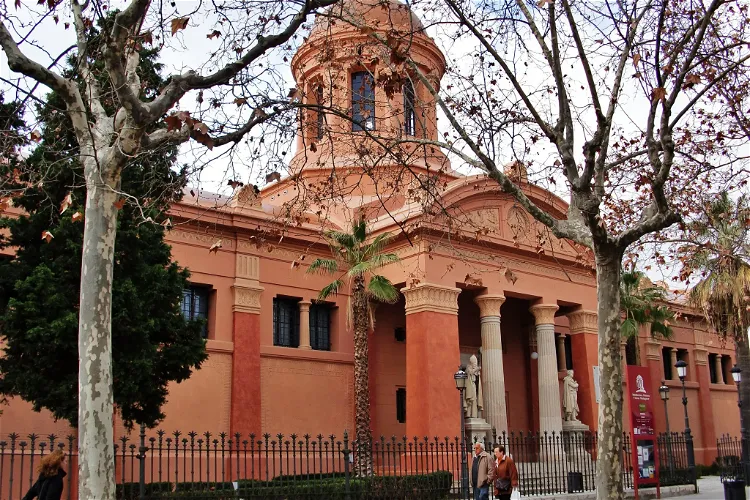
Biblioteca Museu Víctor Balaguer
Vilanova y GeltrúThe museum is home to the legacy of its founder, Víctor Balaguer. This includes a vast collection of books and various works of art that he amassed throughout his life. Visitors can explore a wide range of paintings, sculptures, ceramic and glass pieces, and ethnographic objects from distant cultures.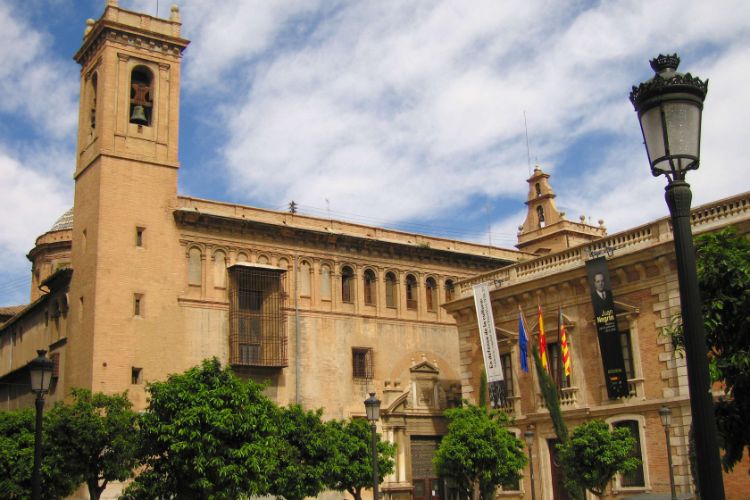
Museo del Patriarca
ValenciaThe Patriarca, Real Colegio and the Seminario del Corpus Christi are a church, a seminary and a college respectively. Work on the buildings began in 1586 and finished in 1610. The Patriarca in Valencia is a good examples of Renaissance architecture. In the Museo del Patriarca (the Musuem of the Patr
Murcia Cathedral Museum
MurciaThe Museum of the Cathedral of Murcia is a museum that is part of the building of the cathedral. It was created by desire of Bishop Miguel de los Santos and inaugurated in 1956. The museum occupies the Chapter House and the old Gothic cloister of the mid-fourteenth century, and exhibits various arti
Museum of St Isidoro
LeónThe Museum of the Royal Collegiate of San Isidoro is situated within the Basilica of San Isidoro in León. This location provides a unique setting for the museum, combining historical architecture with a rich collection of artifacts.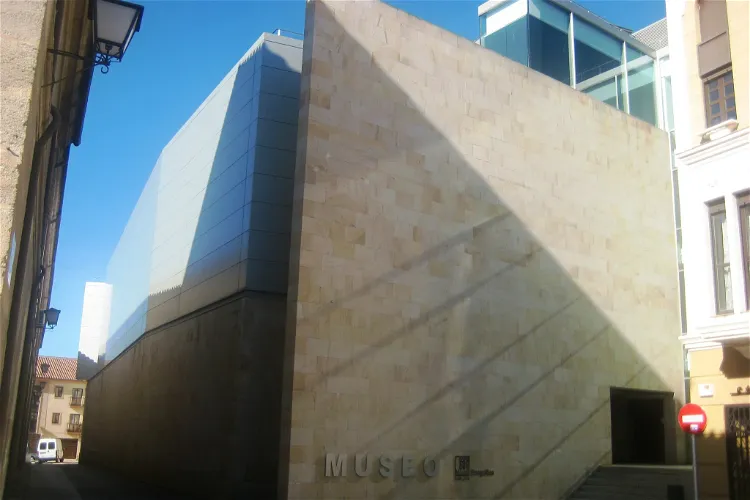
Ethnographic Museum of Castilla y Leon
LeónThe Ethnographic Museum of Castilla y León is situated in the city of Zamora. It is one of the four museums that form the Network of Regional Museums of Castilla y León. This network includes the Museum of Iron and Mining of Castilla y León, the Museum of Contemporary Art of Castilla y León, and the Museum of Human Evolution.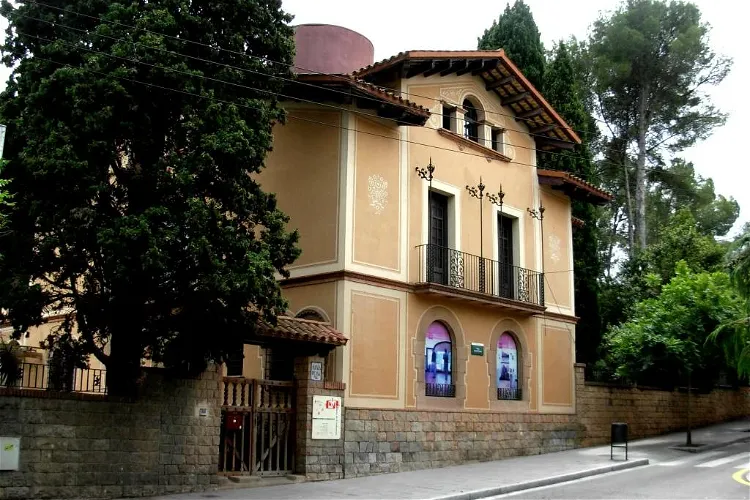
Cerdanyola Museum
Cerdanyola del VallésThe Cerdanyola Museum, situated in the Vallés Occidental region of Catalonia, is not confined to a single building. Instead, it comprises a collection of spaces scattered throughout the town. This unique approach allows visitors to explore the town and its history in a more immersive way, as the museum is essentially the territory itself.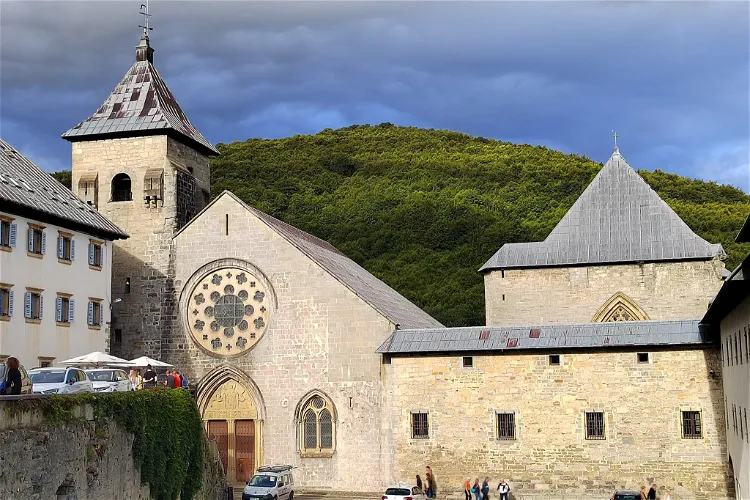
Royal Collegiate Church of Roncesvalles
RoncesvallesA 13th-century attempt to imitate the Notre-Dame Cathedral in Paris is a part of a hospital complex. Noteworthy for its devotional art collection.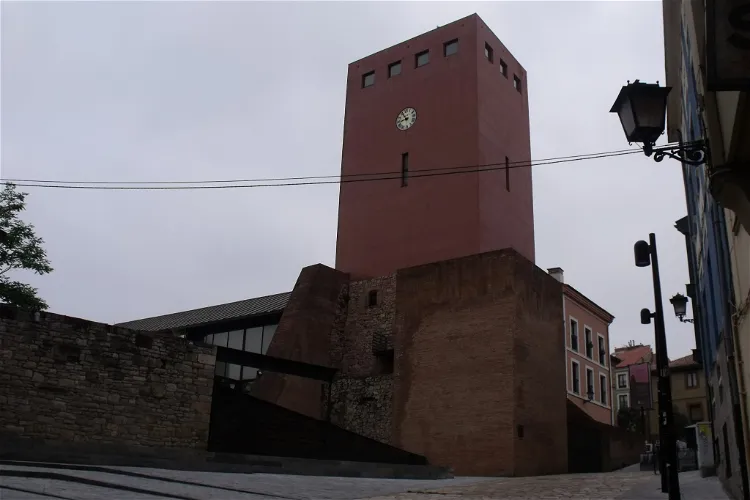
Torre del Reloj
GijónLa Torre del Reloj, a building dating back to 1572, is situated in the Cimadevilla neighborhood of Gijón, Asturias, Spain. The tower was reconstructed in 1989 at the same location with the initial intention of it serving as a museum and a viewpoint over the city. However, it is not currently used for this purpose.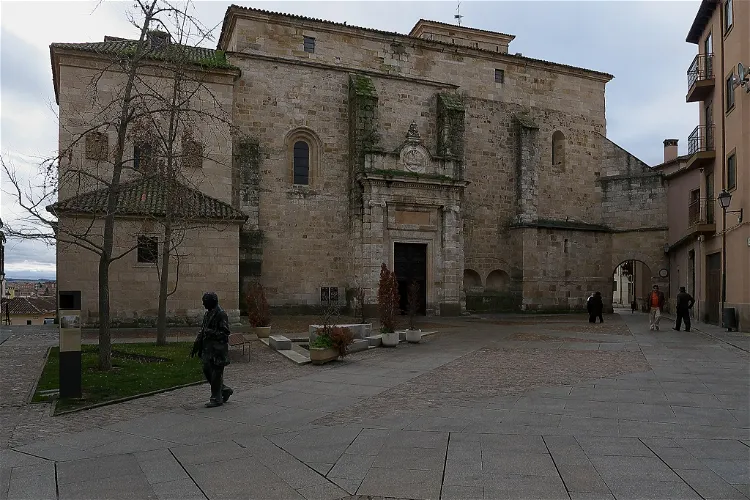
Church of San Pedro y San Ildefonso
ZamoraThe Church of San Pedro y San Ildefonso is a significant religious site in Zamora, Spain. Originally built in the Romanesque style, it is the largest and most important church in the city, second only to the Cathedral. Its size and historical significance make it a notable point of interest for visitors to the city.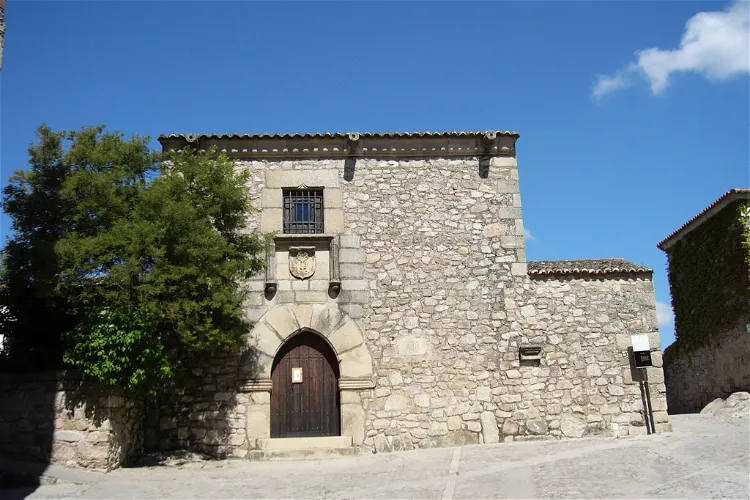
Pizarro House Museum
TrujilloThe Pizarro House Museum is a historical site located in Trujillo, Spain. It is dedicated to the life and achievements of Francisco Pizarro, the famous conqueror of Peru. The museum offers a unique insight into the life of this significant historical figure and his impact on the world.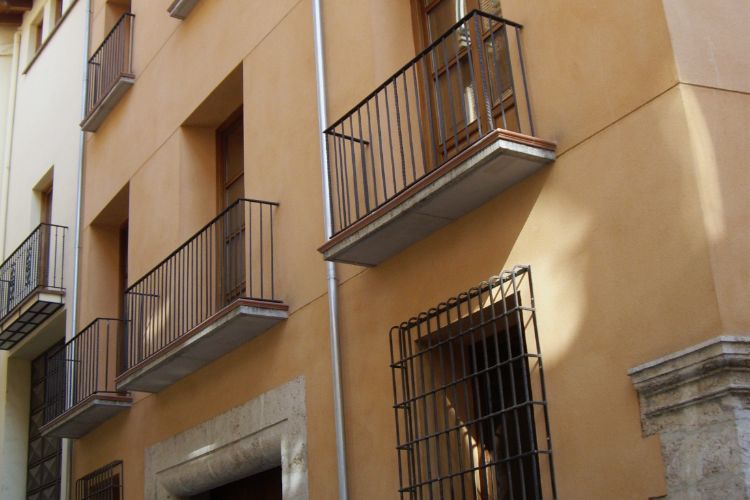
House of Rocas
ValenciaThe House of Rocas (Museo del Corpus - Casa museo de las rocas) in Valencia dates back to 1434 and was initially designed to house the special carriages (The Rocas) used as floats for the Easter and Corpus Christi processions. The history of these carriages goes back to the 15th century. The museum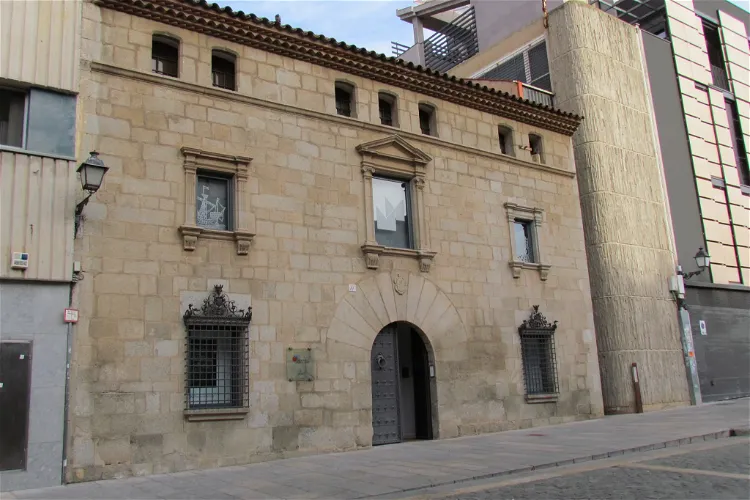
Mataró Museum
MataróThe Mataró Museum is a Spanish museum institution located in Mataró, a city in the Maresme region of Barcelona. The museum's headquarters are in Can Serra, a building constructed in 1565 that showcases the Renaissance architectural style. This historical building adds a unique charm to the museum, making it a fascinating place for tourists interested in history and architecture.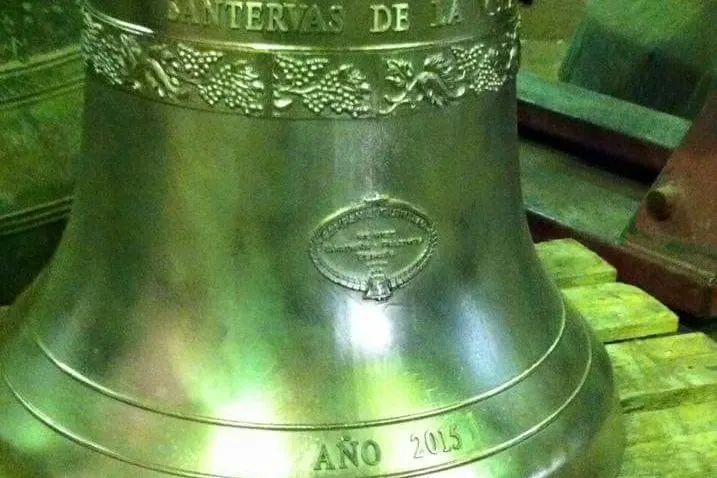
Bells Museum
UrueñaThe Quintana Bells Collection is a museum that is situated in Urueña, a municipality and locality in the province of Valladolid. This location is known for its rich history and cultural significance, making it an interesting destination for tourists who are interested in exploring the cultural heritage of Spain.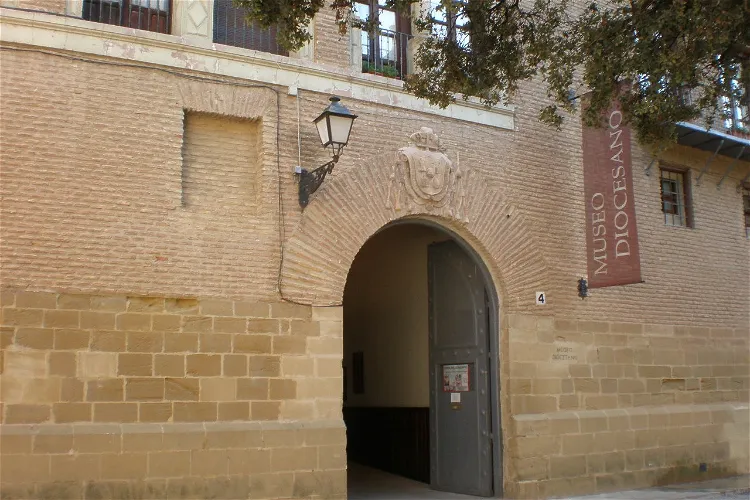
Diocesan Museum of Huesca
HuescaThe Diocesan Museum of Huesca is a sacred art museum that operates under the jurisdiction of the Bishopric of Huesca and the Chapter of the Cathedral of Huesca. This museum is a significant part of the city's historical and cultural heritage, offering visitors a unique insight into the religious art and history of the region.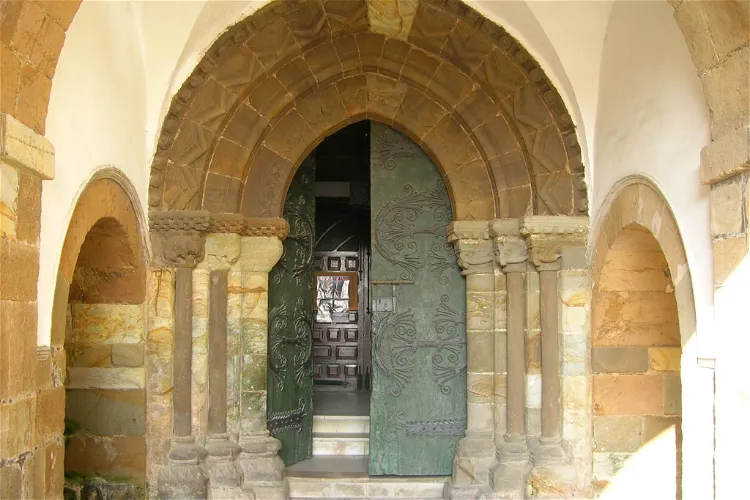
Sacred Art Museum of Tineo
TineoThe Sacred Art Museum of Tineo is a unique destination for art enthusiasts and history buffs alike. Situated in Tineo, Asturias, Spain, the museum is home to a vast collection of sacred art. The museum's location adds to its charm, as it is housed in a 14th-century Roman Catholic Church, known as the Convento de San Francisco del Monte.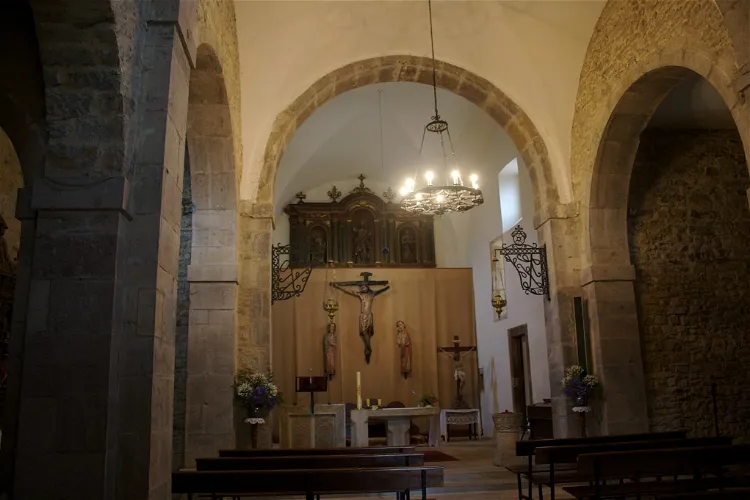
Museo Prerrománico de Santianes
PraviaThe museum houses a collection of Preromanesque artifacts discovered during the restoration of the Church of San Juan. These objects provide a fascinating insight into the history of the Asturian monarchy, offering visitors a chance to delve into the past and learn about the region's royal heritage.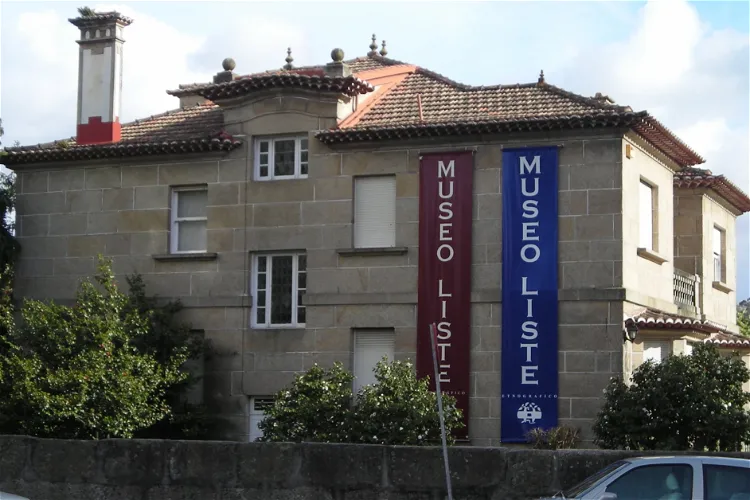
Liste Ethnographic Museum
VigoThe Liste Ethnographic Museum in Vigo is home to a vast collection of over 2,000 pieces that represent the material and spiritual culture of Galicia. This collection provides a comprehensive overview of the Galician heritage, including the artisanal trades, many of which are no longer in existence, traditional agricultural work, and numerous examples of religion and popular medicine. This museum offers a unique opportunity to delve into the rich cultural history of Galicia.
Regina Coeli Diocesan Museum
Santillana del MarThe Regina Coeli Diocesan Museum, also known as the Diocesan Museum of Santillana, was inaugurated in 1969. It is situated in the picturesque town of Santillana del Mar, in the region of Cantabria, Spain. This location makes it an accessible destination for tourists visiting the area.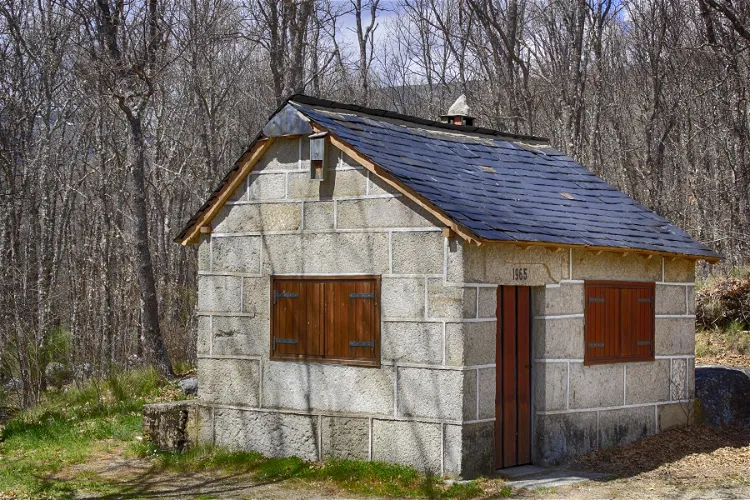
Sanabria Lake Natural Park
GalendeThe Park Interpretation Centre, located in the restored monastery of San Martín de Castañeda, offers a unique insight into the park's history and natural features. This medieval building, once home to Cistercian monks, now serves as a hub for learning and exploration within the park.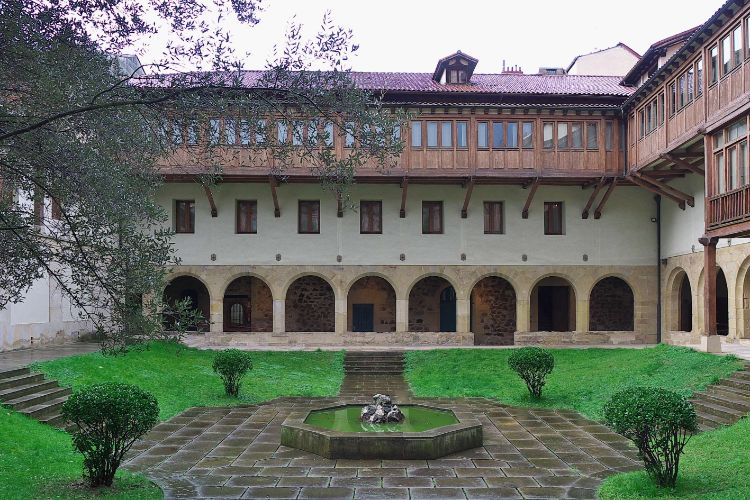
Diocesan Museum of Sacred Art
BilbaoThe Museum of Sacred Art of Bilbao (Museo Diocesano de Arte Sacro, MDAS) is located in the old Convent of the Encarnación in Bilbao. The museum holds a collection of more than 2.300 artworks, of which 500 are exhibited. The objects in its collection date from the 12th to the 20th century and they al
Roman Bridge of Liérganes
LiérganesThe Roman Bridge of Liérganes, also known as El puente mayor de Liérganes, is a significant historical structure located in the town of Liérganes in Cantabria, Spain. This bridge is a testament to the architectural prowess of the late 16th century and serves as a symbol of the town's rich history.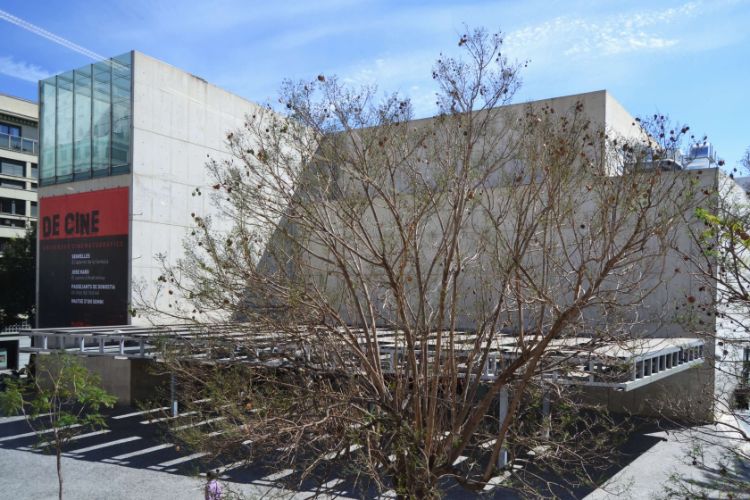
Museum of Illustration and Modernity
ValenciaMuseum of Illustration and Modernity (Museo de la Ilustraciòn y de la Modernidad) is a history museum in Valencia that offers a journey through time from the Middle Ages to modernity. As a part of the exhibition, you can see the remains of the Islamic Tower, which once stood here. To see the permane
Centre del Carme
ValenciaCentre del Carme in Valencia is housed in the old Carmen Convent and features various temporary exhibition rooms.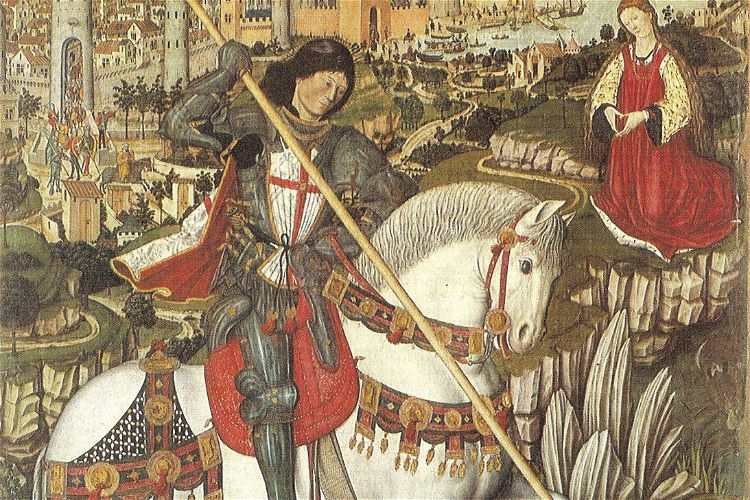
Museum of Sacred Art of Mallorca
PalmaMuseu Diocesà de Mallorca is a museum in Palma that is housed within the Episcopal Palace. The museum preserves over 200 religious artefacts that trace a path through the religious history of the island. The objects have been collected from monasteries, convents and churches and the collections incl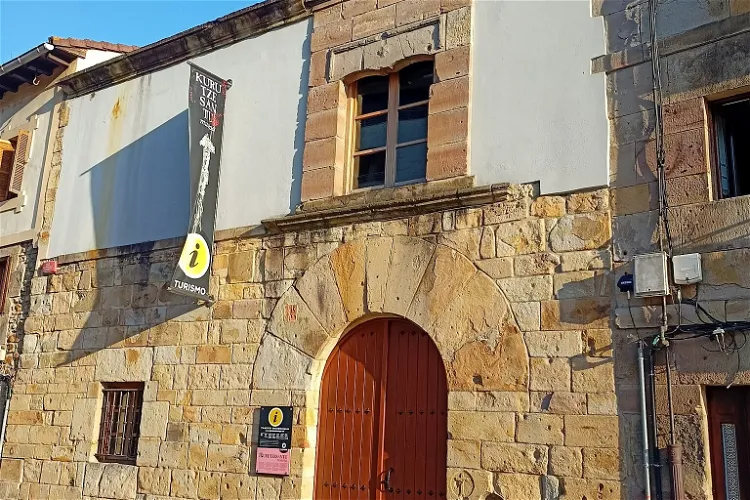
Kurutzesantu Museum
DurangoThe Kurutzesantu Museum, situated in Durango, Biscay, Spain, is home to the Kurutziaga Cross. This Gothic cross, believed to have been created in the 15th–16th centuries AD, is a significant historical artifact. The museum provides an opportunity to view this unique piece of history up close.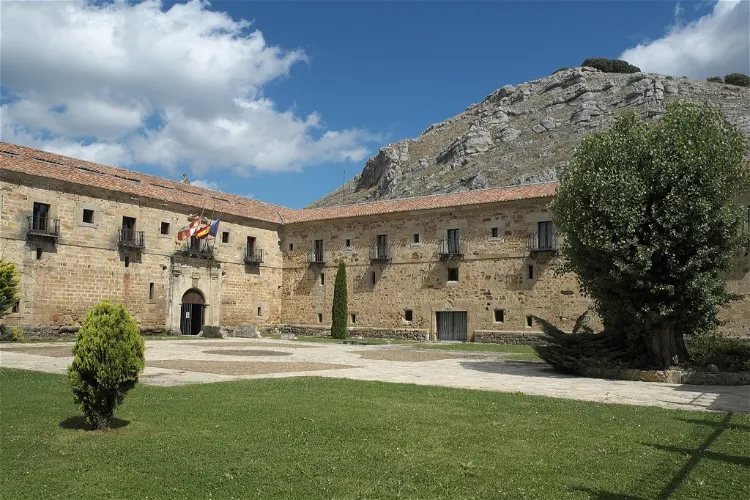
Monastery of Santa María la Real
Aguilar de CampooThe Monastery of Santa María la Real is located in Aguilar de Campoo, a municipality in the province of Palencia, within the Spanish Autonomous Community of Castile and León. This former Premonstratensian monastery was constructed at the end of the 12th and beginning of the 13th century, a period marking the transition from Romanesque to Gothic architecture.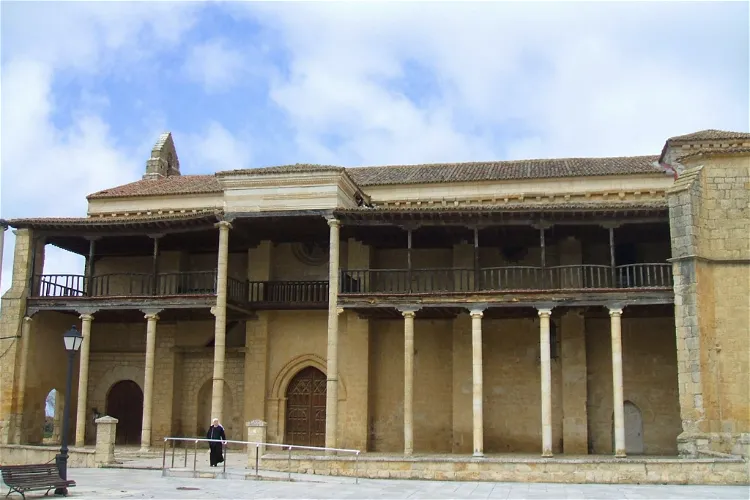
Church of Santa María
Becerril de CamposSince 1971, the Church of Santa María la Antigua has been deconsecrated and serves as one of the locations for the Territorial Museum Campos del Renacimiento. The museum, which was inaugurated on July 10, 1996, offers visitors a chance to explore a wide range of historical and cultural artifacts.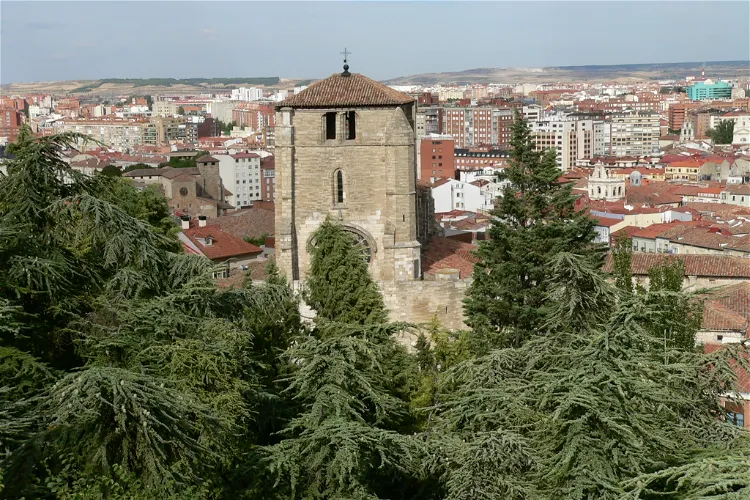
Iglesia de San Esteban
BurgosThe Retablo Museum boasts a collection of altarpieces dating from the 15th to the 18th century, sourced from various locations within the province of Burgos. Additionally, the museum displays a selection of religious goldsmithing. This provides a rich insight into the religious art and craftsmanship of the period.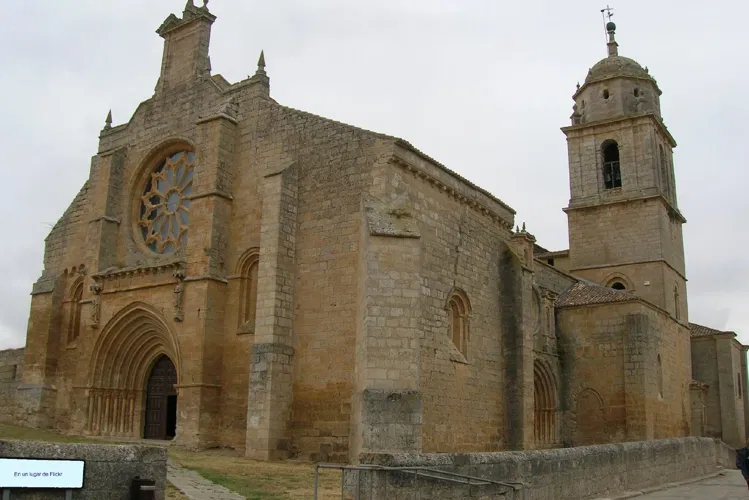
Collegiate of Santa María del Manzano
CastrojerizThe main portal of the Church of Nuestra Se ora del Manzano is a significant feature, showcasing Gothic architecture. It is located at the foot of the temple and is designed in the style of a flared bow with Archivolts and baquetones. The bases and capitals feature plant motifs. On either side of the portal, visitors can admire two stone sculptures from the thirteenth century, representing the Virgin Mary and the Archangel Gabriel.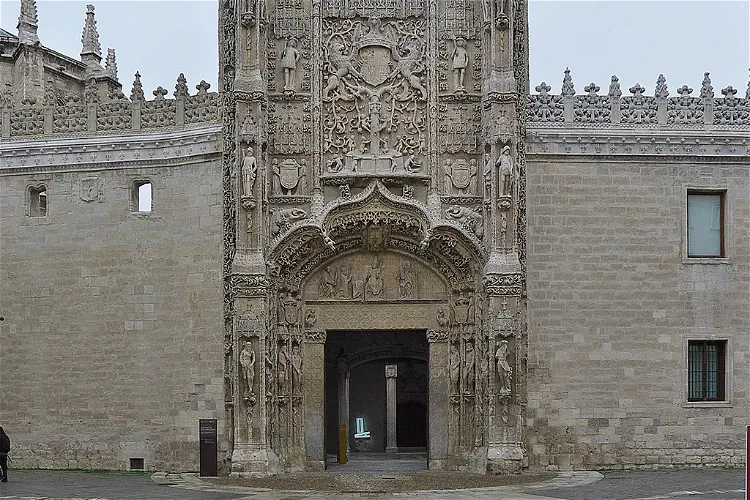
National Museum of Sculpture
ValladolidThe Museo Nacional Colegio de San Gregorio, located in Valladolid, Spain, is a museum dedicated to religious sculptures and portraits. It offers a unique opportunity to explore the rich history and culture of Spain through its religious art.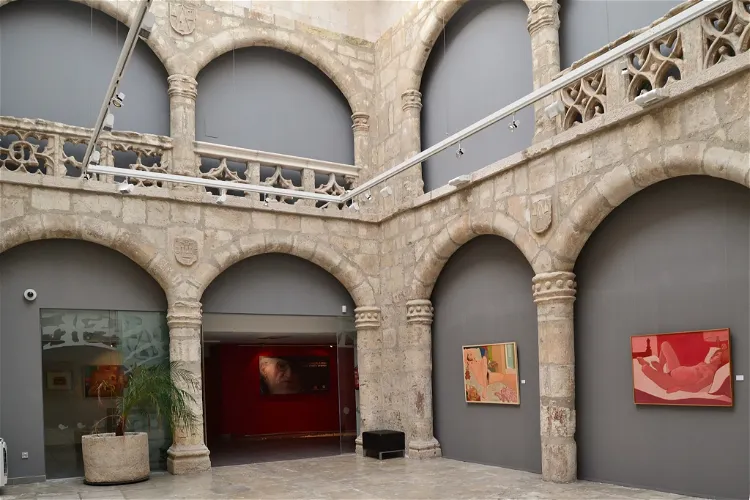
Museo Anatómico
ValladolidThe Museo de la Universidad de Valladolid (MUVa) is a museum located in Valladolid, in the autonomous community of Castilla y León, Spain. It is managed by the University of Valladolid and houses various collections of historical, artistic, and scientific value. The museum's official address is in the Palacio de Santa Cruz, the first Renaissance building constructed in Spain.
Museum of San Antolin
TordesillasThe Museum of San Antolin is situated in the ancient San Antolin church and parish in the town of Tordesillas, within the province of Valladolid, in the autonomous community of Castile and Leon, Spain. This location offers a unique blend of historical and cultural significance, making it an interesting destination for tourists.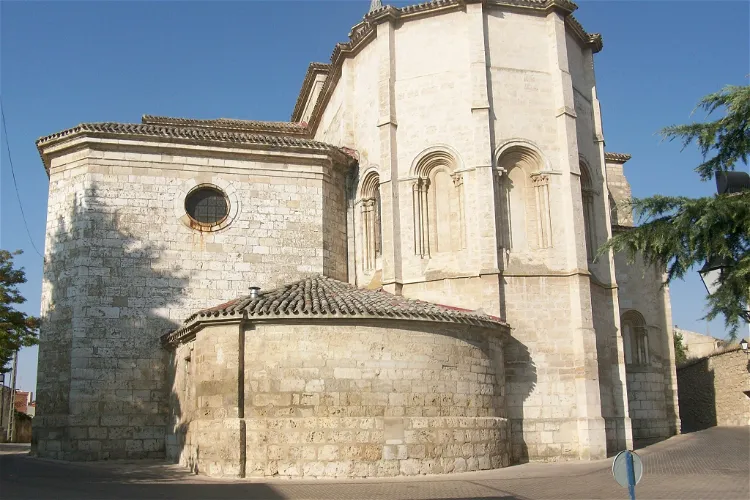
Church of Santa María de la Asunción
DueñasThe Church of Santa María de la Asunción is a significant Catholic place of worship located in the Plaza de la Paz in Dueñas, Spain. This church is part of the historic and artistic ensemble that makes up the historic center of Dueñas. It is a place of great historical and architectural interest, making it a worthwhile stop for tourists visiting the area.
Testamentary Real Palace
Medina del CampoToday, the Testamentary Royal Palace serves as an interpretive center dedicated to the life and times of Queen Isabella the Catholic. Visitors can immerse themselves in the history of this influential queen and her era. Special focus is given to the queen's will and codicil, as well as Christopher Columbus's Third Voyage, providing a comprehensive understanding of this pivotal period in history.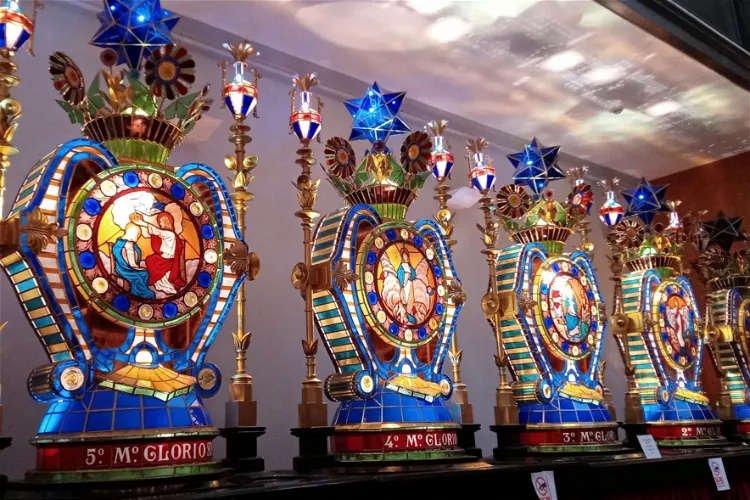
Lantern Museum
Vitoria-GasteizThe Lantern Museum, known as Farolen museoa in Basque and Museo de los Faroles in Spanish, is situated in the city of Vitoria-Gasteiz, in the province of Álava, in the Basque Country of Spain. This museum is home to the lanterns used in the Rosary of the Lanterns procession, a significant event celebrated every 4th of August during the Virgen Blanca Festivities.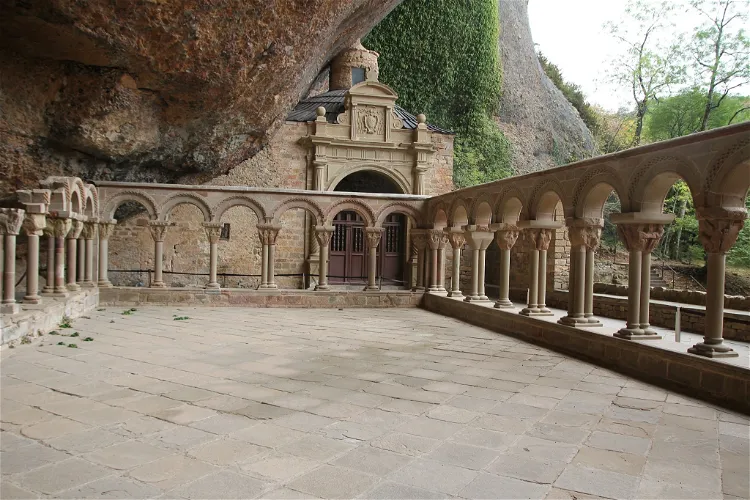
Monastery of San Juan de la Peña
JacaThe Monastery of San Juan de la Peña is a significant religious complex located in the town of Santa Cruz de la Serós, to the southwest of Jaca, in the province of Huesca, Spain. This location is known for its historical and architectural importance, making it a point of interest for tourists visiting the region.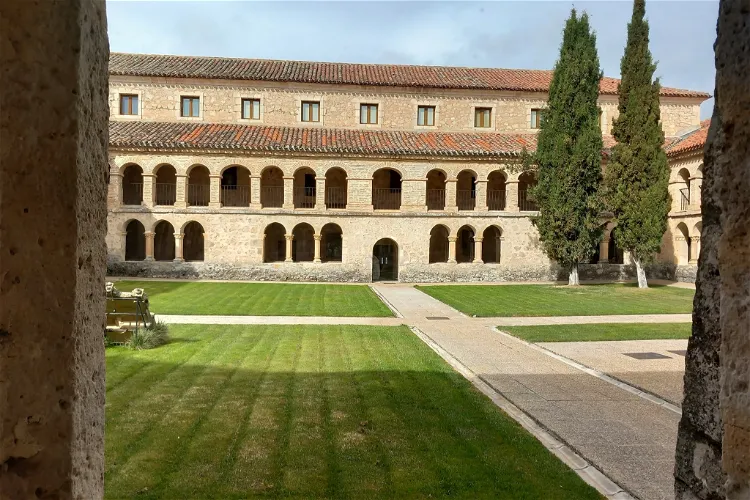
Monasterio de Santo Domingo
CaleruegaThe Real Monasterio de Santo Domingo de Guzmán is a significant historical site located in Caleruega, in the province of Burgos, Castilla y León, Spain. This location is known for its rich history and architectural beauty, making it a point of interest for tourists visiting the region.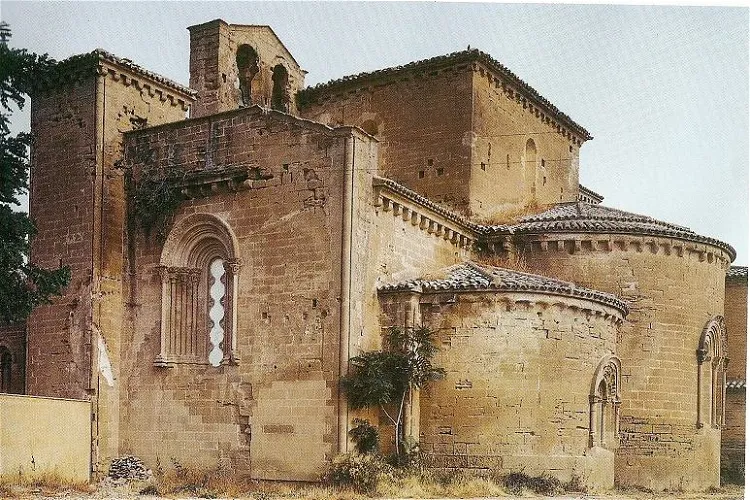
Monastery of Santa María de Sigena
Villanueva de SigenaThe Real Monasterio de Santa María de Sigena is a convent situated in the town of Villanueva de Sigena, in the region of Aragon, Spain. This historical site offers visitors a glimpse into the rich history and architectural beauty of the region.
ArsMalaga
MálagaArsMalaga is housed in a grand bishop's palace (Palacio Episcopal) from 1762, opposite the cathedral. The museum holds a collection of religious art as well as a collection of old African coins. Besides displaying its permanent collection, the museum organises temporary exhibitions.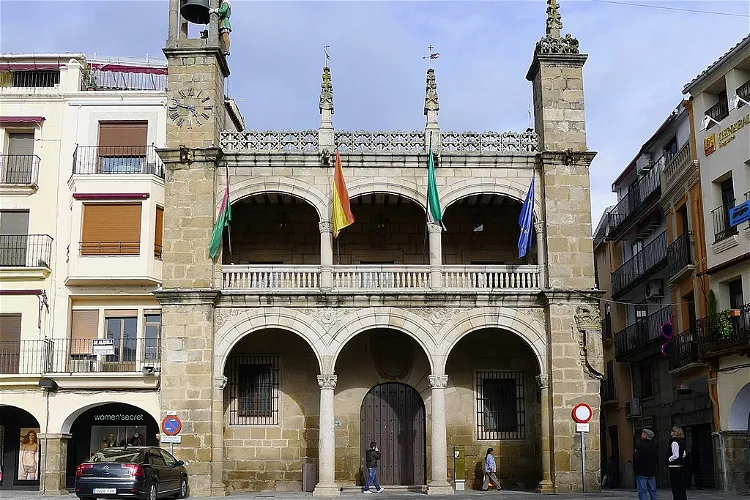
Plasencia City hall
PlasenciaThe Municipal Palace, located in the heart of Plasencia in the Plaza Mayor, serves as the headquarters of the municipality's City Hall. This historic building is a significant landmark in the city and offers a glimpse into the rich history and architectural heritage of Plasencia.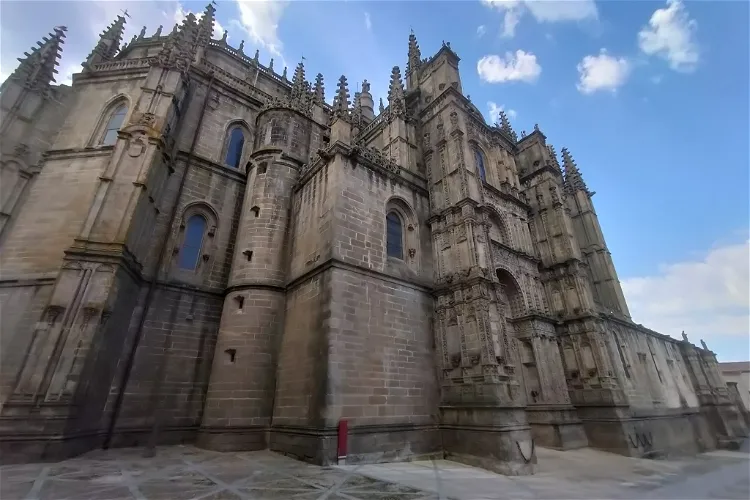
Cathedral of Plasencia
PlasenciaThe Cathedral of Plasencia is a complex structure consisting of two or three parts. The "Old Cathedral" was built in the 13th and 14th centuries and is now used as a museum. The "New Cathedral" was begun in the late 15th century. Additionally, there is a medieval cloister (claustro) with an adjoining chapter house (sala capitular). All parts of the cathedral are made of precisely hewn sandstones, showcasing the architectural prowess of the time.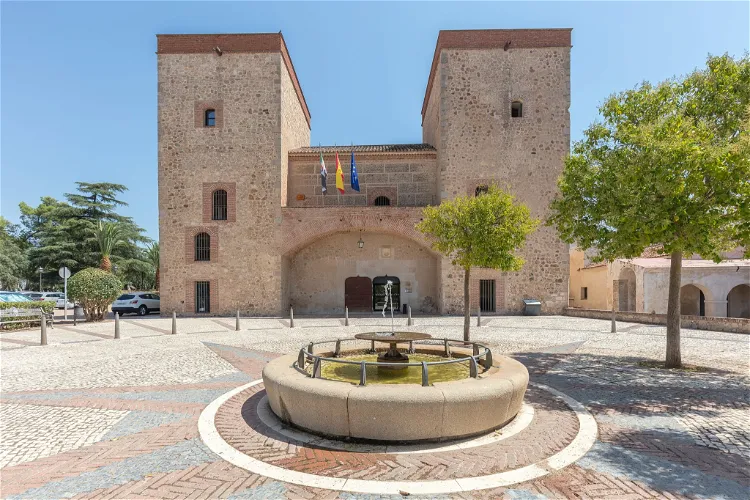
Archaeological Museum of Badajoz
BadajozThe Archaeological Museum of Badajoz is housed in a building of historical and architectural significance. It is located within the precinct of the Islamic Alcazaba, which is the highest point in Badajoz. This location not only provides a unique setting for the museum but also adds to the historical richness of the exhibits.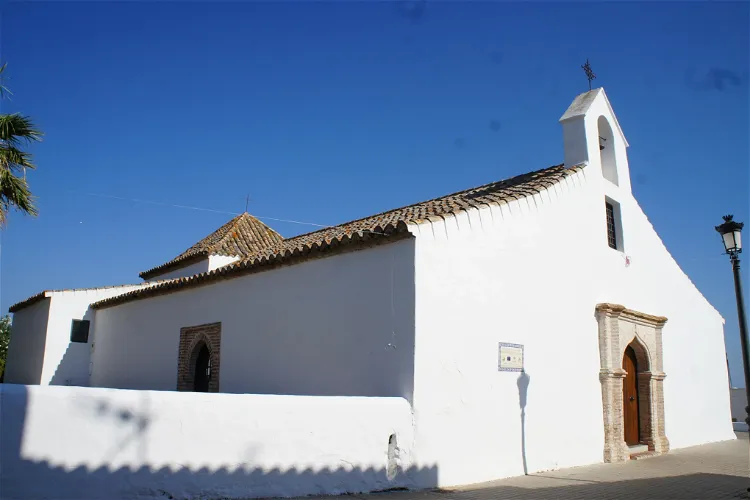
Hermitage of San Sebastian
AyamonteThe Hermitage of San Sebastian is a historical site located in the municipality of Ayamonte, in the province of Huelva, Spain. This structure was built in the early 16th century and is a clear representation of the Sevillian style that was prevalent in the area during that time.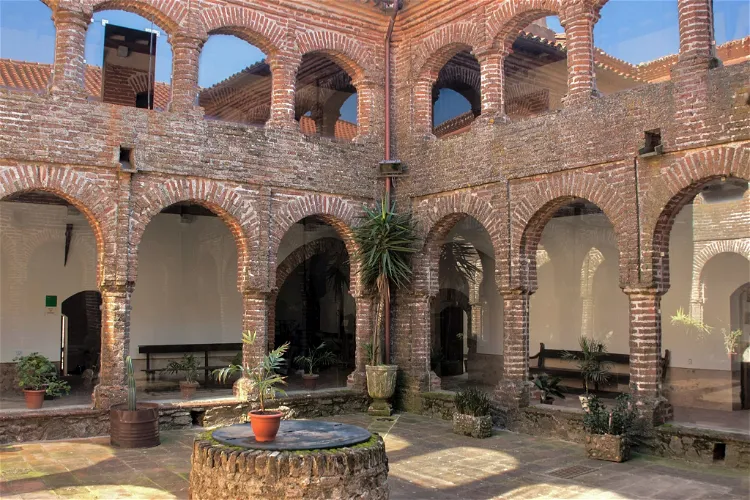
Tentudía Monastery
MonesterioThe Tentudía Monastery, a fortified church, is located in the Spanish town of Calera de León, in the province of Badajoz. It is situated in the Sierra de Tentudía, at the highest point of the province, 1104 m above sea level. This location offers visitors a unique opportunity to enjoy panoramic views of the surrounding landscape.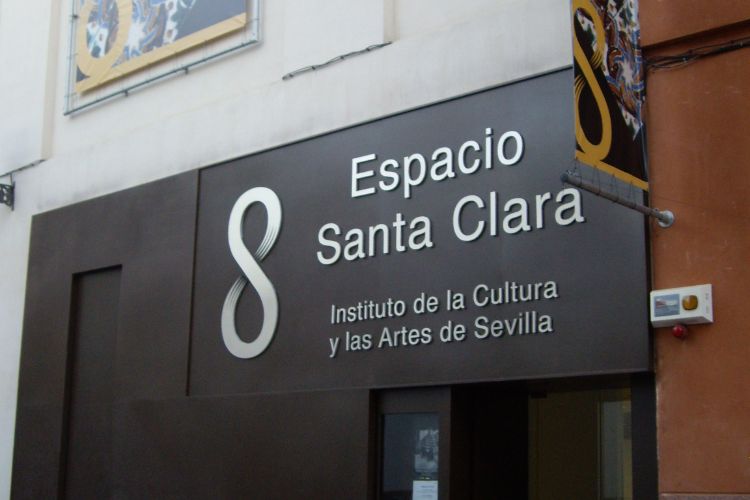
Centro Cultural Santa Clara
SevilleCentro Cultural Santa Clara (The Santa Clara Space) is a cultural center located in the Convent of Santa Clara in Seville. The place is used for artistic and historical exhibitions, as well as presentations on different topics.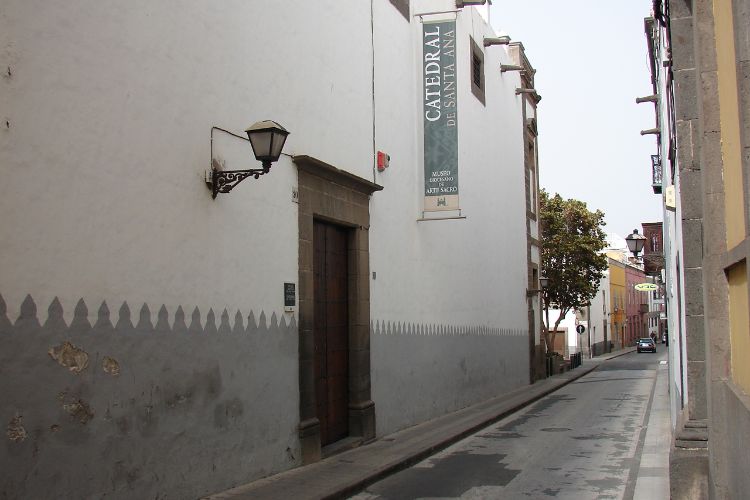
Museo Diocesano de Arte Sacro
Las Palmas de Gran CanariaMuseo Diocesano de Arte Sacro (The Diocesan Museum of Sacred Art of Las Palmas de Gran Canaria) is housed in the so-called Patio de Los Naranjos, built in the 17th century. The old cathedral buildings that surround it, house the museum, that is connected to the cathedral through the so-called Renais
Muestra del Belén Xerez
Jerez de la FronteraCovering an area of 1,418 square meters, El Museo del Belén offers a wide variety of nativity scenes in different styles and formats. The museum's exhibits include a spectacular 240 square meter Hebrew-style nativity scene, popular Christmas dioramas, and an exhibition area for nativity scenes in various styles and formats. This variety showcases the creative diversity of this popular art form.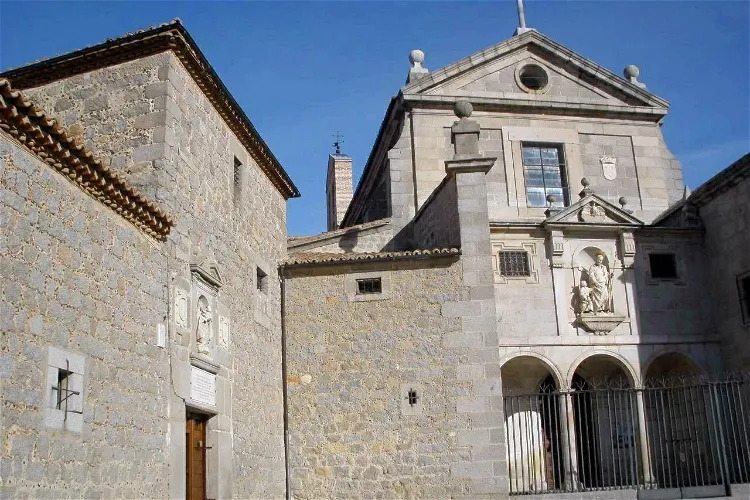
Convent of San José
ÁvilaThe Convento de San José, located in Ávila, Spain, is a monastery of Discalced Carmelite nuns. It is conveniently situated not far from the city center, providing easy access for visitors. However, it is positioned outside the medieval walls, offering a unique perspective of the city's historical architecture.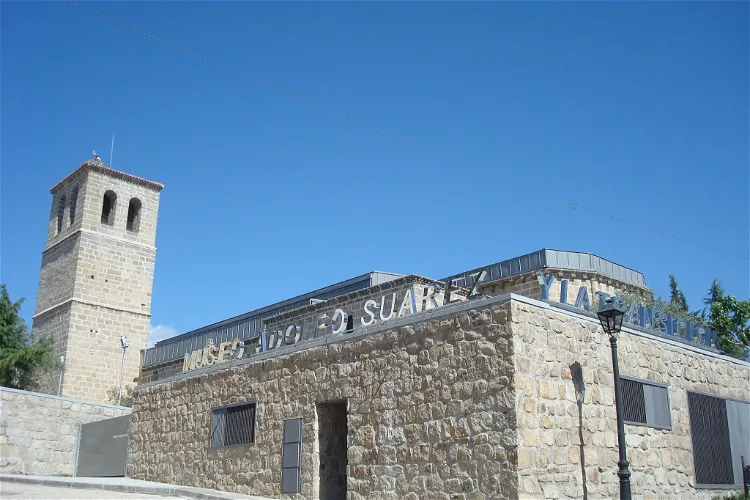
Adolfo Suárez Museum and Transicion
CebrerosThe Adolfo Suárez and Transition Museum (MAST) is a museum of contemporary history located in Cebreros, Ávila, Spain. It pays tribute to the former Prime Minister Adolfo Suárez and the people who fought for the arrival of democracy in Spain. The museum is a testament to the historical process of the Spanish Transition and is a tribute to all those who worked and fought for the arrival of Democracy.
Museo de Iconos de la Casa Grande
Torrejón de ArdozLa Casa Grande is a significant landmark located in the Spanish municipality of Torrejón de Ardoz, Madrid. This location is easily accessible and offers a unique blend of history and culture for visitors.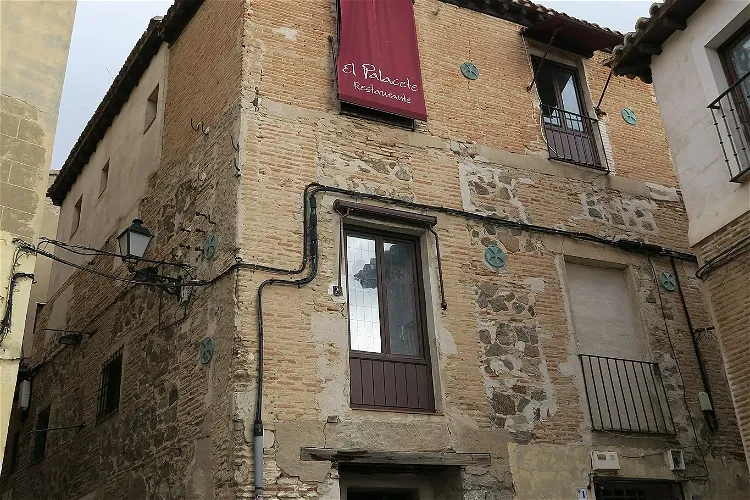
Museum of the Templars
ToledoThe Casa del Temple in Toledo, Spain, is a historical structure dating back to the 11th and 12th centuries. Its general structure is typically Andalusian, supported by the vaults of the basement and organized around a central courtyard. This architectural style is a testament to the rich cultural history of the region and provides a unique insight into the architectural practices of the time.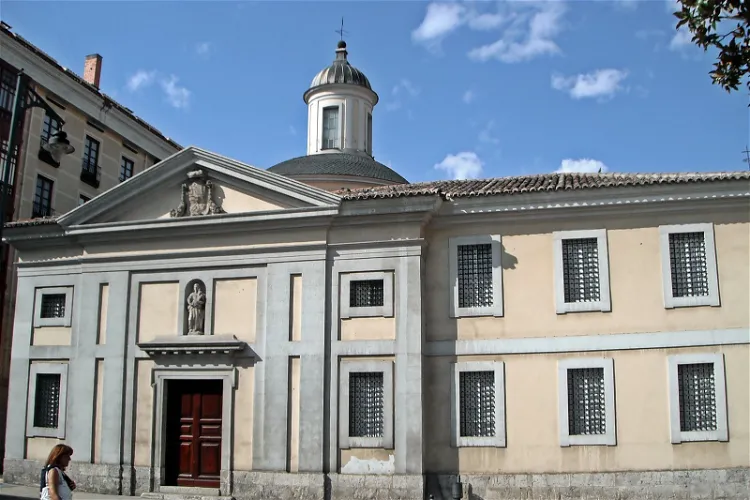
Real Monasterio de San Joaquín y Santa Ana
ValladolidThe Museum of the Monastery of San Joaquin and Santa Ana is a sacred art museum located within the church of the Royal Monastery of San Joaquin and Santa Ana in Valladolid, Spain. This museum houses valuable pieces of Spanish Baroque sculpture and is a significant cultural and historical site.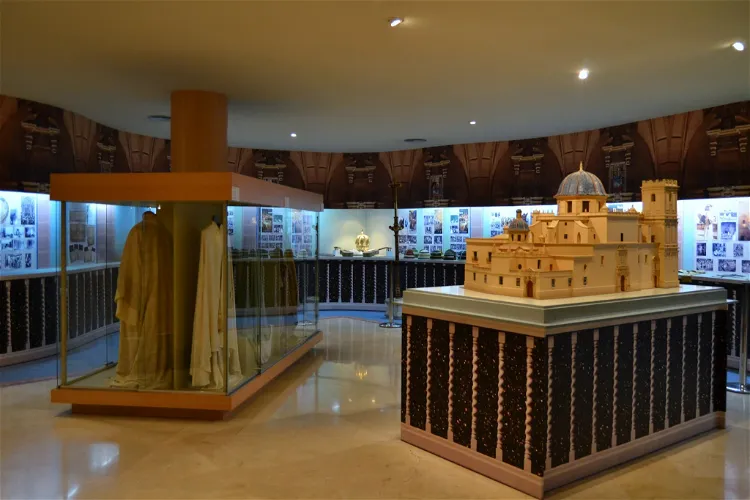
Museo de la Festa
ElcheThe Museo Municipal de la Festa in Elche, located in Alicante, Spain, was established with the aim of encapsulating the enchantment of the Festa and making it accessible to visitors all year round. This museum serves as a gateway to experience the unique cultural celebration, regardless of the time of your visit.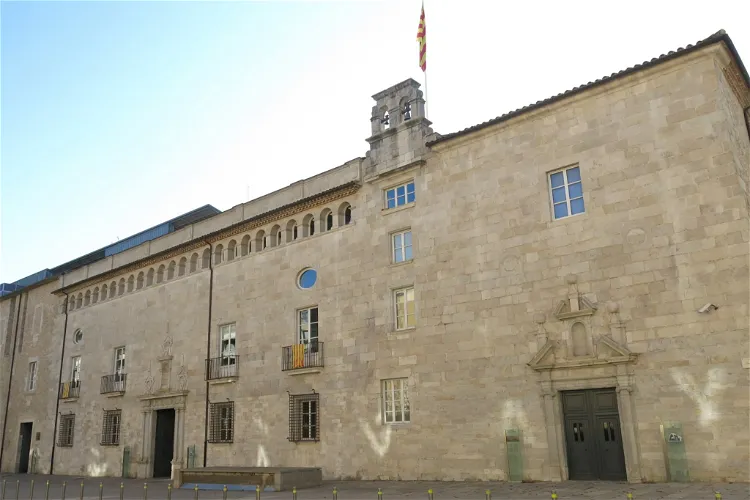
Antic Hospital de Santa Caterina
GeronaThe Antic Hospital de Santa Caterina is a significant historical site in Gerona, Spain. Constructed in the 17th century, it was originally built to cater to the city's population's needs. Since 2010, it has been serving as the headquarters of the Generalitat de Catalunya in the region. The hospital's functions were transferred to a new building in the neighboring town of Salt in 2009.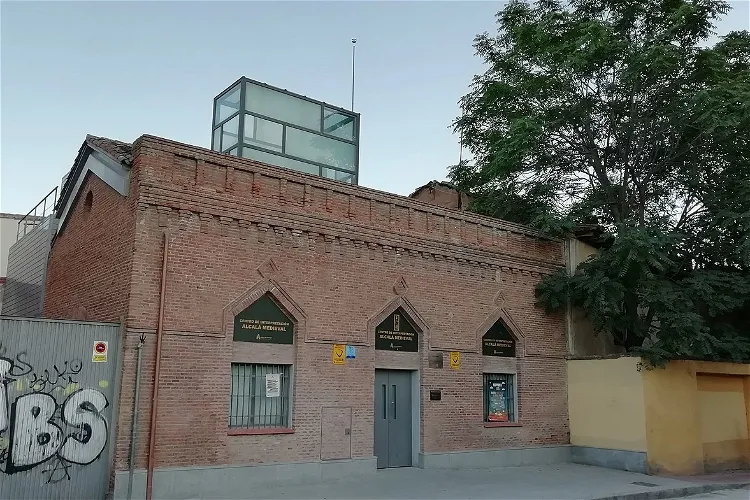
Burgo de Santiuste Intepretation Center
Alcalá de HenaresThe Interpretation Center of Alcalá Medieval is spread across three floors: the ground floor, the first floor, and the basement. These floors are organized with informative panels featuring plans and photographs, interactive monitors, and display cases. The ground floor narrates the city's origins, tracing its evolution through different settlements to the present day. The first floor is solely dedicated to the Middle Ages, showcasing the various religions that coexisted in the Burgo de Santiuste and the growth of the city around the Church of the Holy Children. The basement focuses on the evolution of the medieval town, highlighting the establishment of the University of Alcalá and the recognition of Cisneros' work, leading up to the Renaissance period.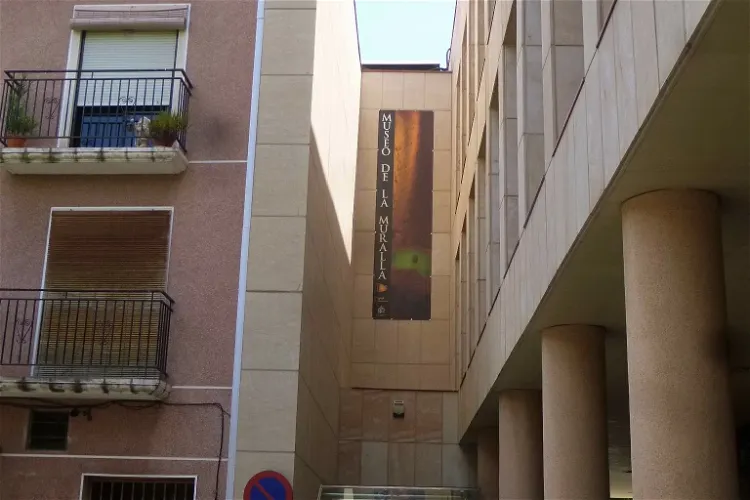
Wall Museum
OrihuelaThe Wall Museum of Orihuela is home to significant archaeological remains. These include Arab and Christian houses, a complete canvas of the Wall, and other fascinating constructions. One of these is a well-preserved Muslim bath located outside the walls. The bath has a reception room, cold room, temperate room, hot room, and a room where water was heated.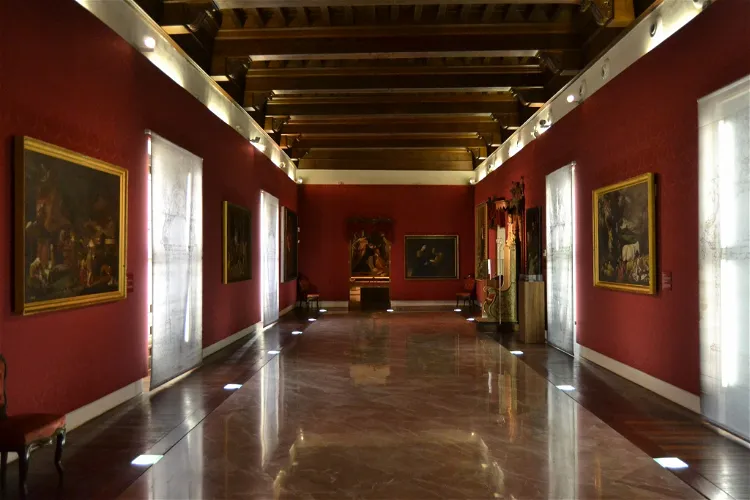
Diocesan Museum of Sacred Art of Orihuela
OrihuelaThe Diocesan Museum of Sacred Art is housed in the Episcopal Palace of Orihuela, a location that has been declared a Site of Cultural Interest. This historic building not only provides a fitting setting for the museum's collection, but is itself a significant part of the cultural heritage of Orihuela. Visitors to the museum will have the opportunity to explore this historic building as they view the museum's collection.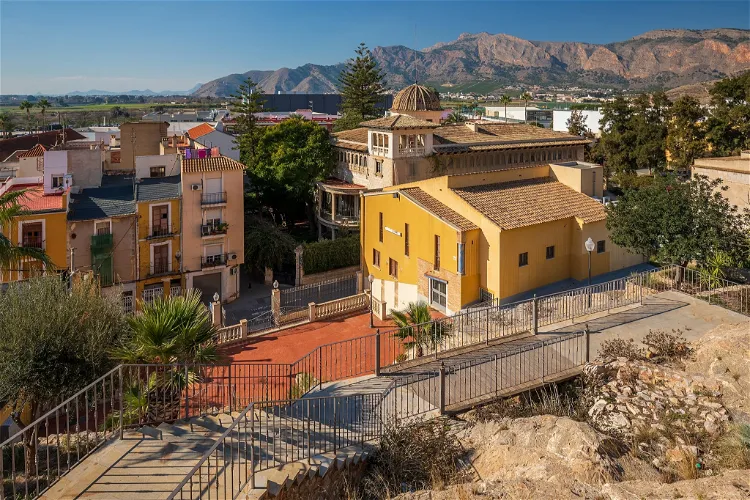
Museum of the Reconquest
OrihuelaThe Museum of the Reconquest Festivities is housed in two beautifully refurbished 19th-century buildings. These historic structures add a unique charm to the museum, making it not just a place to learn about the Reconquest festivities, but also a site to appreciate the architectural beauty of the 19th century.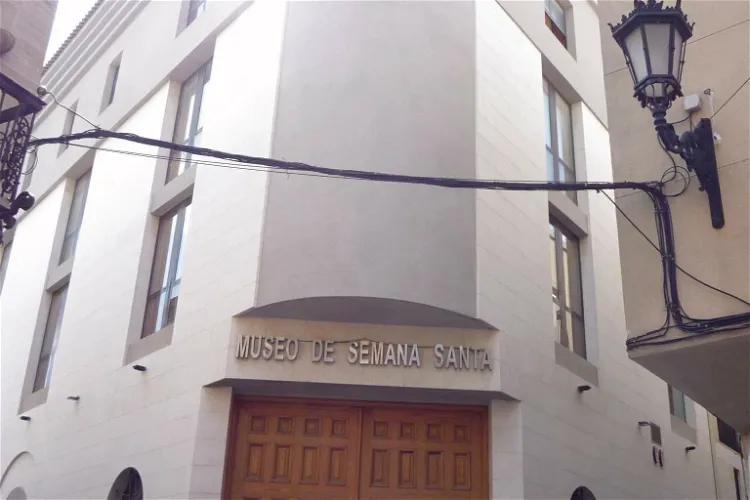
Holy Week Museum
OrihuelaThe Holy Week Museum of Orihuela is situated on the site of the Church of Our Lady of Mercy. This location is significant as it still retains its 16th century Renaissance facade, providing a historical backdrop to the museum's extensive collection of sacred art.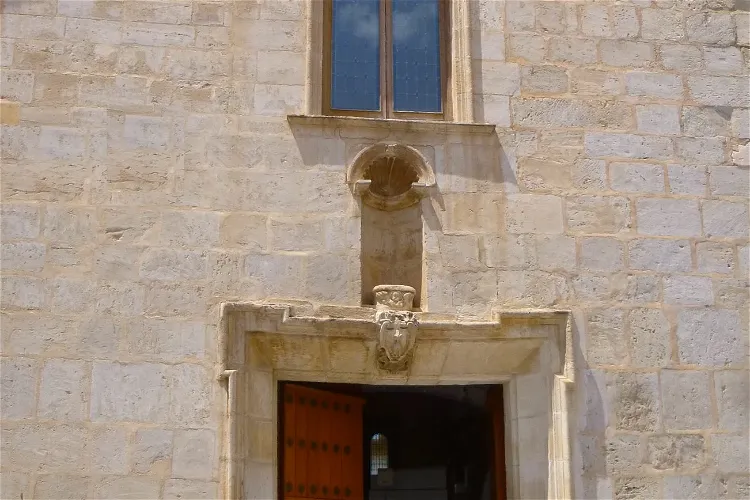
Regional Archaeological Museum of Orihuela
OrihuelaThe Regional Archaeological Museum of Orihuela is situated in the church and men's room of the former municipal hospital San Juan de Dios. This unique location adds a historical charm to the museum, making it an interesting place to visit for those interested in architecture and history.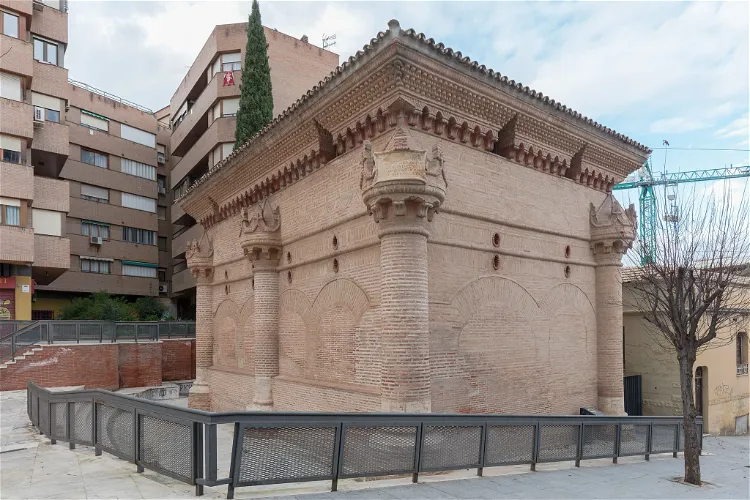
Chapel of Luis de Lucena
GuadalajaraThe Chapel of Luis de Lucena, also known as Nuestra Señora de los Ángeles or de los Urbina, is a significant historical site located in the Spanish city of Guadalajara. It was constructed in the mid-16th century by the humanist Luis de Lucena and was initially connected to the Church of San Miguel until its demolition in 1887. Since then, the chapel has stood as an isolated building, rich in history and cultural significance.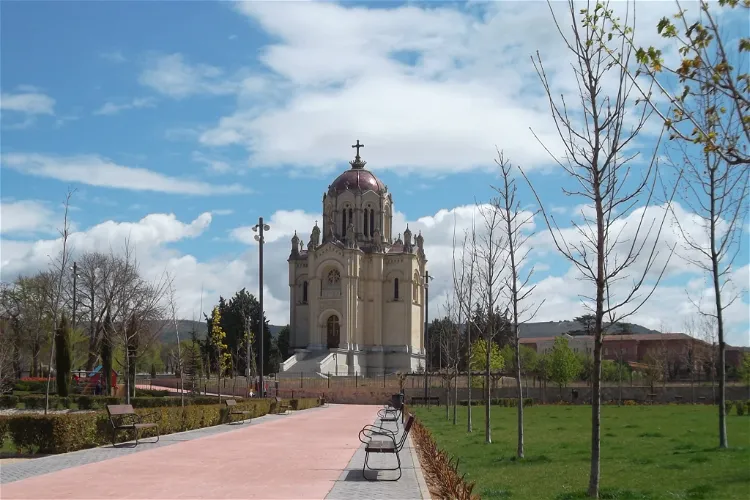
Pantheon of the Duchess of Sevillano
GuadalajaraThe Pantheon of the Countess of Vega del Pozo and Duchess of Sevillano is a significant monument in the Spanish city of Guadalajara. It was constructed between the years 1882 and 1916. This historical monument was commissioned by Doña María Diega Desmaissières y Sevillano, the Countess of Vega del Pozo and Duchess of Sevillano, in honor of her father and deceased family members who are buried there.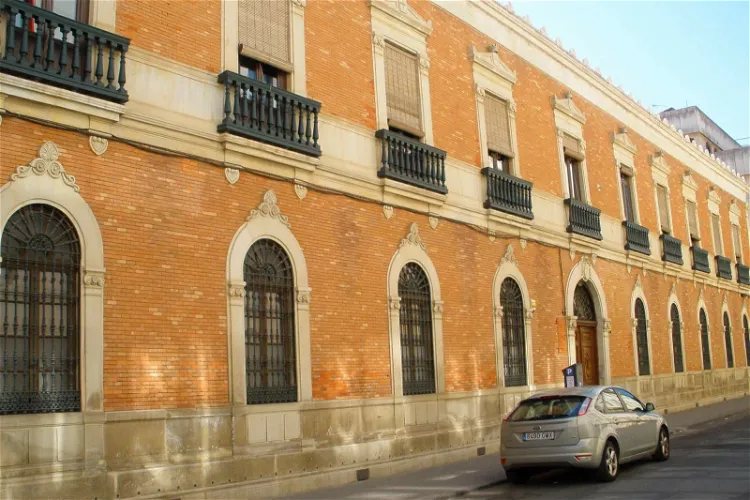
Diocesan Museum
Ciudad RealThe Diocesan Museum in Ciudad Real is a unique institution that collects, preserves, exhibits, and enhances the sacred works of the reference diocese. This museum serves as a repository of religious art and artifacts, providing a glimpse into the rich history and culture of the region. Visitors can explore a wide range of exhibits, from ancient liturgical objects to devotional items, all of which are recognized not only for their religious significance but also for their historical and artistic value.
Museum of Sacred Art El Tesoro De La Concepción
La OrotavaEl Tesoro de la Concepción is a museum of sacred art located in La Orotava, Tenerife, Canary Islands, Spain. It is part of the Parish of Our Lady of the Conception and houses a vast collection of religious art and artifacts. The museum's collections span over 500 years of the parish's history and are displayed in seven rooms adjacent to the church.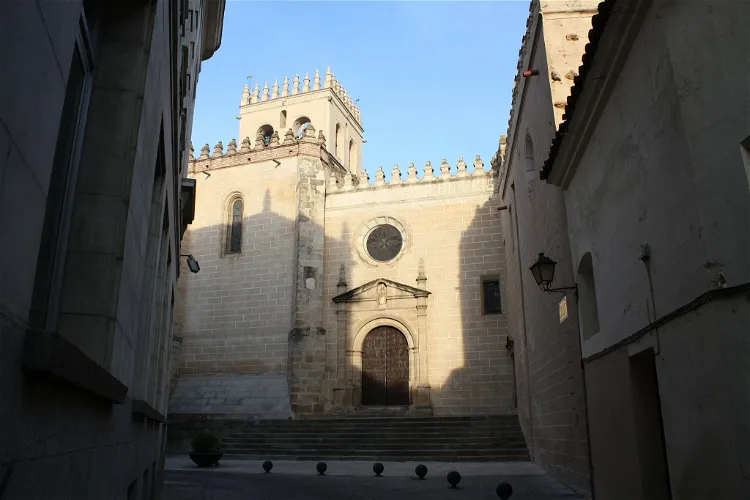
Cathedral Museum
BadajozThe Cathedral Museum of Badajoz is an integral part of the Metropolitan Cathedral of San Juan Bautista de Badajoz. Located in the city of Badajoz, Spain, the museum is a significant part of the cathedral's structure, offering visitors a unique opportunity to explore both the religious and historical aspects of the region.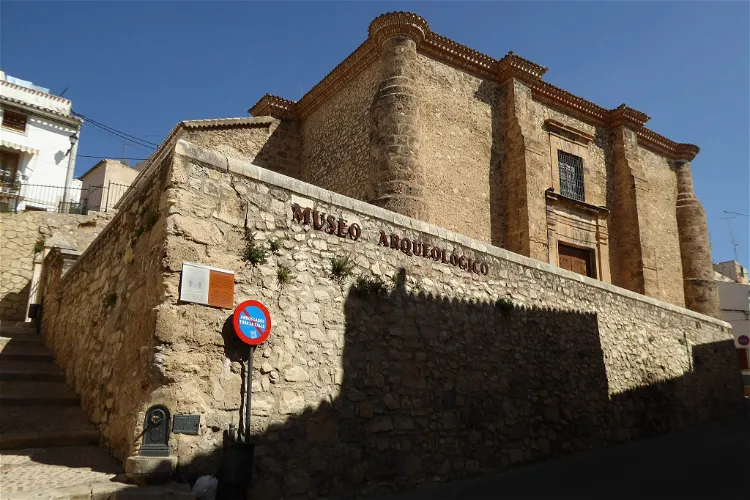
Soledad Municipal Archaeological Museum
Caravaca de la CruzThe Soledad Church, a former fortified Renaissance church from the second half of the 16th century, is located in the town of Caravaca de la Cruz, Spain. Today, it serves as the home of the local Archaeological Museum. This historical building offers a unique blend of religious and historical significance, making it a fascinating destination for tourists interested in both history and architecture.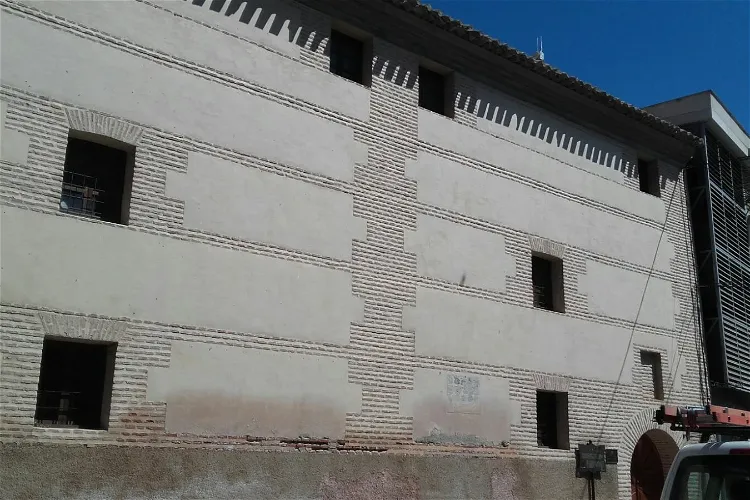
La Encomienda Archaeological Museum
CalasparraThe museum provides a comprehensive overview of the history of Calasparra, from prehistory to the medieval period (13th century AD). It places a special emphasis on the findings from the Islamic site of Villa Vieja. These findings offer a unique insight into the Islamic culture and history of the region.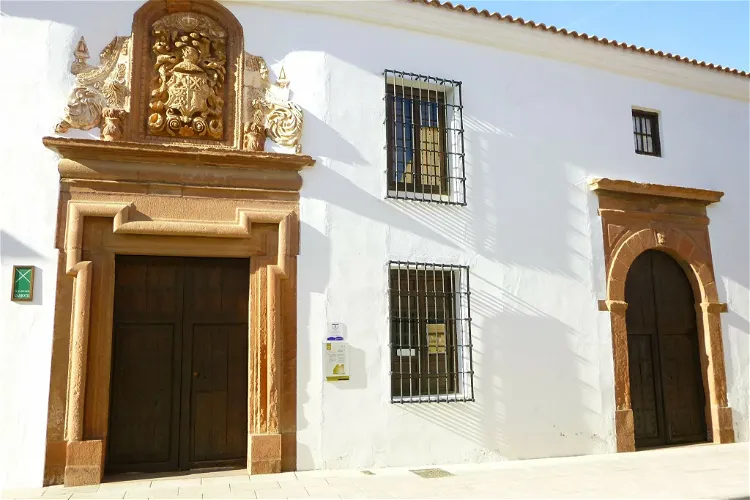
Municipal Museum of Alcázar de San Juan
Alcázar de San JuanThe Municipal Museum of Alcázar de San Juan, located in the old Posada de Santo Domingo in the Municipality of Alcázar de San Juan, is an archeology museum that also hosts contemporary art exhibitions. It is situated in the province of Ciudad Real, in the region of Castilla-La-Mancha, Spain.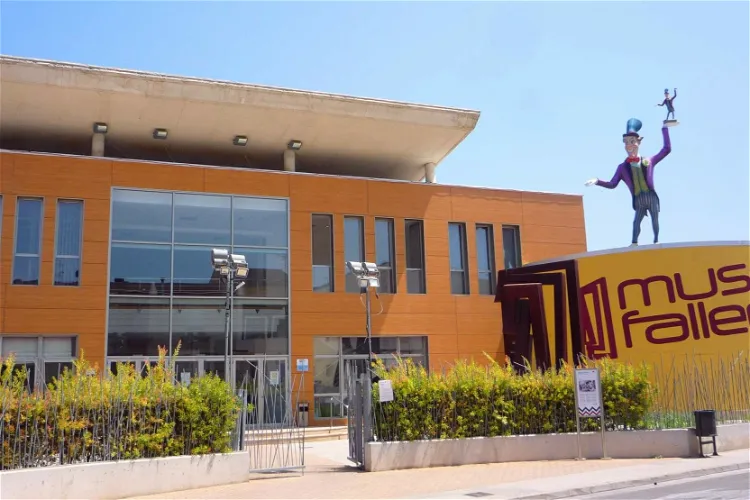
Faller Museum of Gandia
DeniaThe Faller Museum of Gandia, located in Valencia, is a unique institution dedicated to the interpretation of the Fallas festival. This museum provides an in-depth understanding of this traditional celebration, making it an interesting destination for tourists interested in local culture and traditions.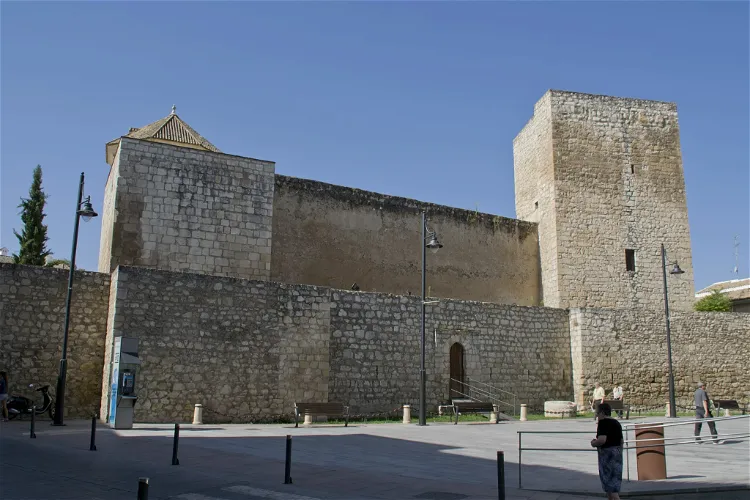
Castle of the Moral
LucenaThe Castle of the Moral, also known as the Castle of Lucena, is a military fortress located in the municipality of Lucena, Córdoba, Spain. It is a significant historical site that dates back to the arrival of the Almohad Empire in the villages in 1148. The castle was strategically built to safeguard the Cora Cabra-Baena, which was possibly very unstable and governed through the control of North-South commercial caravans.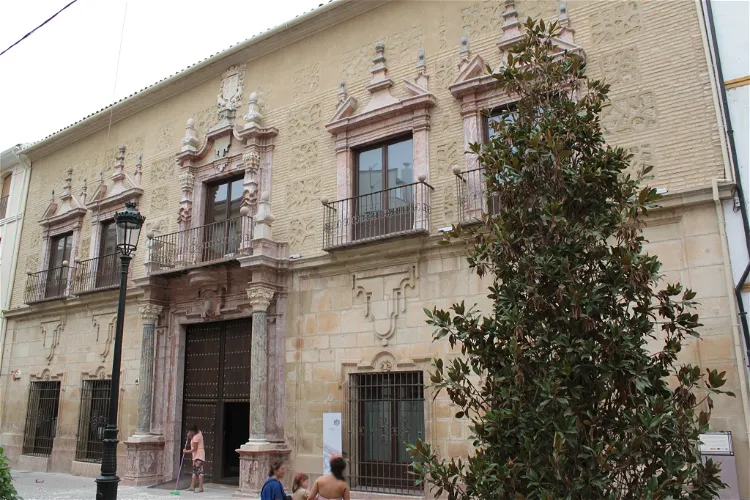
Palace of the Counts of Santa Ana
LucenaThe Palace of the Counts of Santa Ana, situated in the historic center of Lucena, Andalusia, Spain, is a significant example of 18th-century private architecture. Since its inauguration in 2011, it has been home to the Lucena Interpretation Center, providing visitors with a deep understanding of the city's history and culture.
Baeza Cathedral
BaezaThe Baeza Cathedral was classified as a cultural asset in 1931, a testament to its historical and architectural significance. Furthermore, since 2003, it has been part of the UNESCO World Heritage, along with other historical buildings in the city. This recognition underscores the cathedral's global importance and makes it a noteworthy destination for tourists.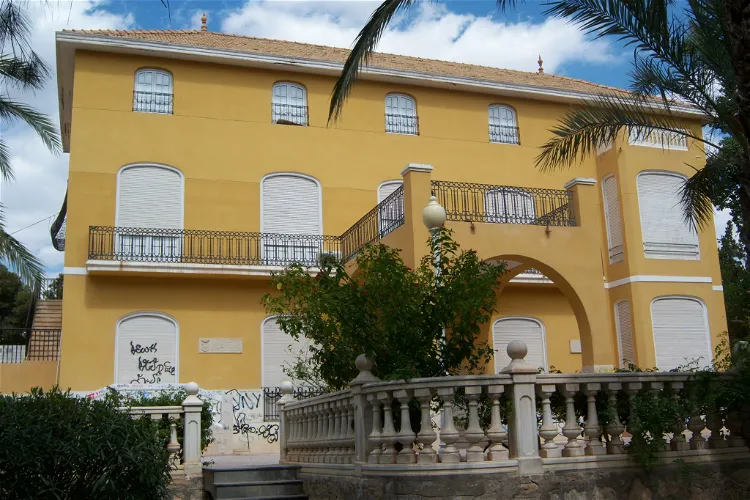
Archaeological Museum of Crevillent
CrevillentThe Archaeological Museum of Crevillent is housed in the Casa del Parque, a beautiful neoclassical building constructed in 1927 by the architect Juan Vidal Ramos. The building is located in the northeastern part of the urban area, next to the most important green area of the town, providing easy access and ample parking for large vehicles.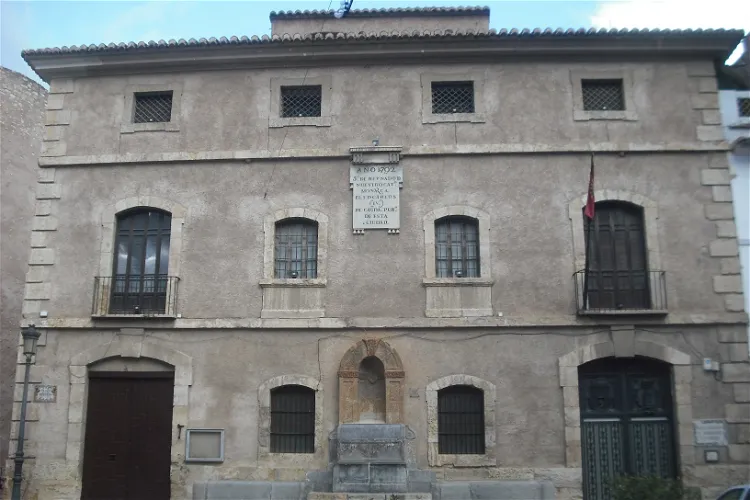
Segorbe Municipal Archaeological and Ethnological Museum
SegorbeThe Segorbe Archaeological and Ethnological Museum is housed in a neoclassical building that was erected in 1792. This building, known as the old Barracks House, is conveniently located in the Mesones square. It is in close proximity to the medieval aqueduct and the Botxí and Jail towers, making it a part of the rich historical landscape of Segorbe.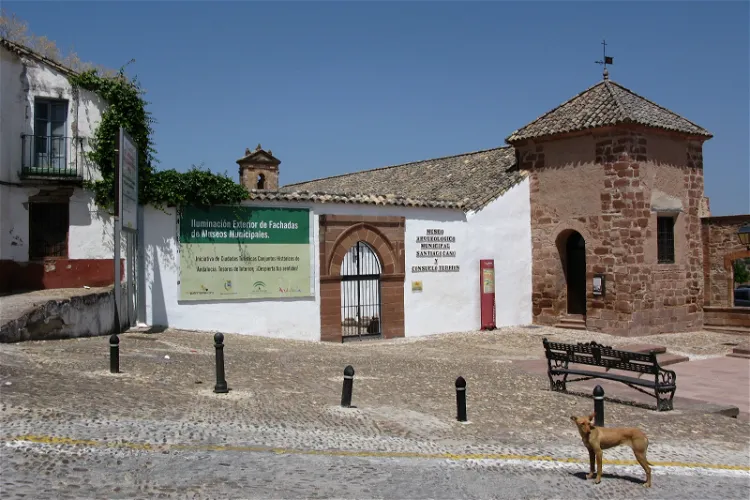
Archaeological Town Museum
MontoroThe Archaeological Municipal Museum of Montoro is a city-owned and managed museum located in the city of Montoro, in the province of Córdoba, Spain. This museum is a significant part of the city's cultural heritage and offers visitors a chance to explore the rich history of the region.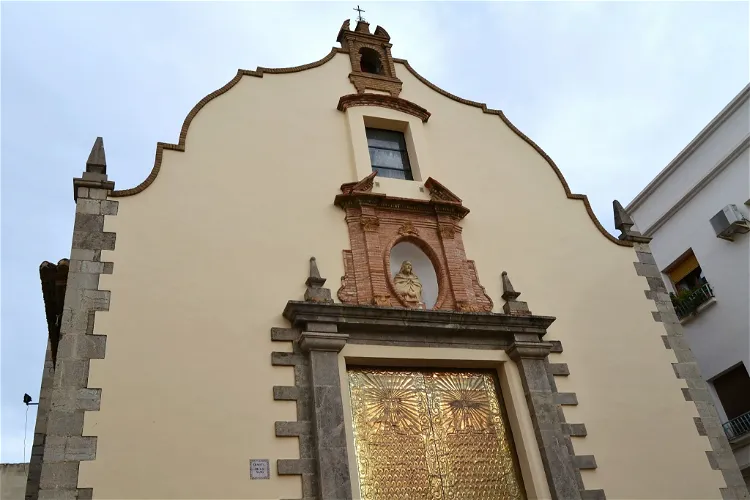
Ermita de la Sang
SaguntoThe Ermita de la Sangre, also known as the Ermita de la Purísima Sangre, is a significant historical site located in Sagunto, Spain. It is the largest hermitage in the entire municipality. This baroque-style building, constructed in the 17th century, offers a unique glimpse into the architectural and cultural history of the region.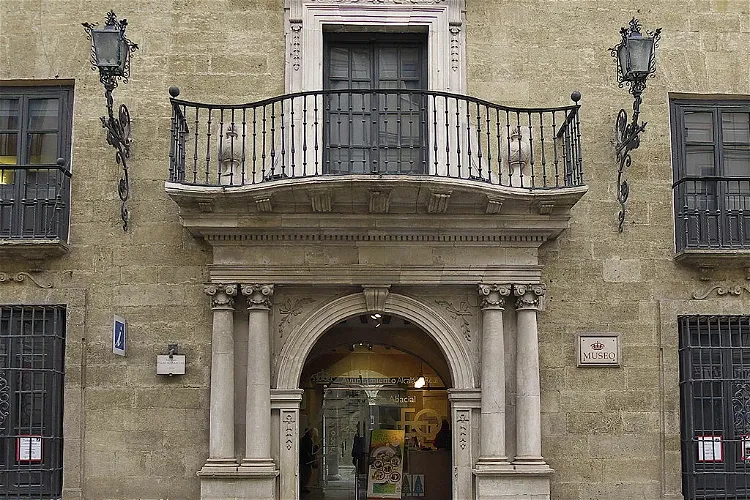
Abbey Palace
Alcalá la RealThe Municipal Museum of Alcalá la Real is a significant cultural institution in the province of Jaén, Spain. Managed and owned by the municipality, it is situated in the town of Alcalá la Real. The museum offers a rich collection of archaeological, ethnological, anthropological, paleontological, and scientific exhibits, making it a fascinating destination for those interested in a wide range of disciplines.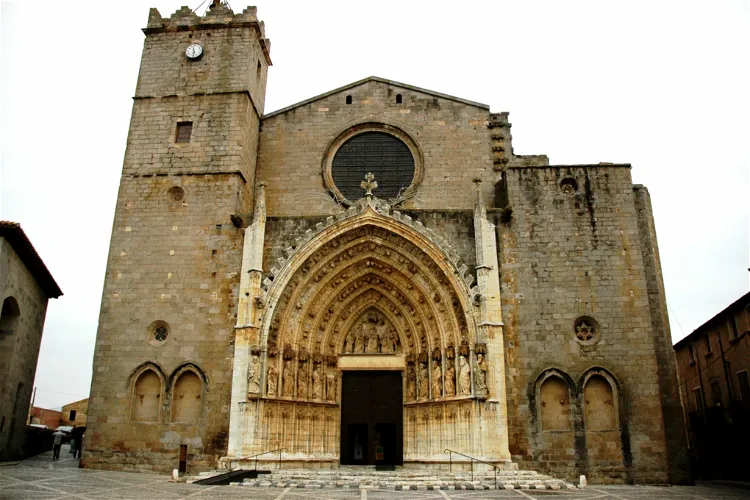
Basilica of Santa Maria
Castelló d'EmpúriesThe Santa Maria Basilica, situated in the municipality of Castelló d'Empúries in Girona, Catalonia, Spain, has been considered the Empordà Cathedral for centuries. Despite this, it has never been officially granted this status by papal authorities. The basilica is the second largest building in the Costa Brava, surpassed only by the Girona Cathedral, and its size is sufficient to justify cathedral status.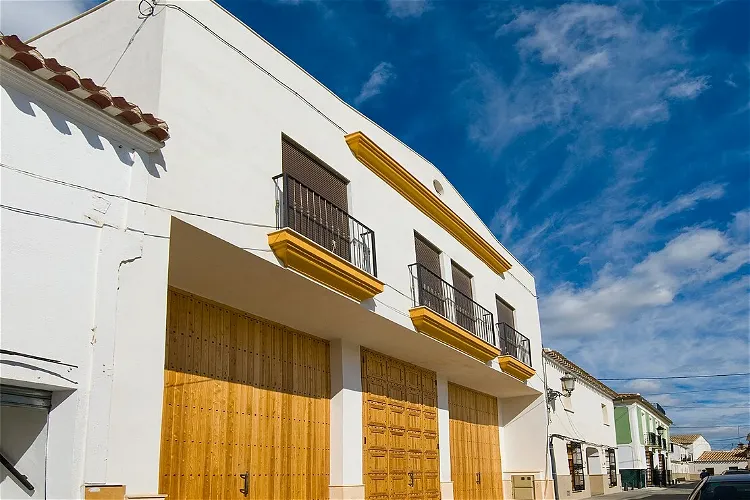
Las Cofradías House Museum
Puerto LumbrerasThe Las Cofradías House Museum is situated in the town of Puerto Lumbreras, in the Region of Murcia, Spain. It is conveniently located near other notable landmarks such as the Casa de los Duendes and the Parroquial Church of Nuestra Señora del Rosario. This makes it an ideal stop for tourists who are exploring the area and are interested in learning more about the local culture and history.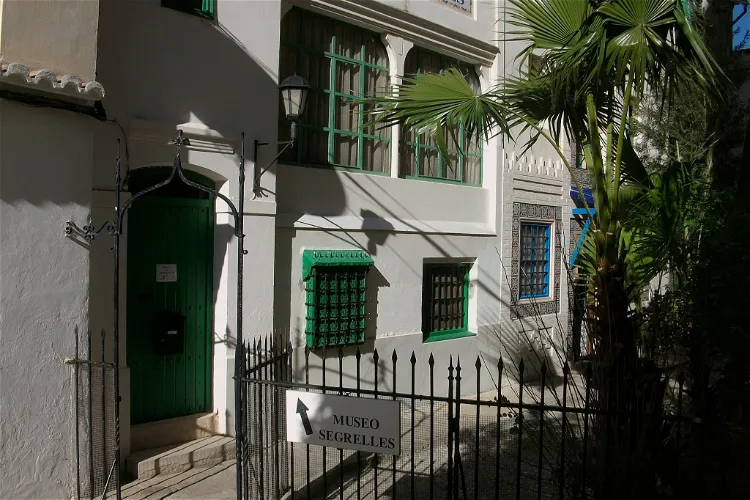
José Segrelles House-Museum
AlbaidaThe Segrelles Museum is a tribute to the life and work of the Valencian painter Josep Segrelles. It is situated in the city of Albaida, in the province of Valencia, Spain. The museum offers a unique opportunity to delve into the artistic journey of this renowned artist.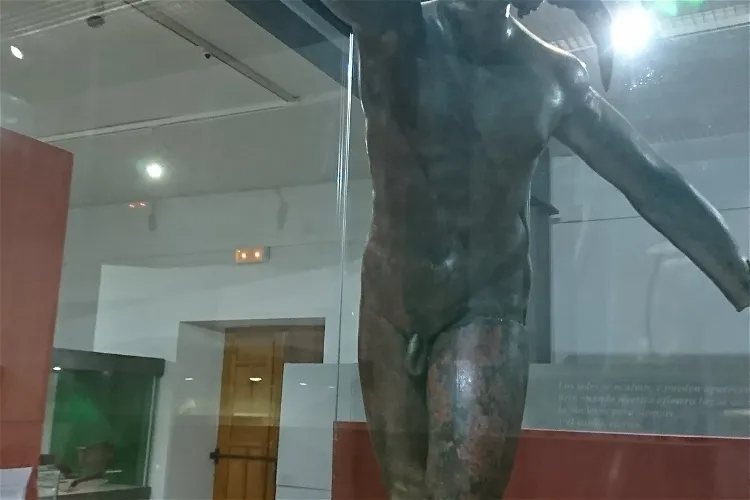
Historical Archaeological Museum of Almedinilla
AlmedinillaThe museum was officially opened in 1999 and occupies a space of 1200 square meters. The exhibition space is divided into three rooms: Sala del Aceite, Sala Íbera, and Sala Romana. Each room is dedicated to a specific period or theme, providing visitors with a comprehensive understanding of the region's history and culture.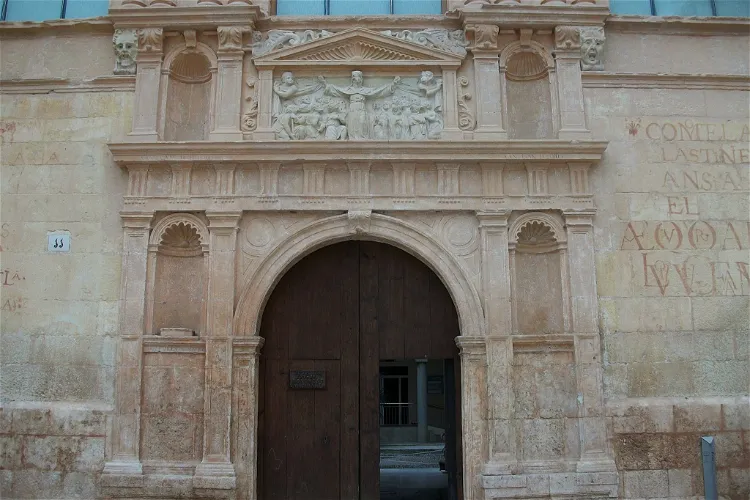
Royal Hospital
JátivaThe Municipal Hospital of Játiva has a rich history that dates back to the 13th century. It was founded by James I of Aragon in 1250, following the reconquest of the city. By the 15th century, the hospital had outgrown its capacity, leading to the need for expansion. This was achieved by acquiring neighboring houses, eventually occupying the entire block. The construction of a new hospital also began during this period, extending into the 16th century. This historical evolution of the hospital provides a fascinating insight into the city's past for tourists.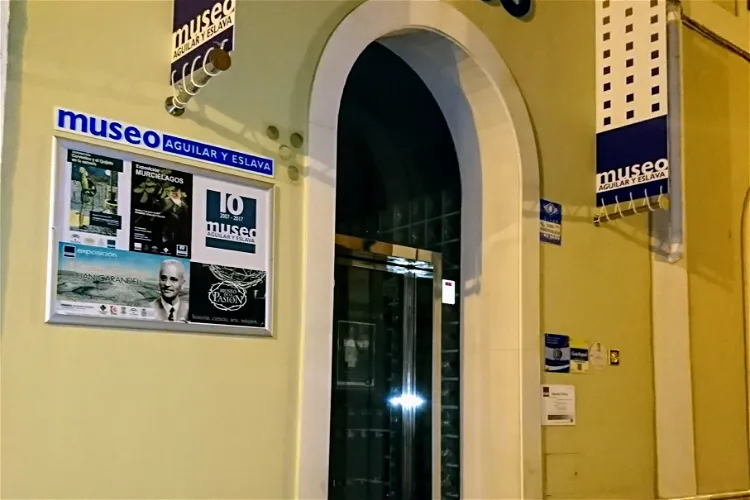
Aguilar y Eslava Museum
CabraThe Aguilar y Eslava Museum is situated in the historic building of the former Royal College of the Purísima de Cabra. This building also houses the IES Aguilar y Eslava and is home to the historical and artistic collections of the Aguilar y Eslava Foundation. The museum's location in a historic building adds a layer of cultural and historical significance to the exhibits on display.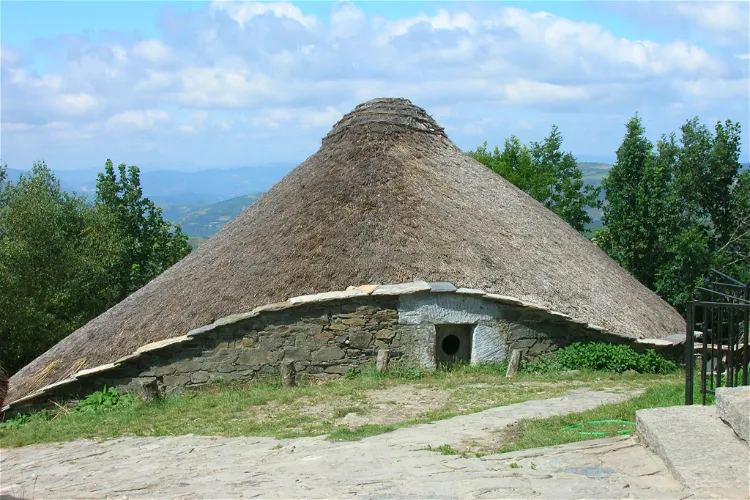
Cebreiro Ethnographic Reserve
Pedrafita do CebreiroVillage with traditional pallozas (slate and granite house with thatched roof) built around a pre-Romanesque shrine from 9th century.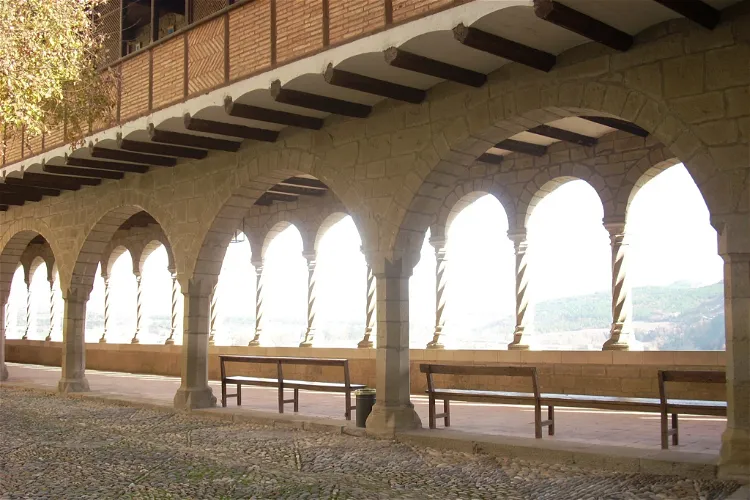
Basílica de la Virgen de la Peña
GrausThe Basilica Nuestra Señora de la Peña, also known as Our Lady of the Rock, is a pilgrimage church situated above the Spanish Pyrenees community of Graus. This location is in the province of Huesca, within the Autonomous Community of Aragon. The church is a significant religious site and offers a unique blend of history and spirituality.
Monastery of Santa María de Huerta
Santa María de HuertaThe Monastery of Santa María de Huerta, located in Santa María de Huerta, Spain, is a historical site with a rich past. Originally a Cistercian abbey, it is now home to a Trappist community. The monastery was founded in 1144 and has endured through various historical periods, including the Mendizábal confiscation in 1835. It was reoccupied by a Cistercian monastic community in 1930, this time following the strict observance.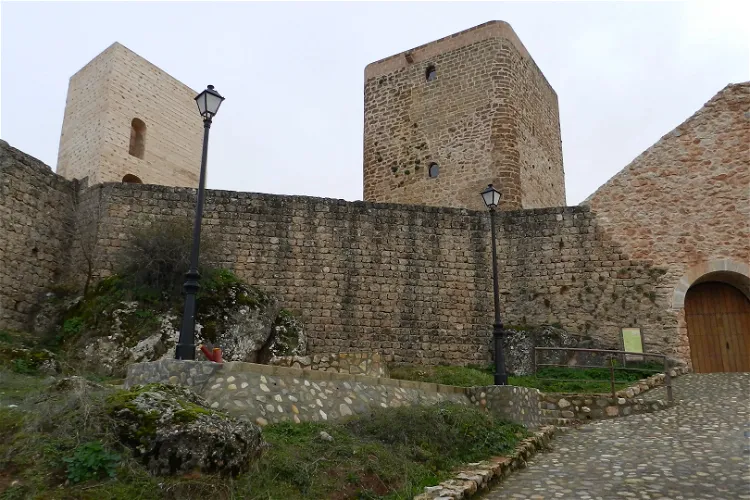
Castillo de Hornos de Segura
HornosThe Hornos Castle, a 13th-century fortress, is situated in the village of Hornos, nestled within the Cazorla, Segura and Las Villas Natural Park in Jaén, Spain. This historical site is a testament to the complex border disputes that took place in the region from the 12th to the 14th century. The castle's primary role was to protect the population and relay messages from the Guadalquivir high valley transmitted by the Bujarcaiz and Bujaraiza Castle towers. It is located at the highest point of the rocky hill on which the village is built.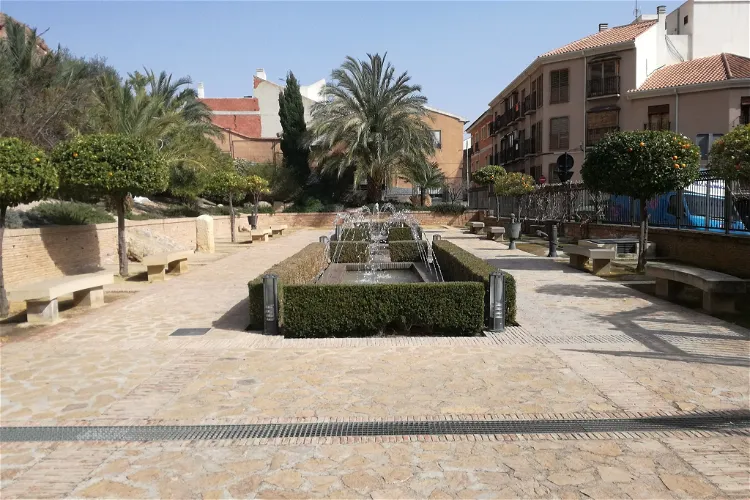
Los Baños Archaeological Museum
Alhama de MurciaThe Los Baños Archaeological Museum, situated in the city of Alhama de Murcia, Spain, was officially opened to the public on May 24, 2005. This museum is a significant cultural landmark in the region, offering visitors a unique opportunity to explore over 2000 years of history.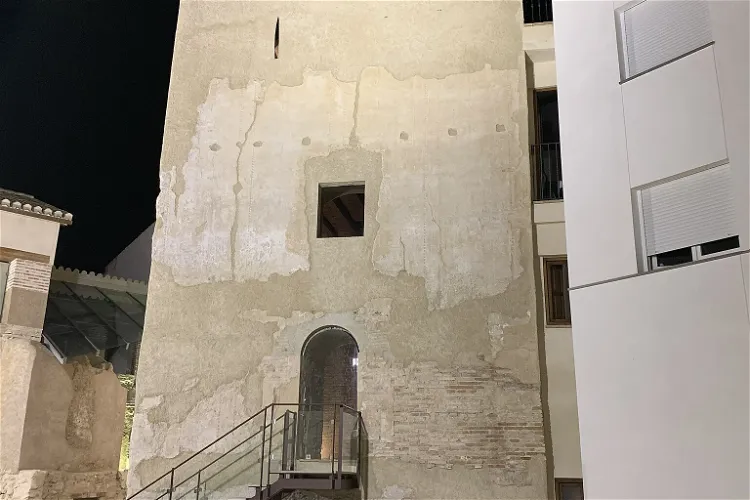
Torreón de Huétor
Huétor TájarEl Torreón de Huétor is a significant historical monument located in the town of Huétor Tájar. It was once part of the fortified wall system of the Alquería de Huétor, a settlement that dates back to the period of the Nasrid dynasty, before the Castilian conquest. The tower is situated on the left bank of the Genil River, in the heart of the Poniente Granadino region. It is a testament to the rich history of the area and offers a glimpse into the architectural and defensive strategies of the past.